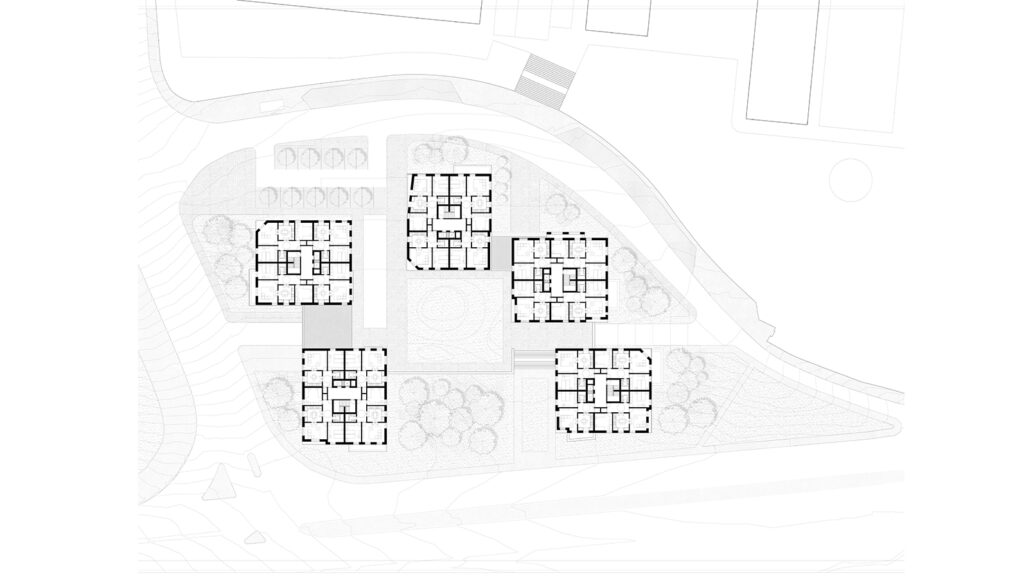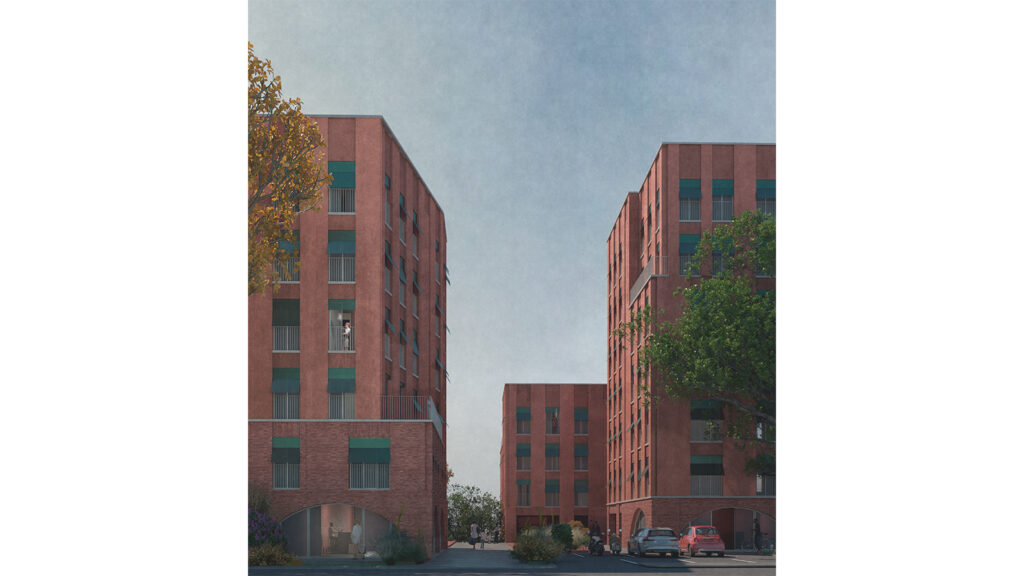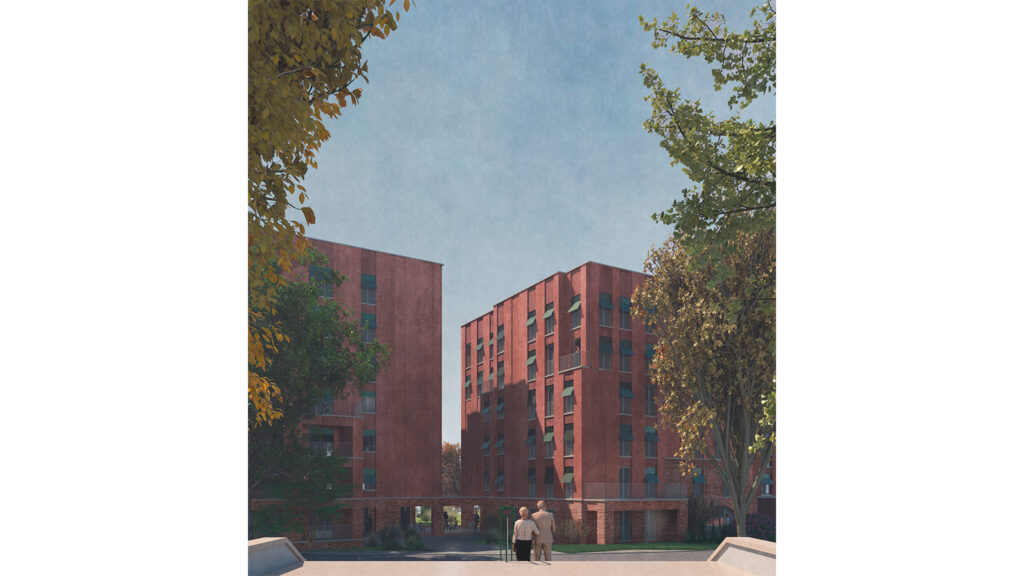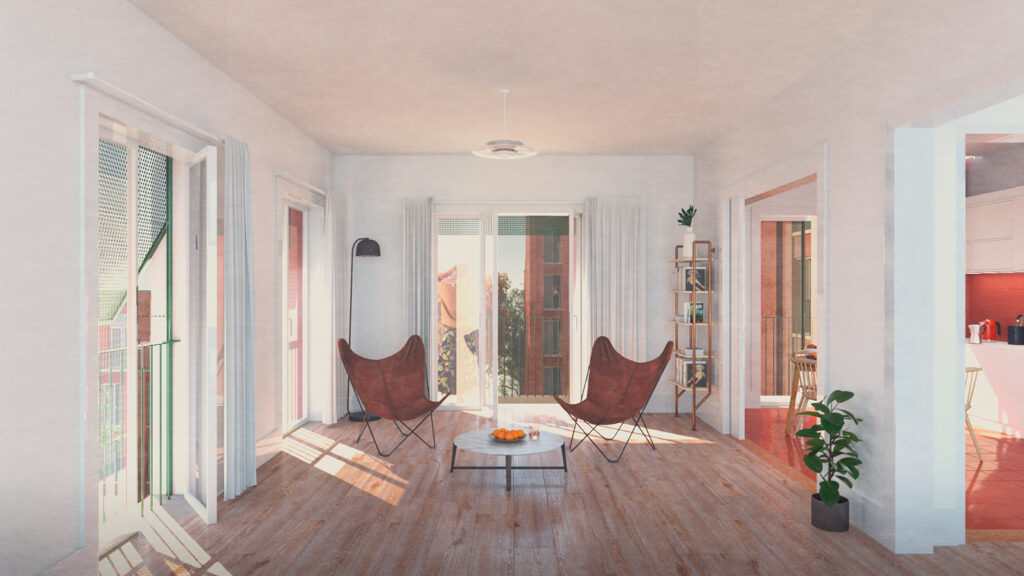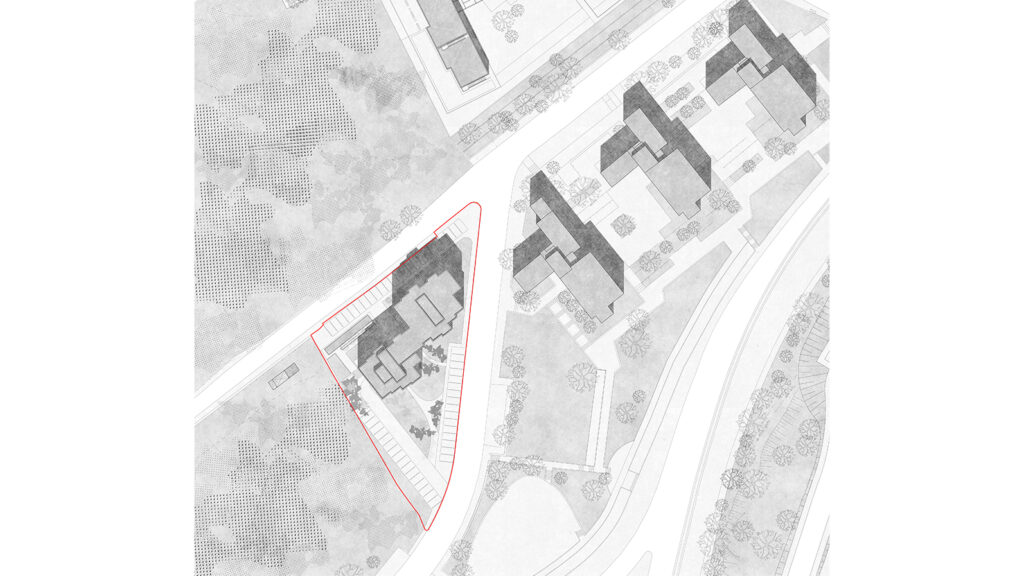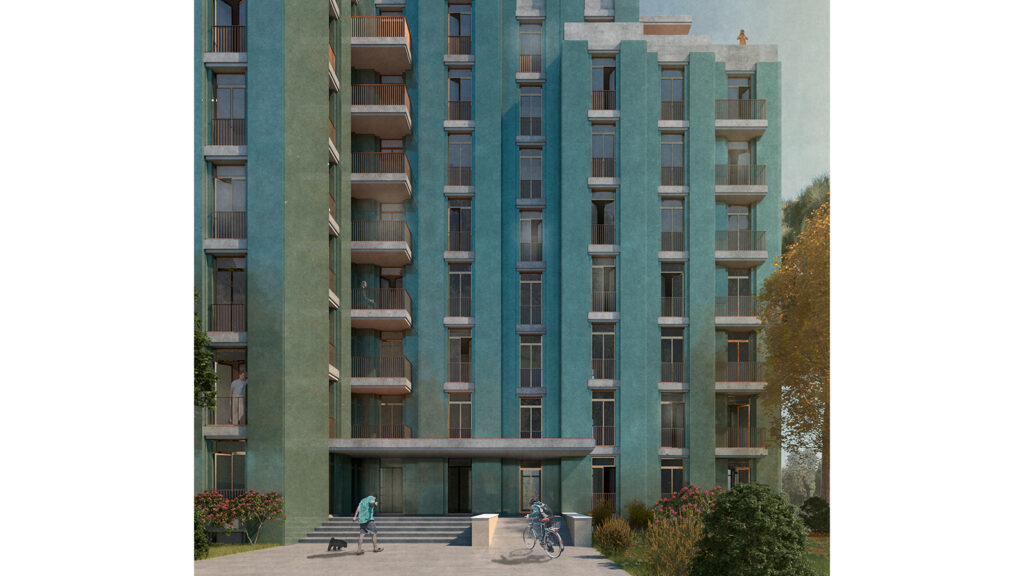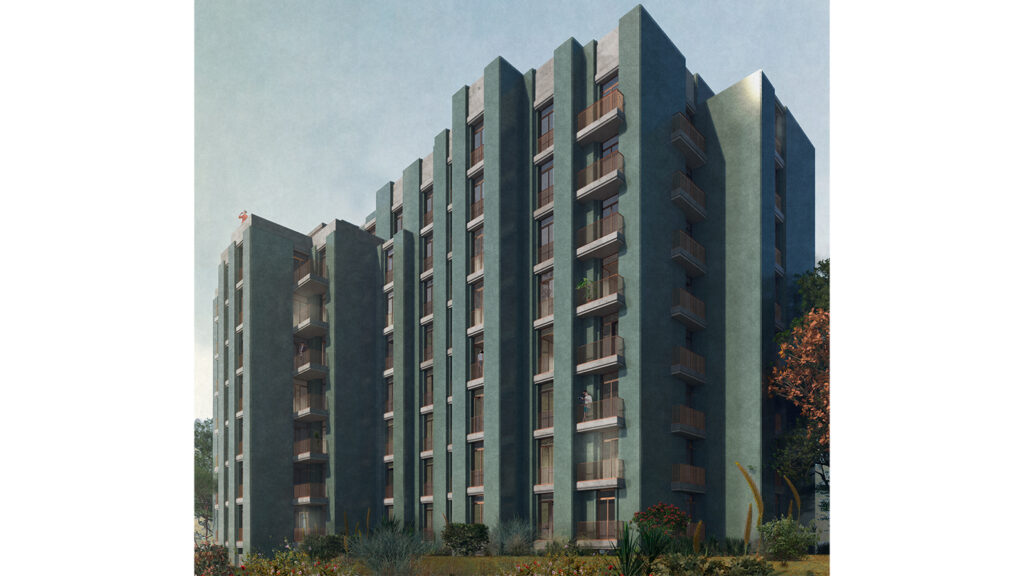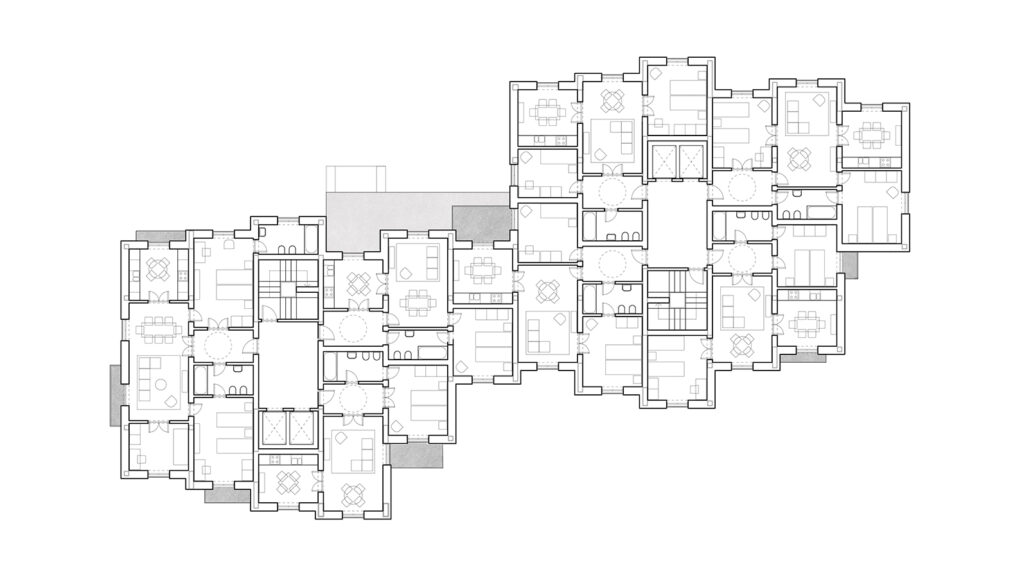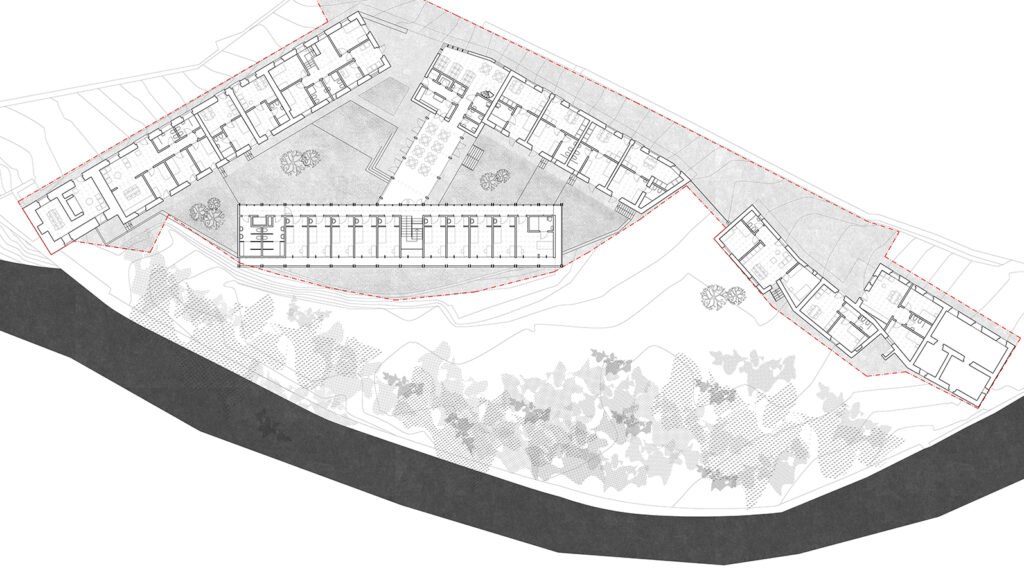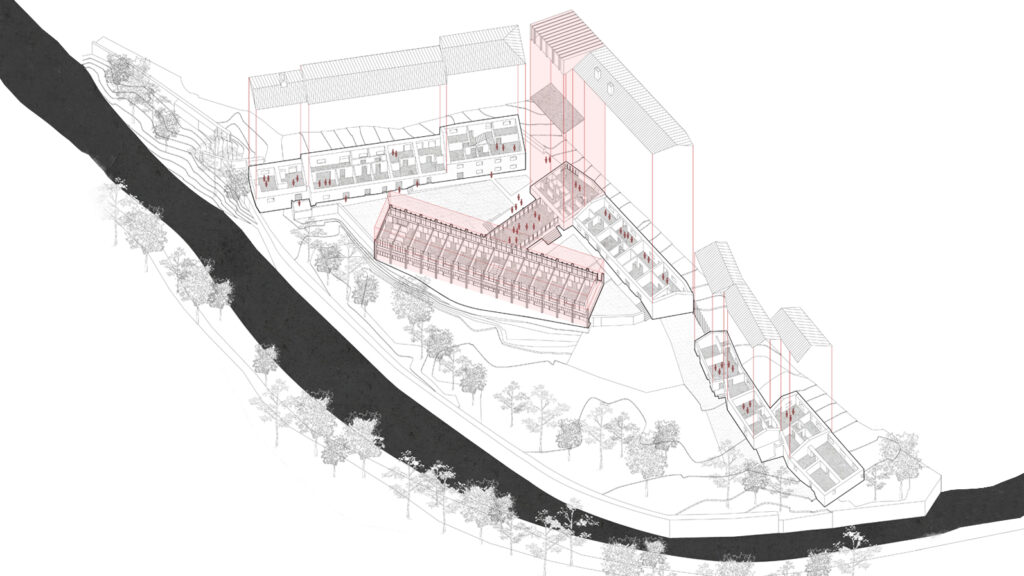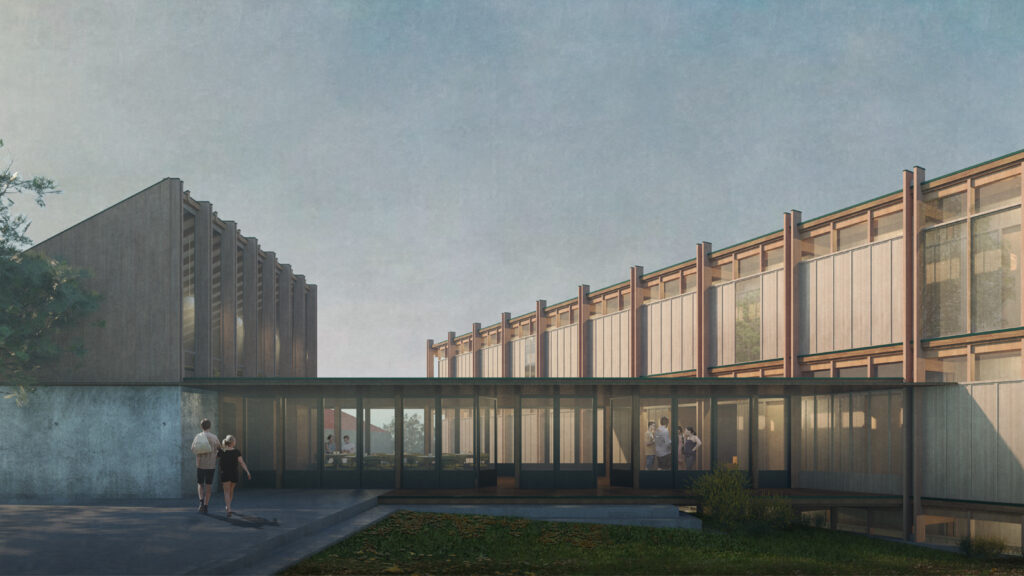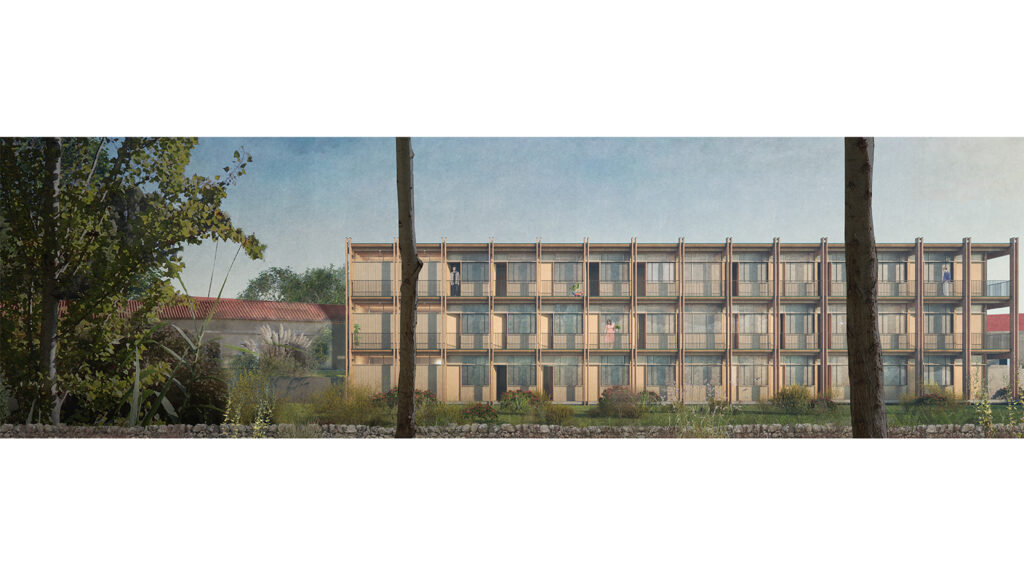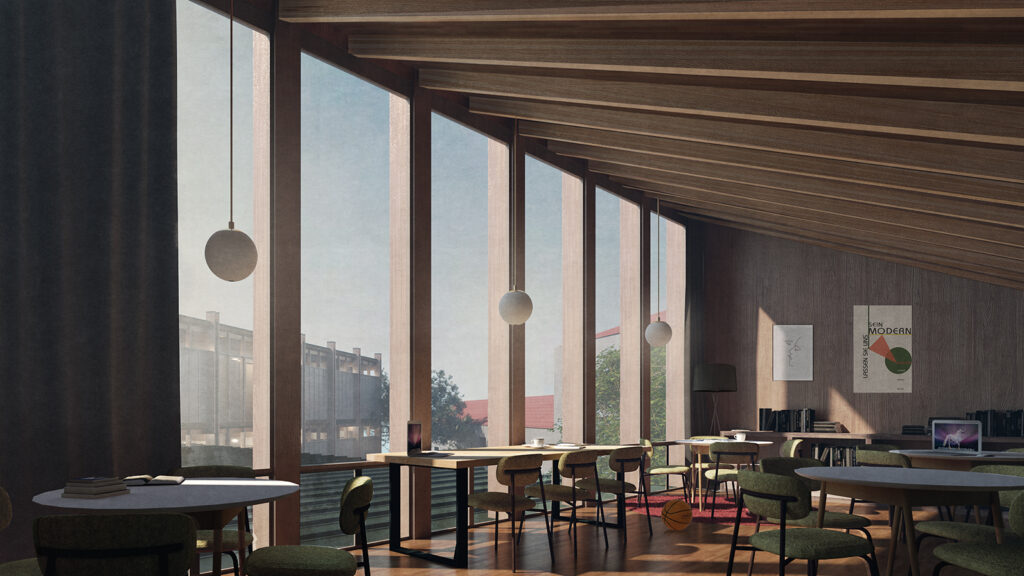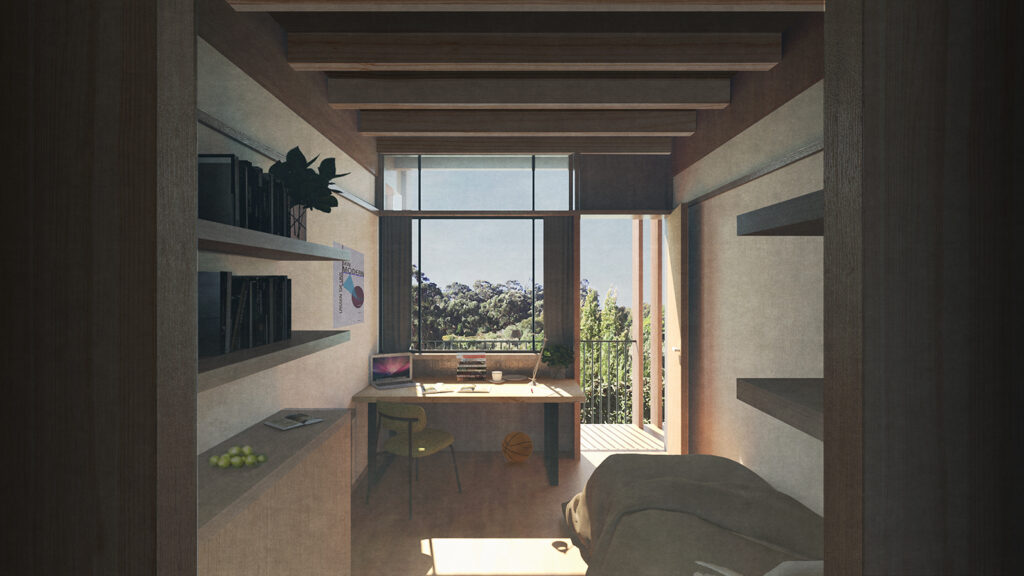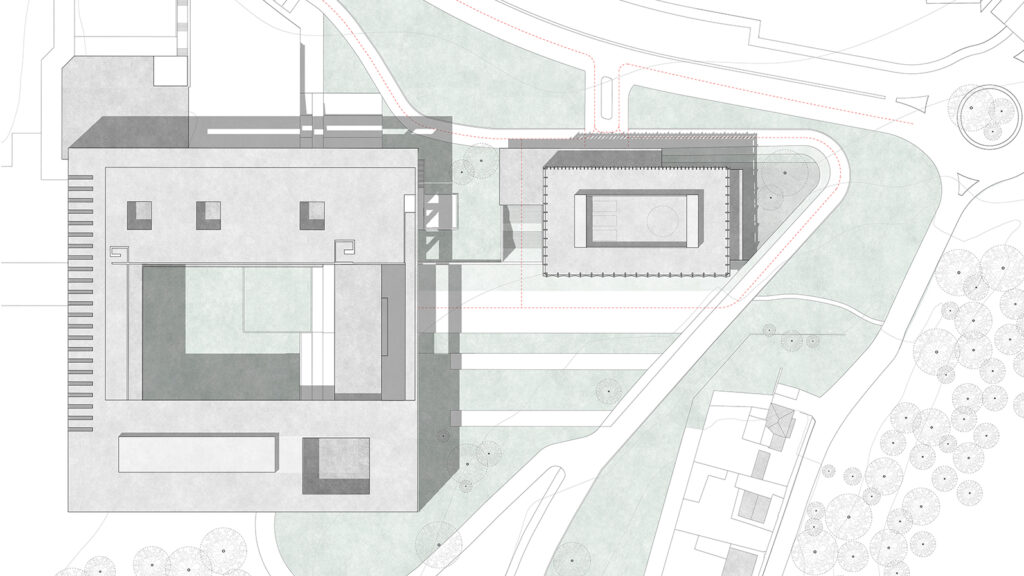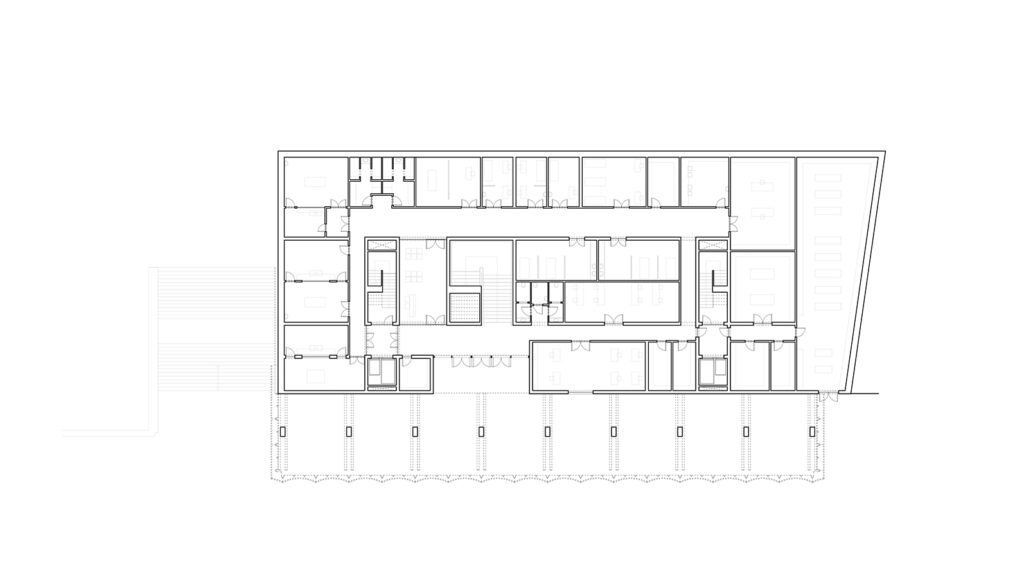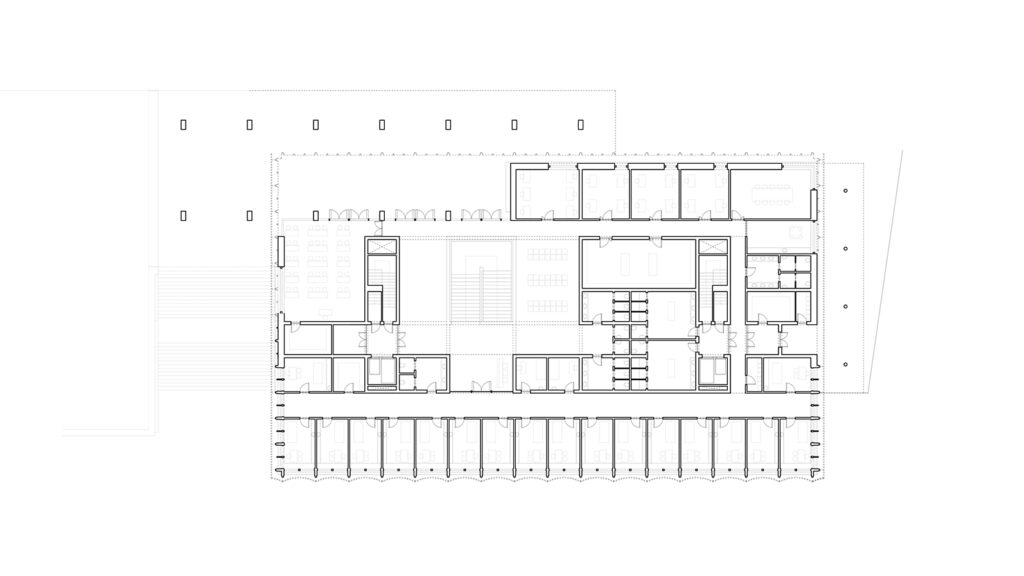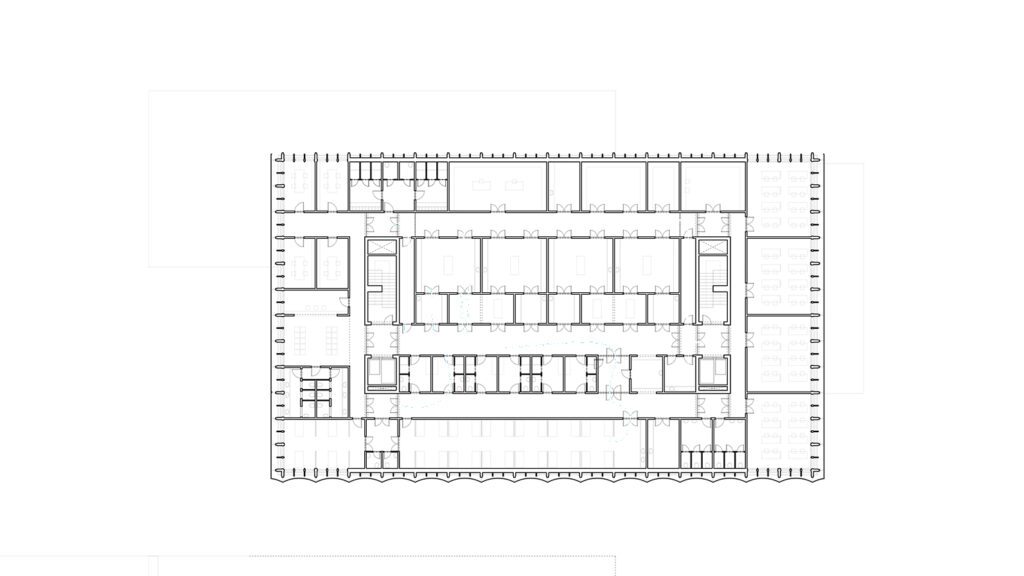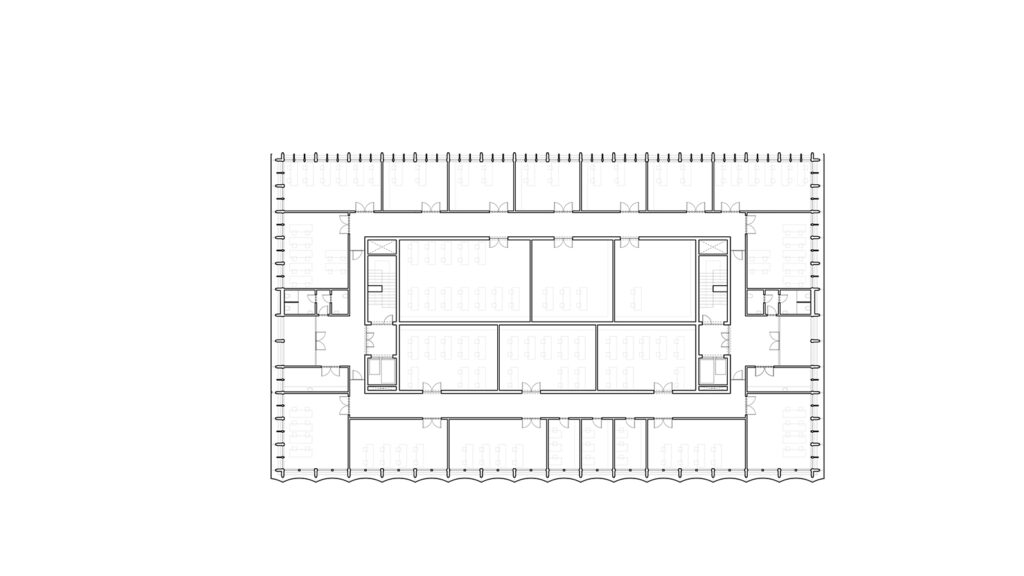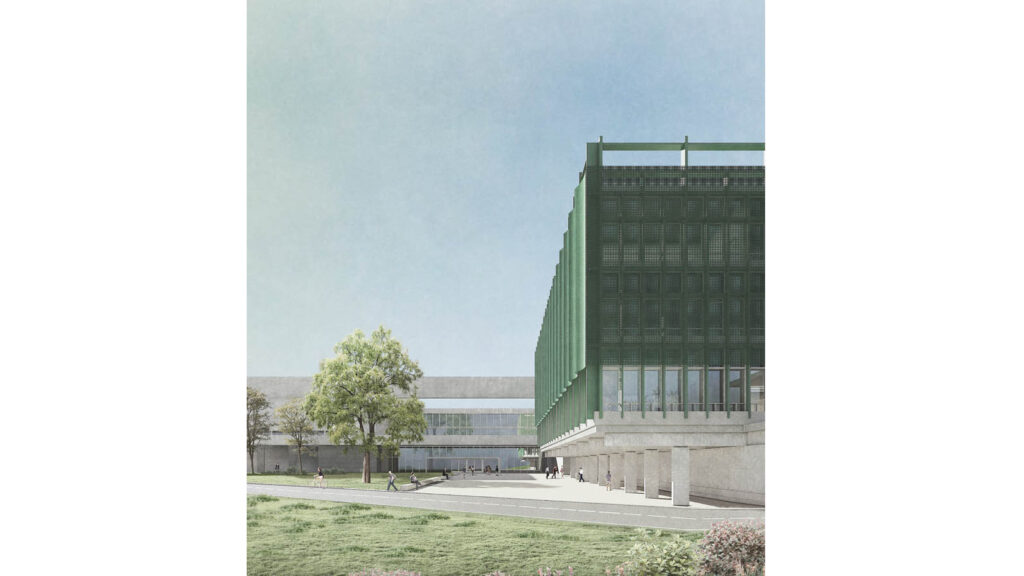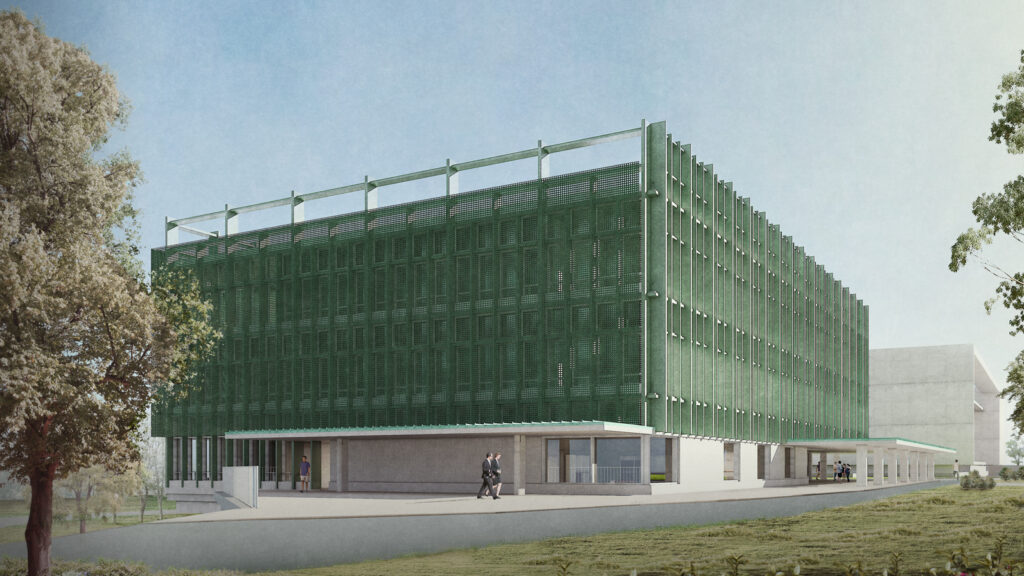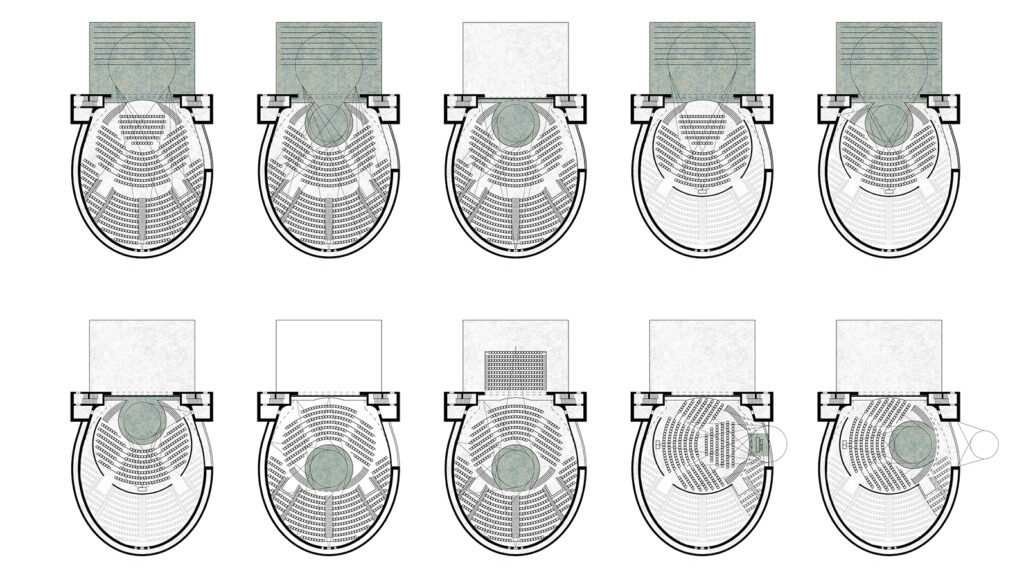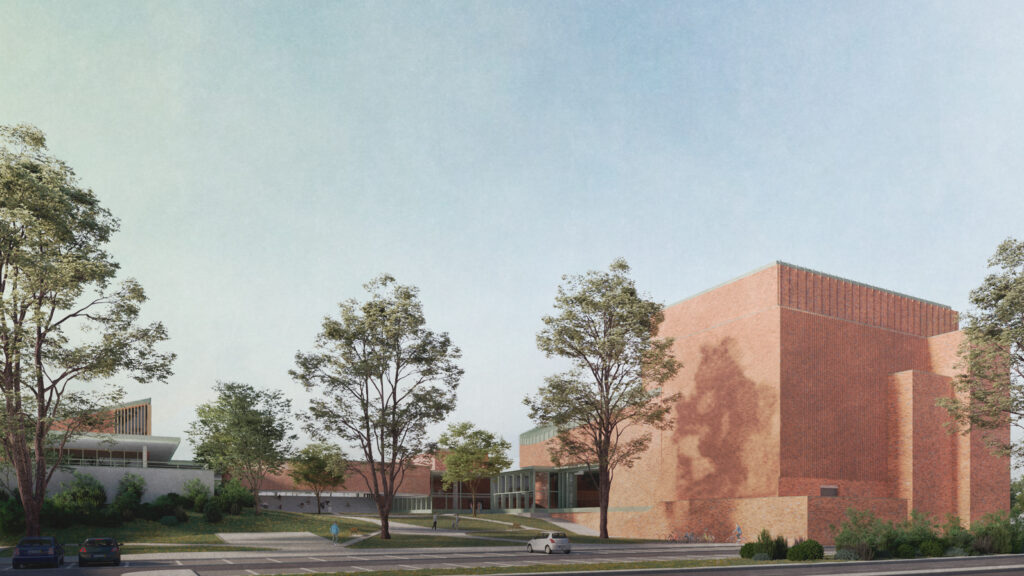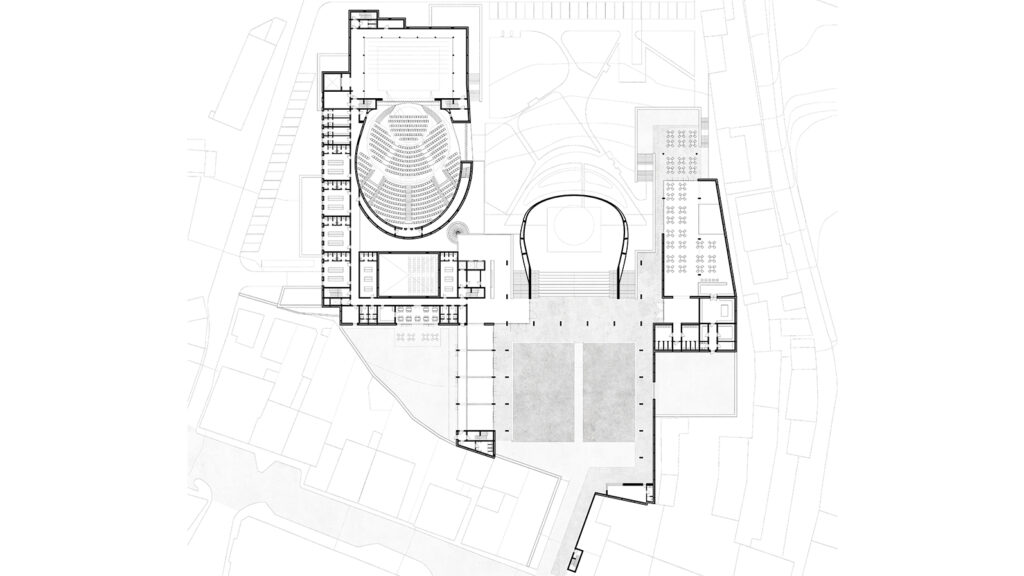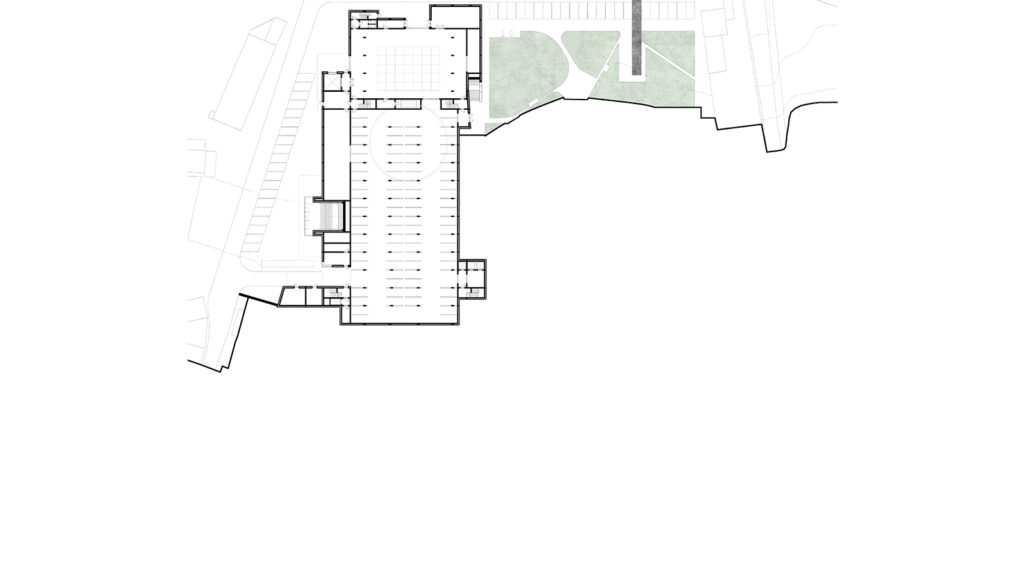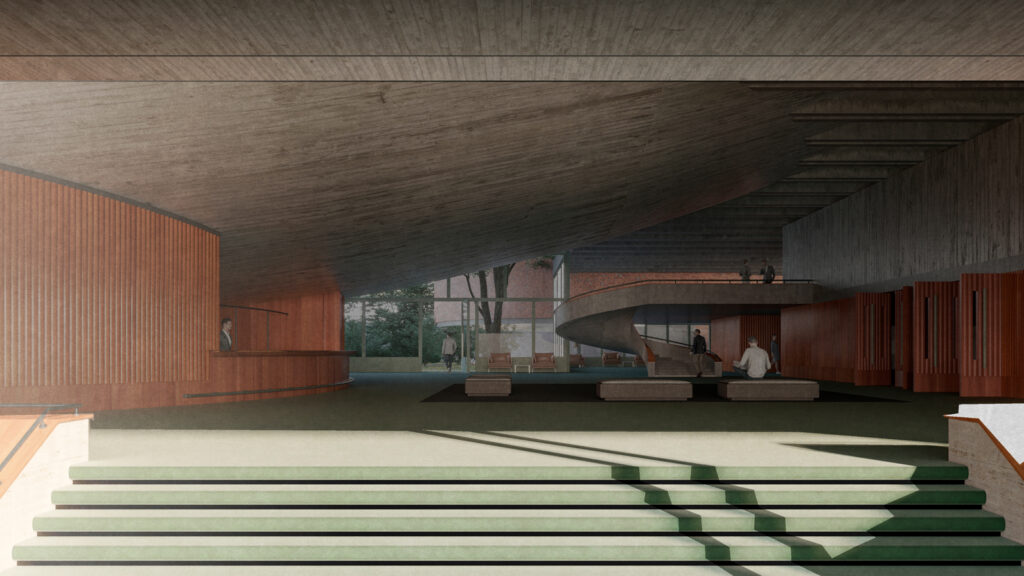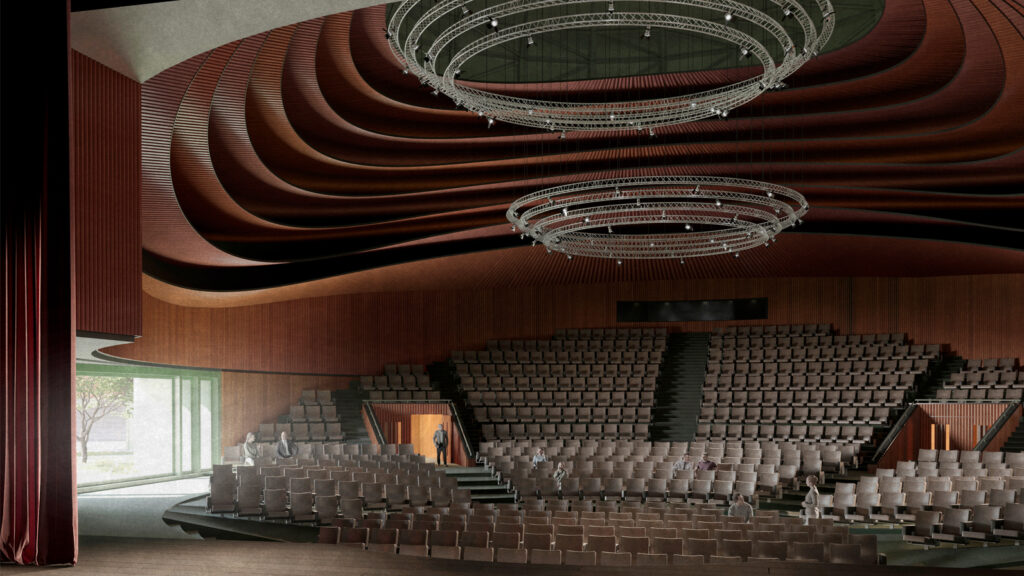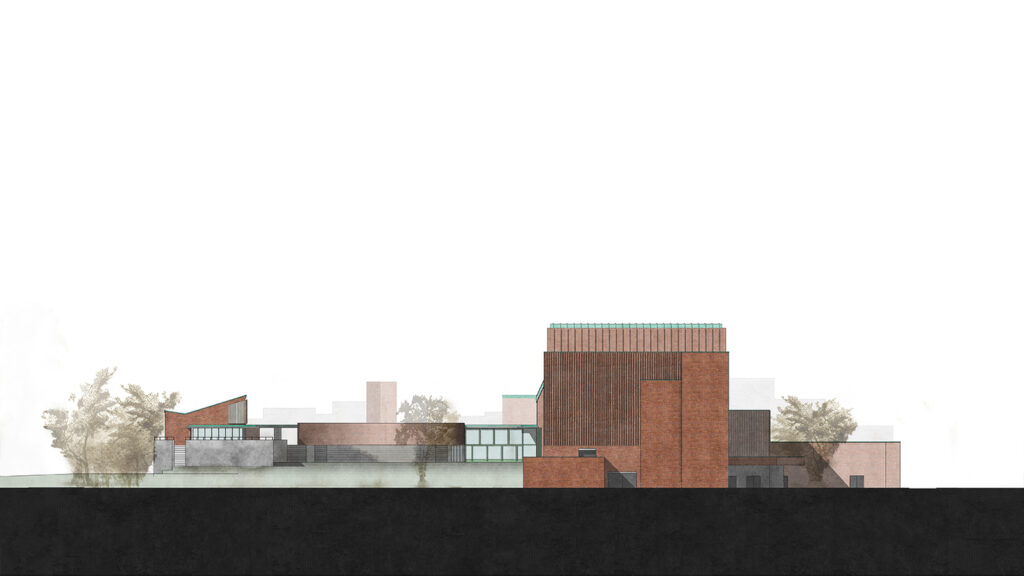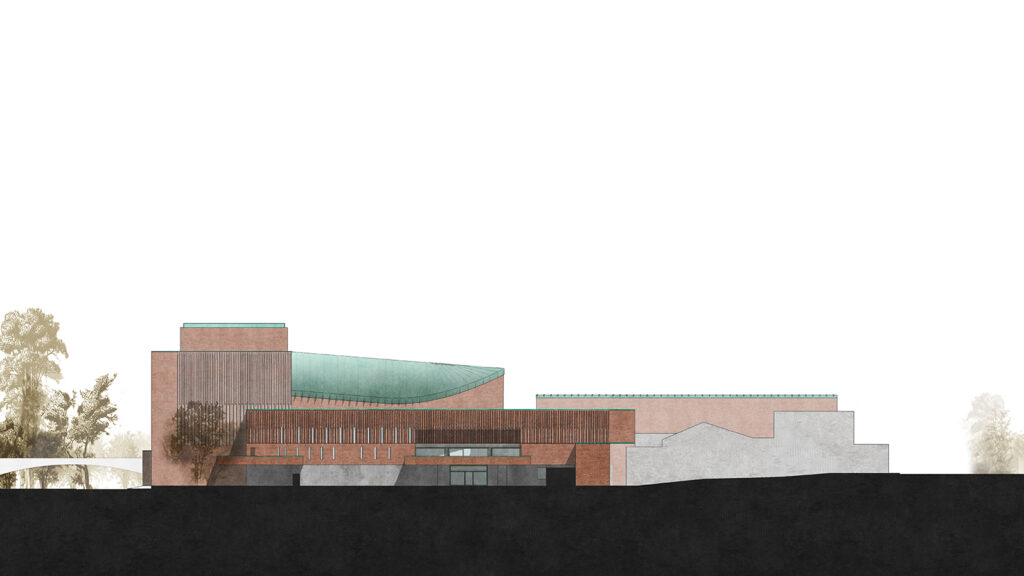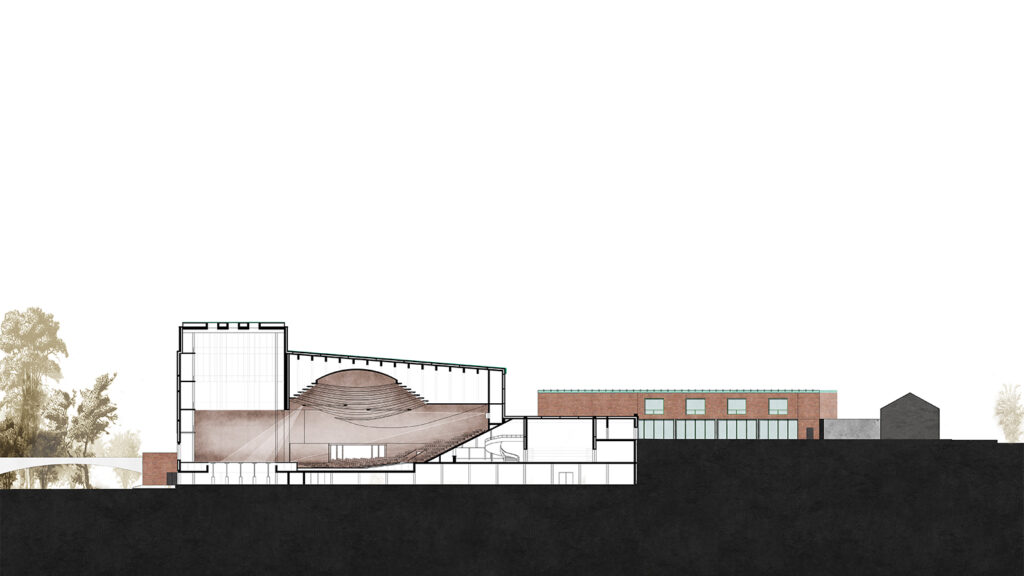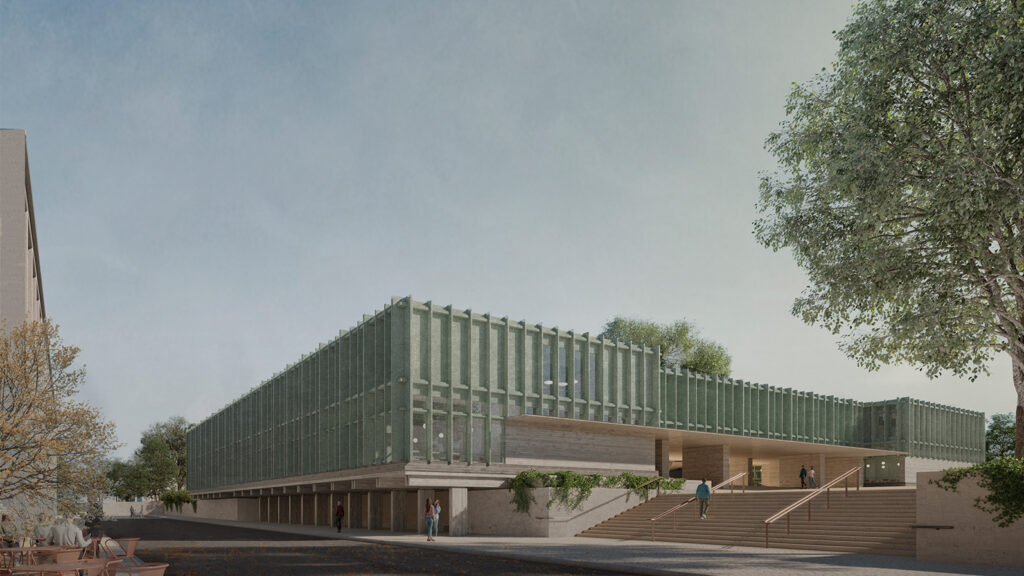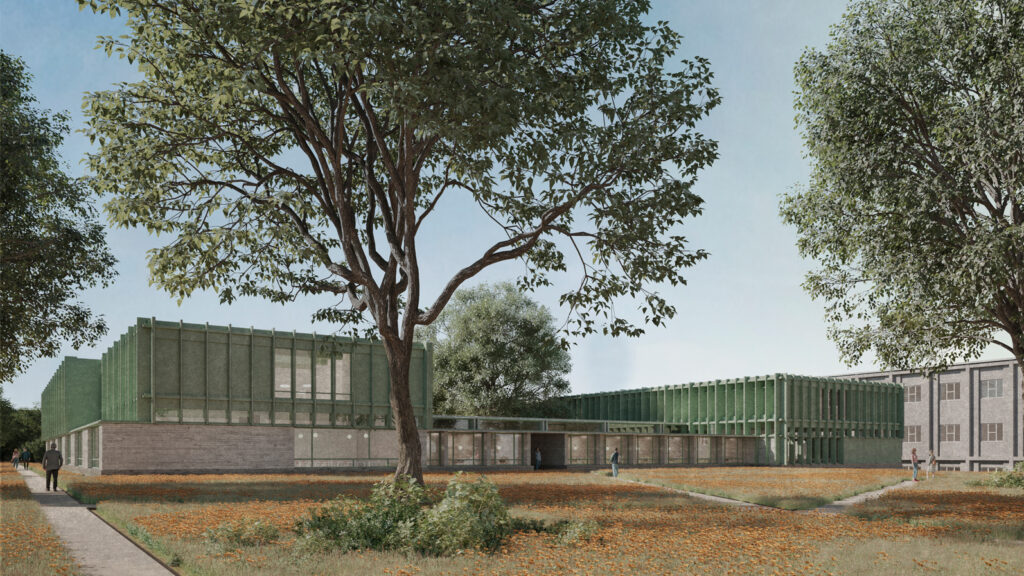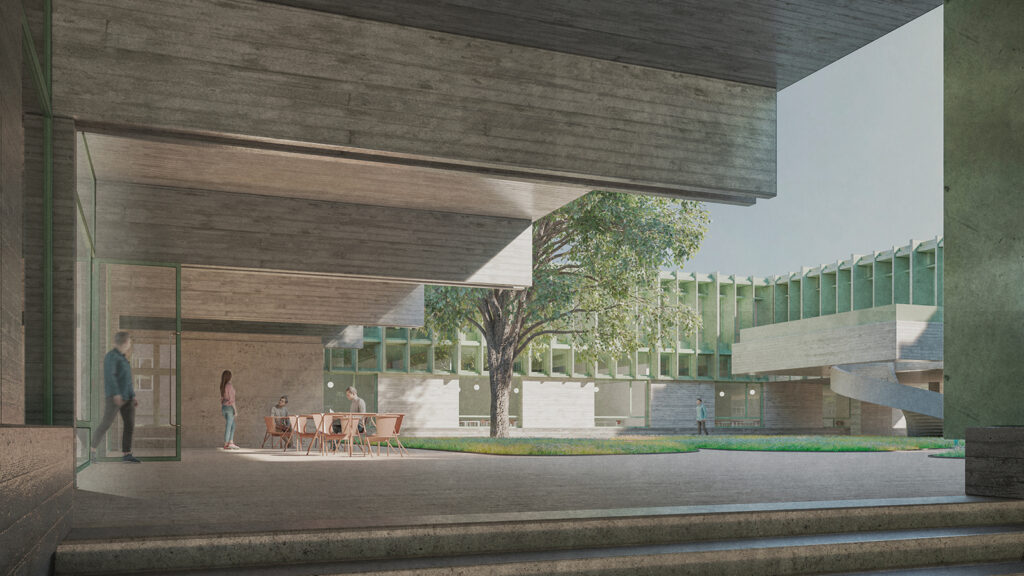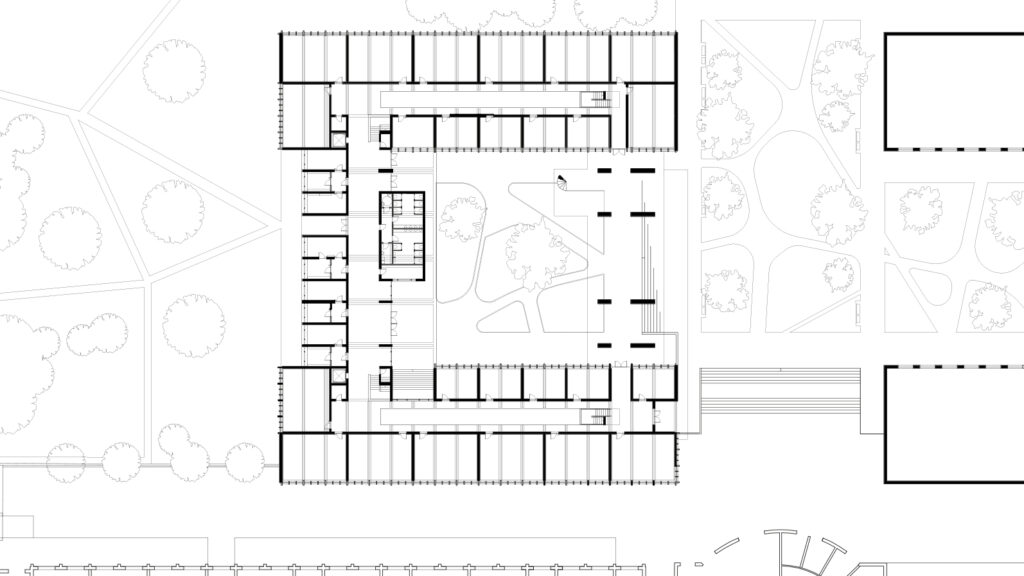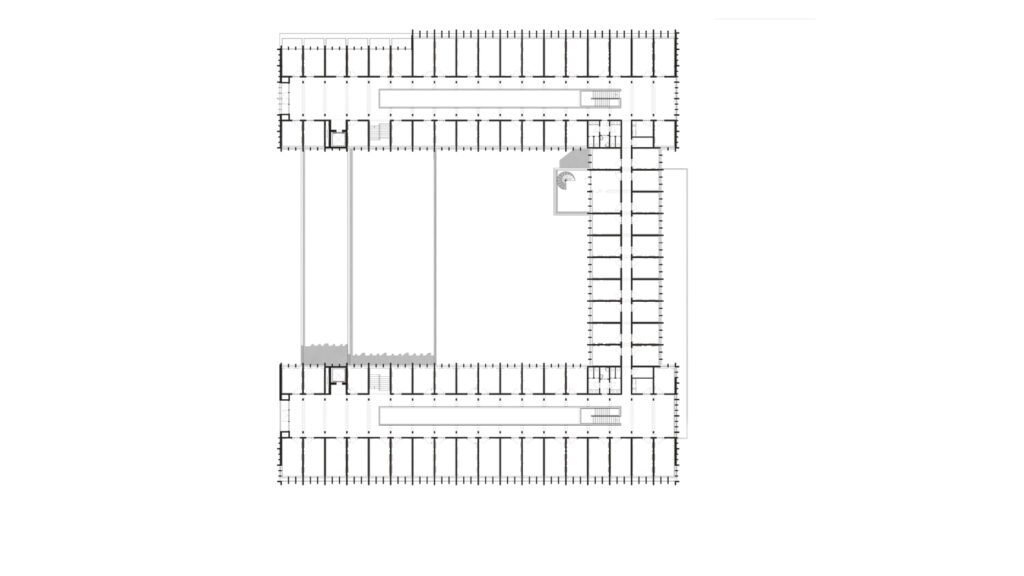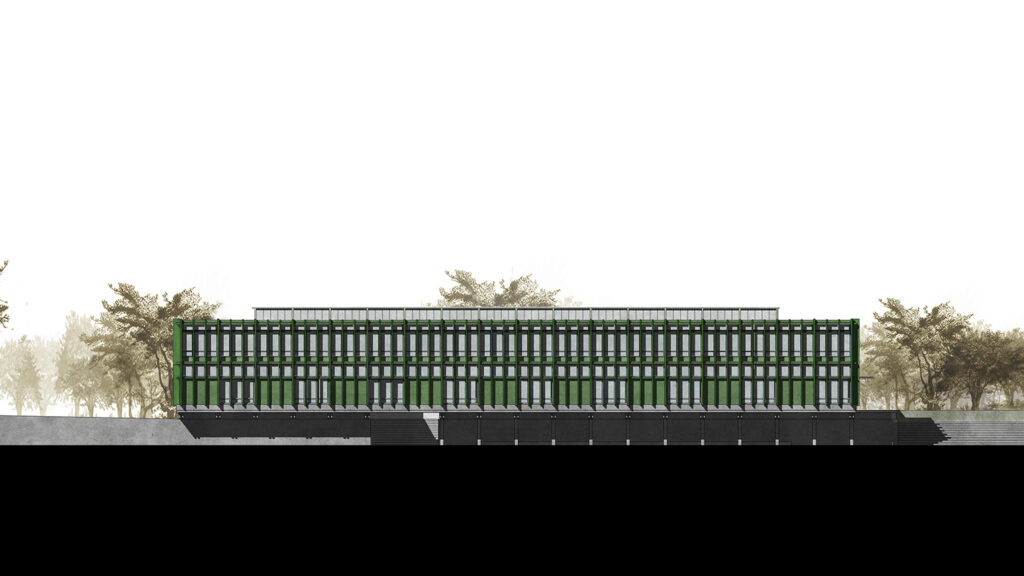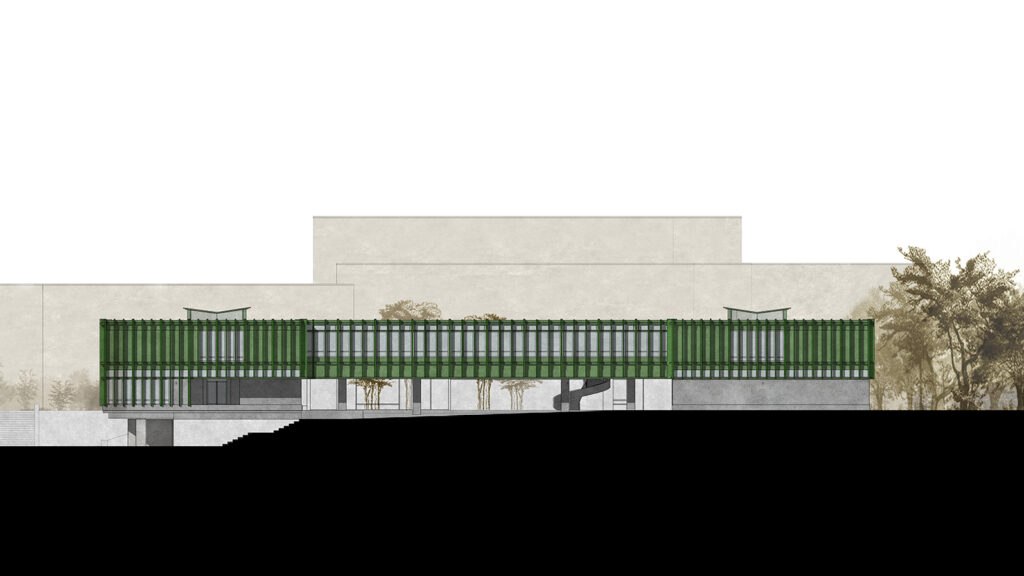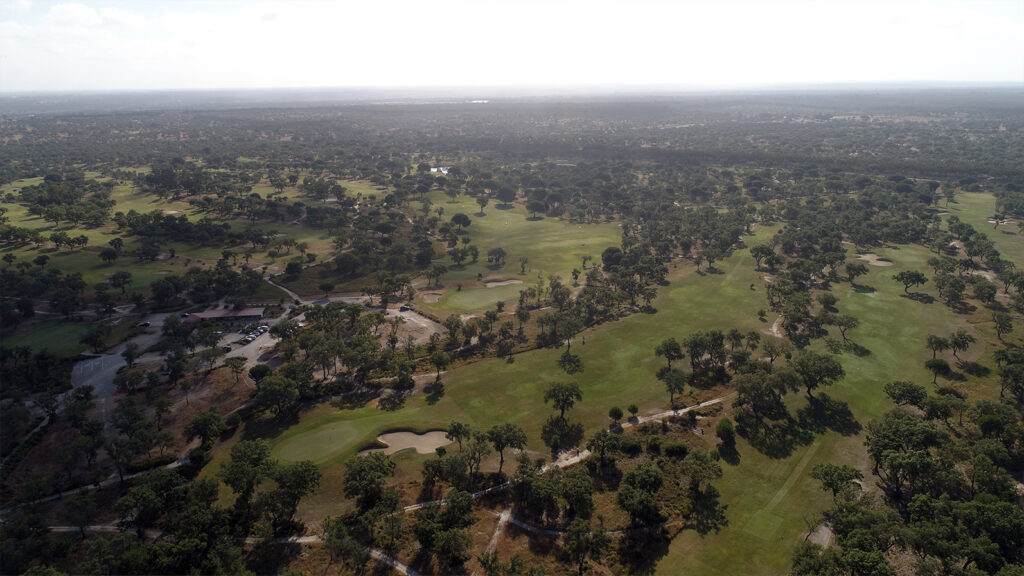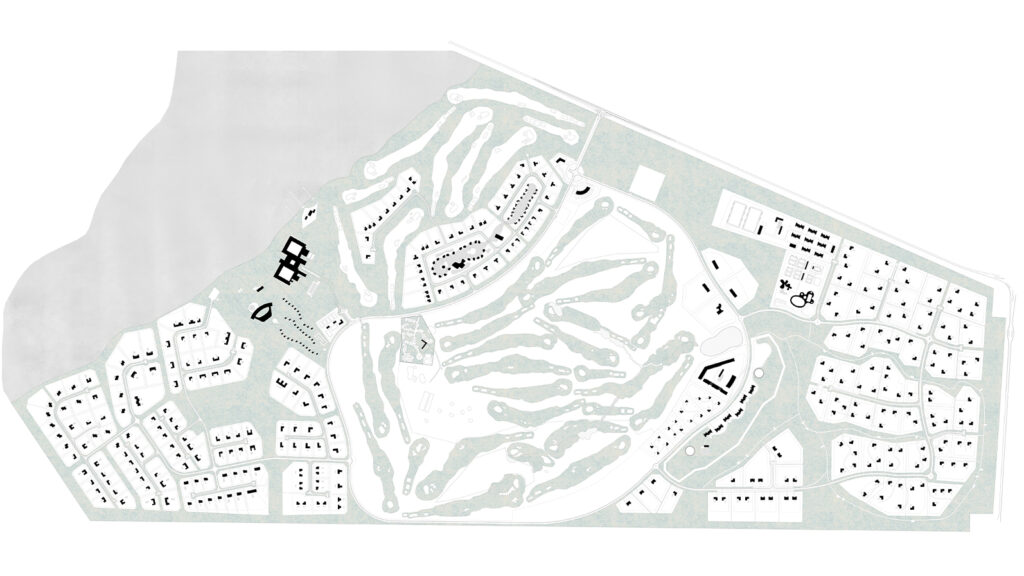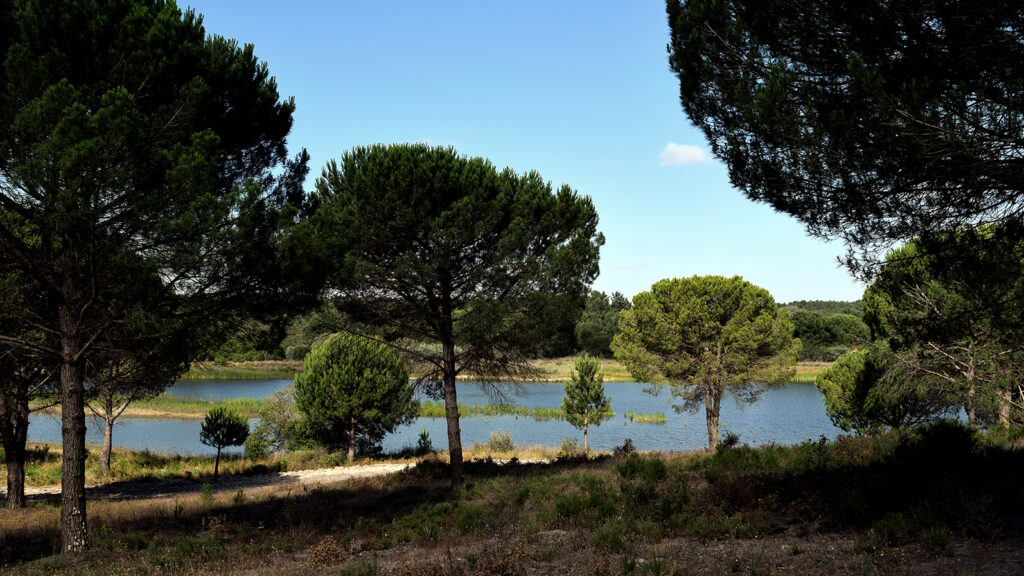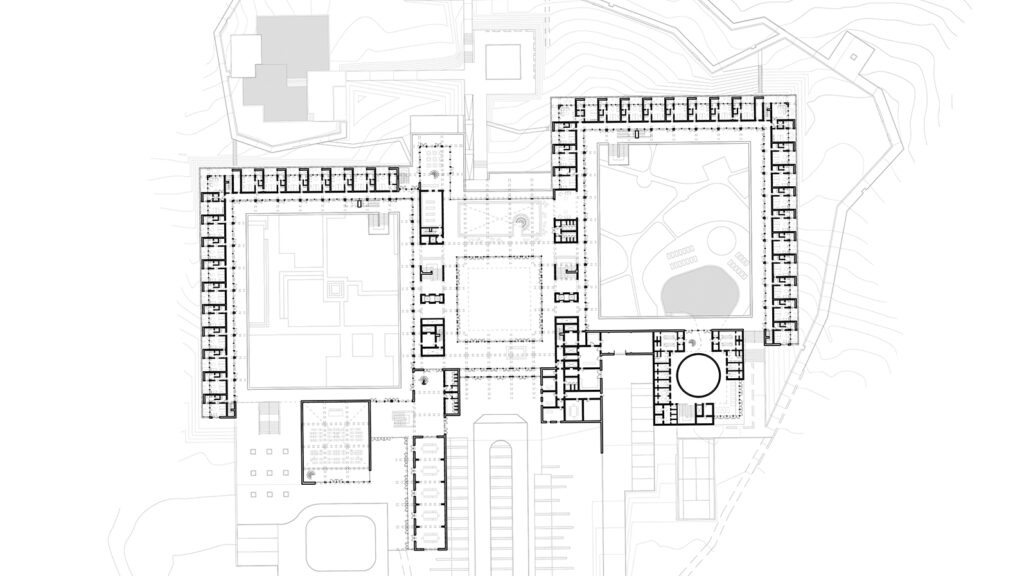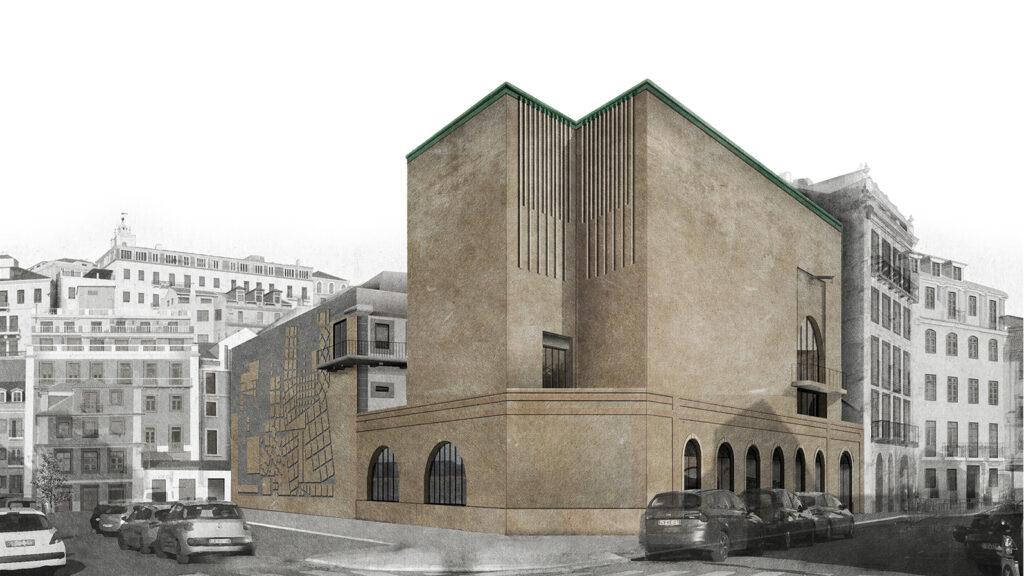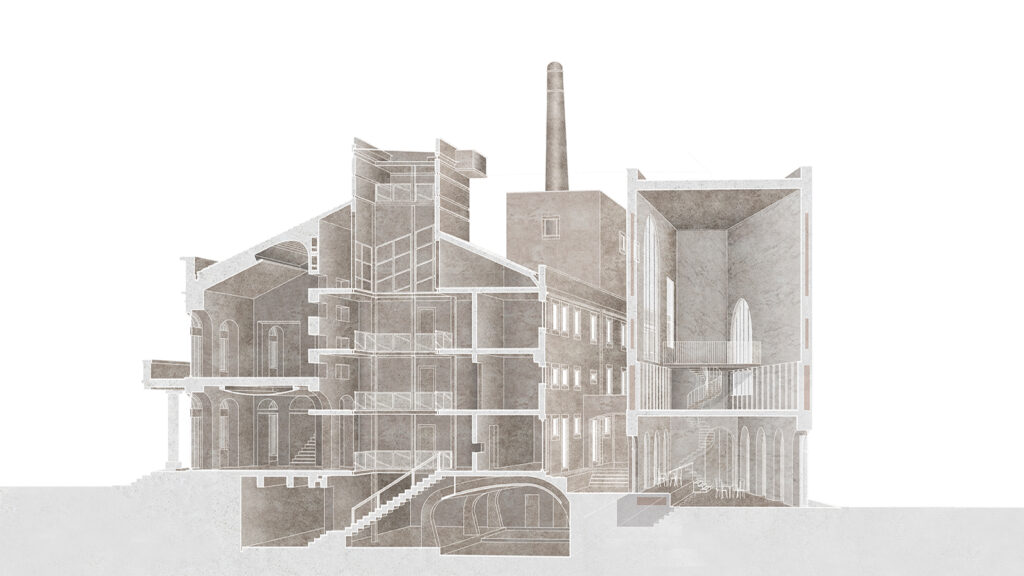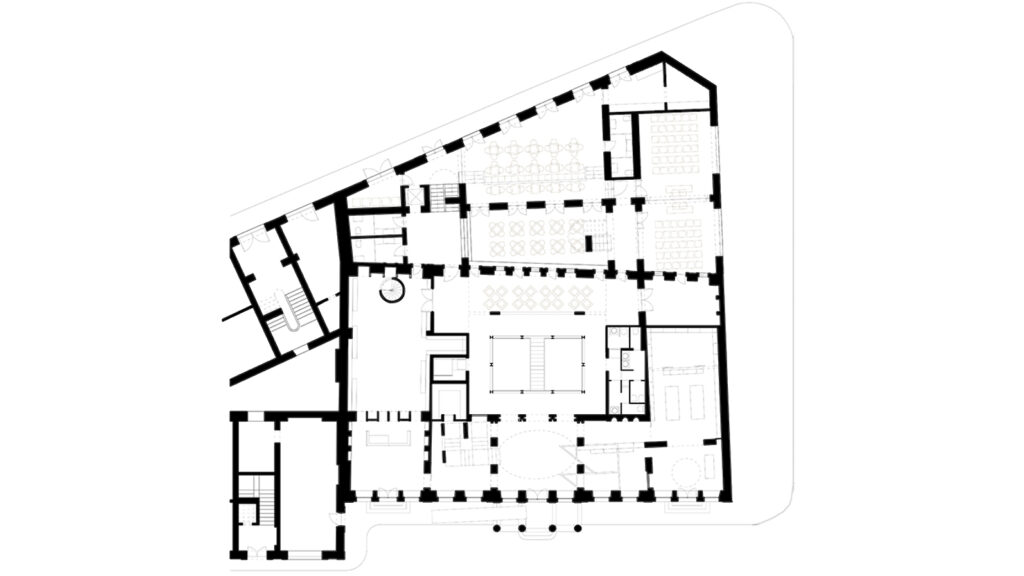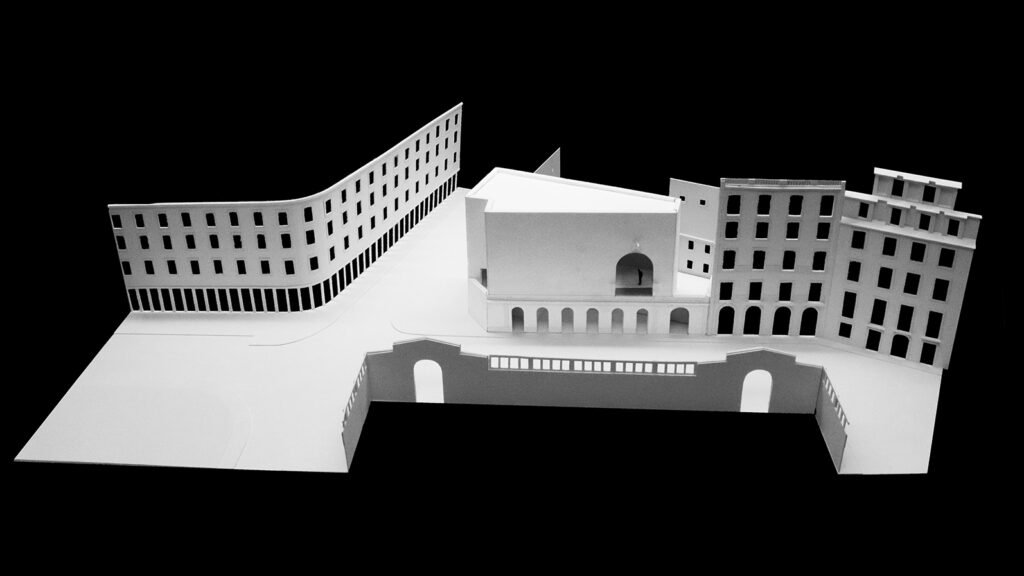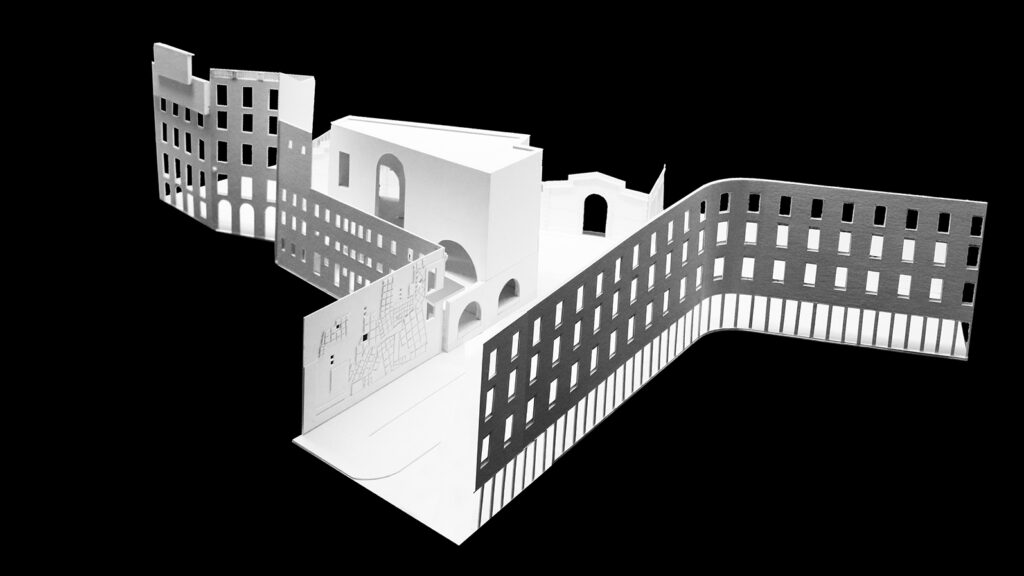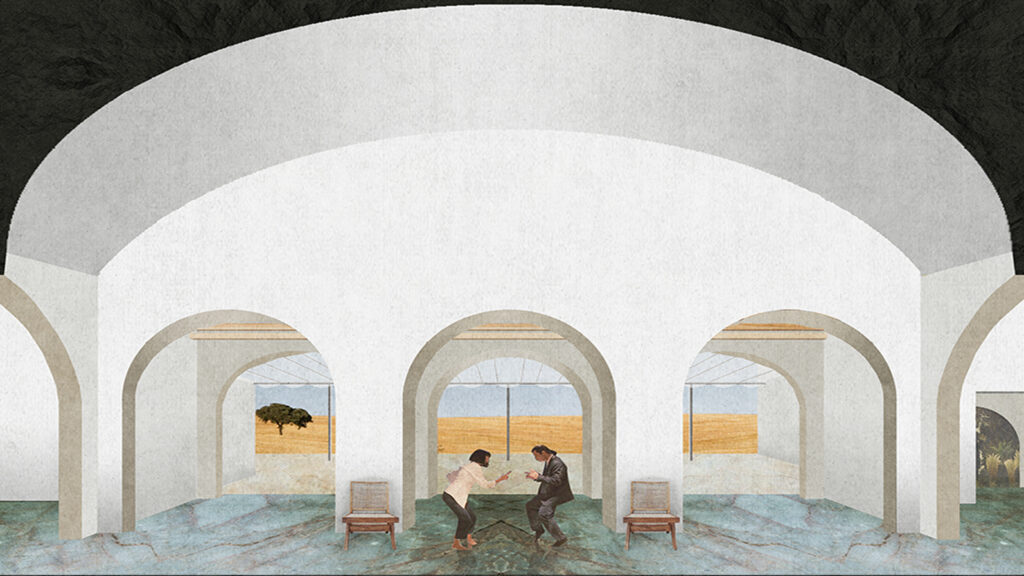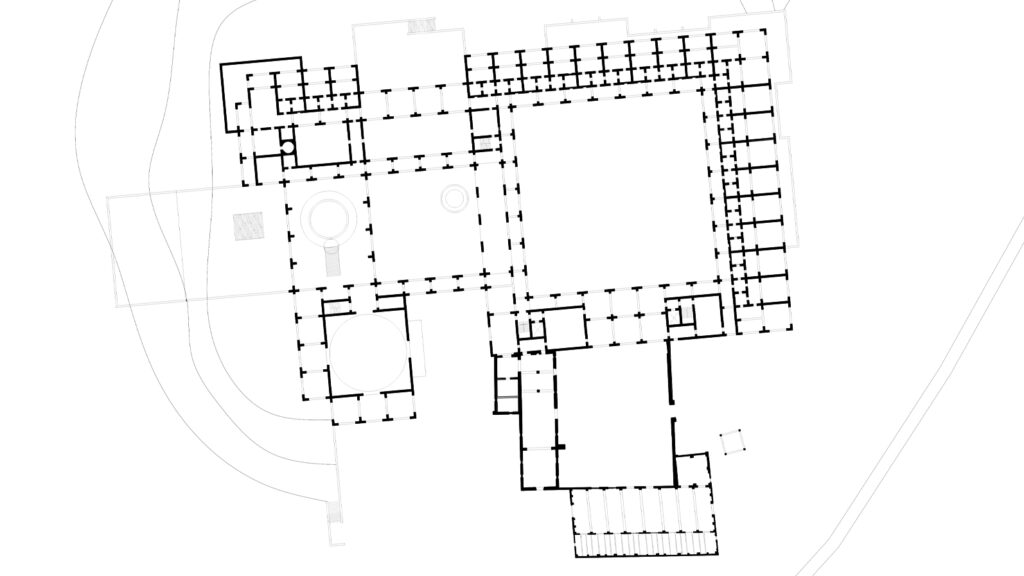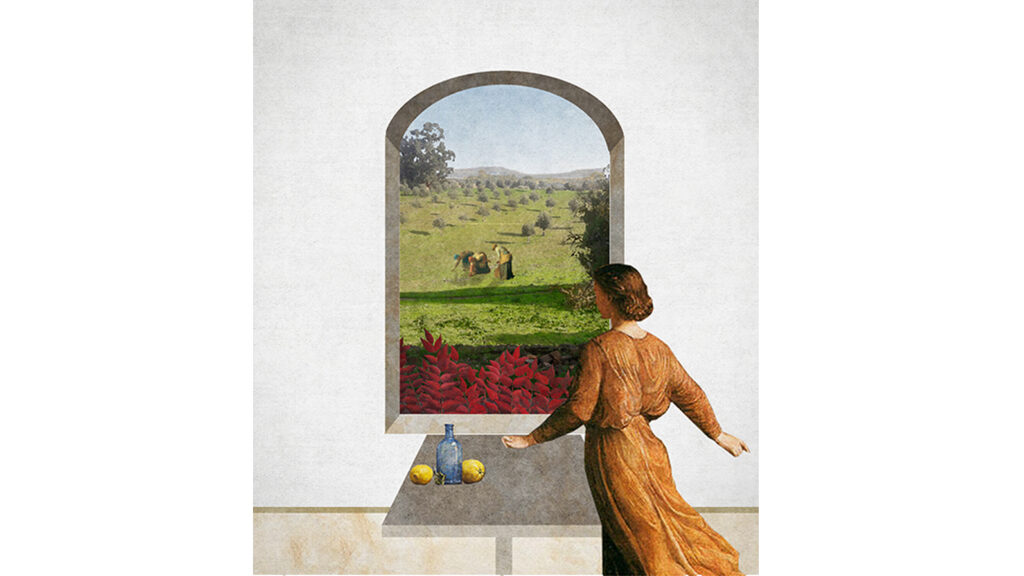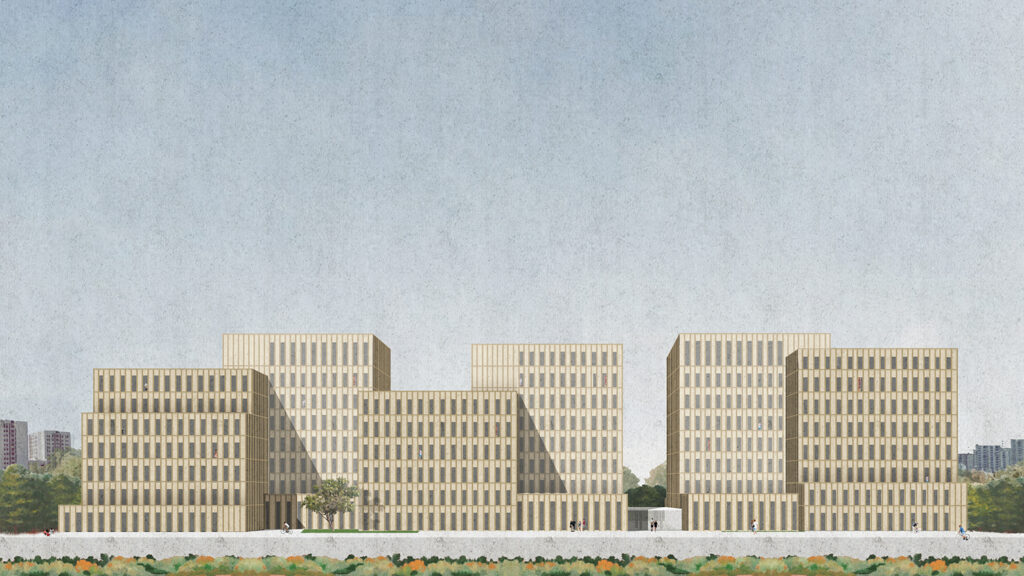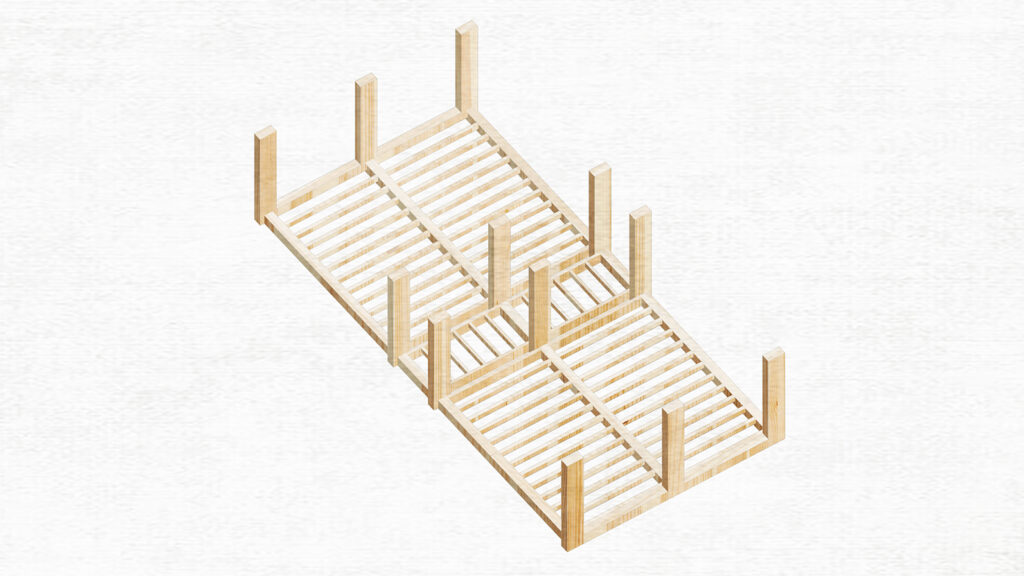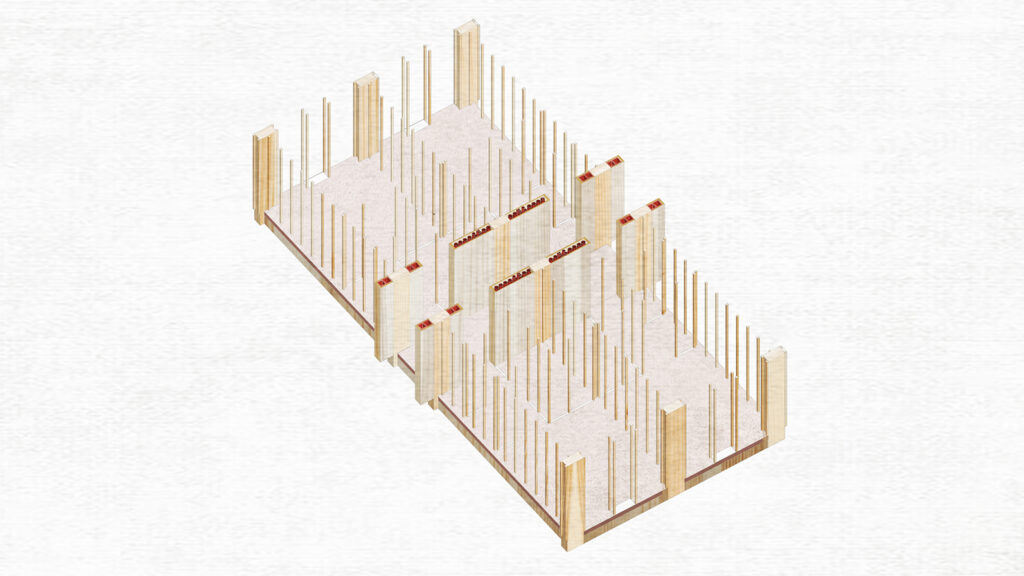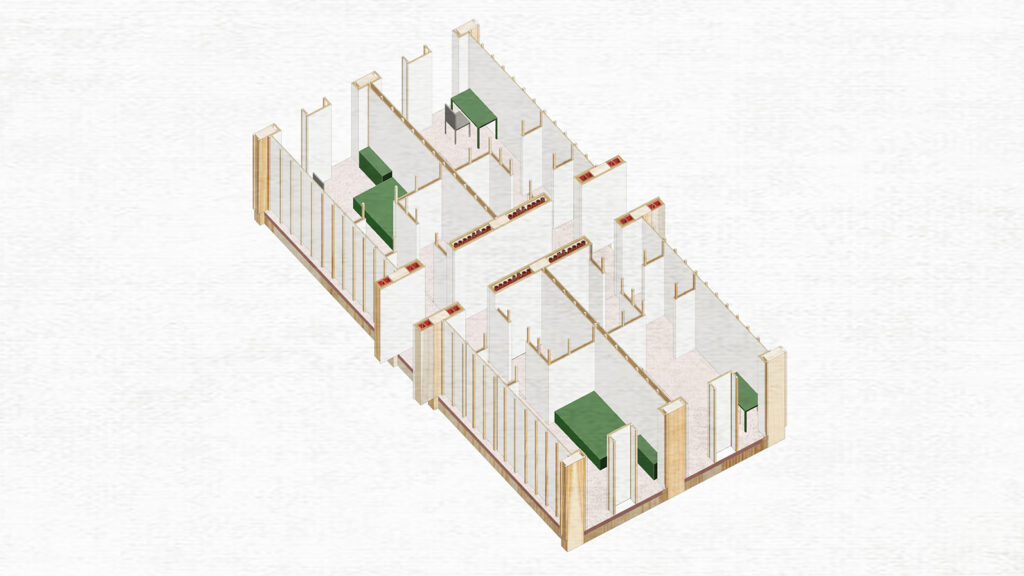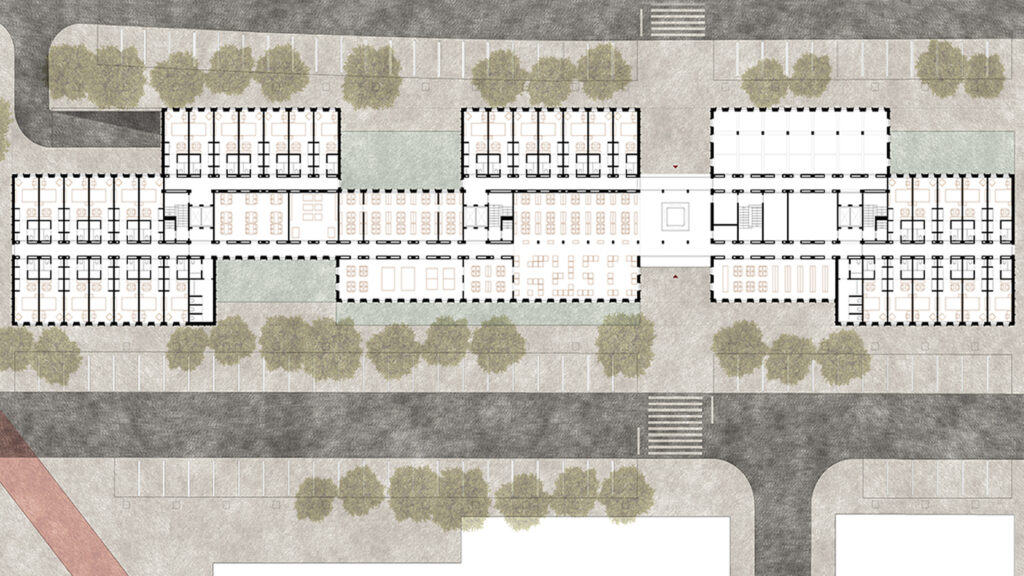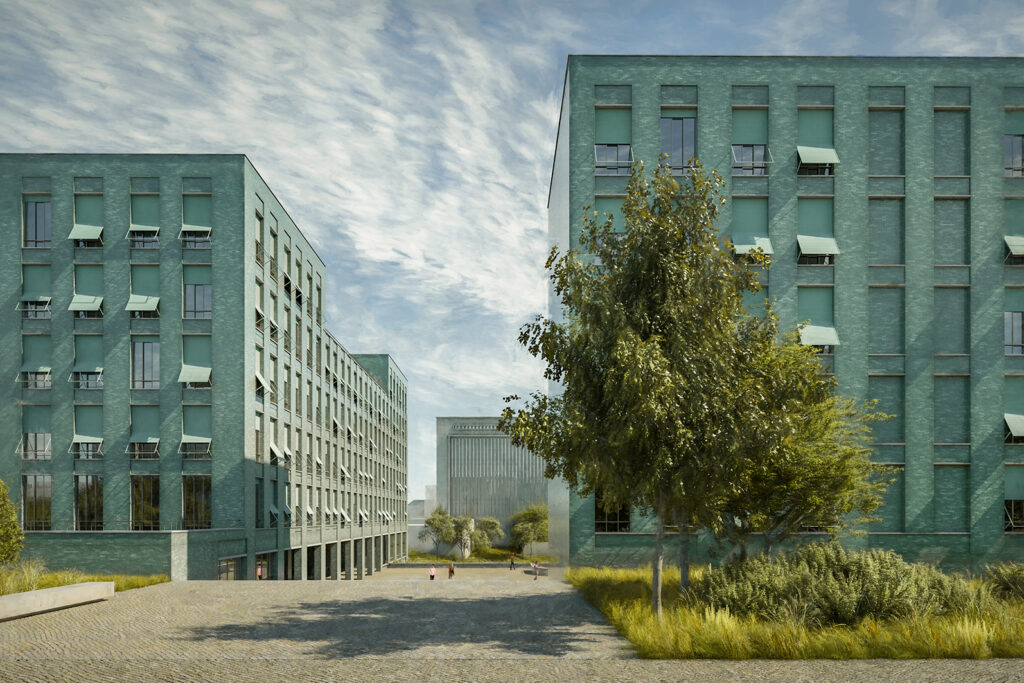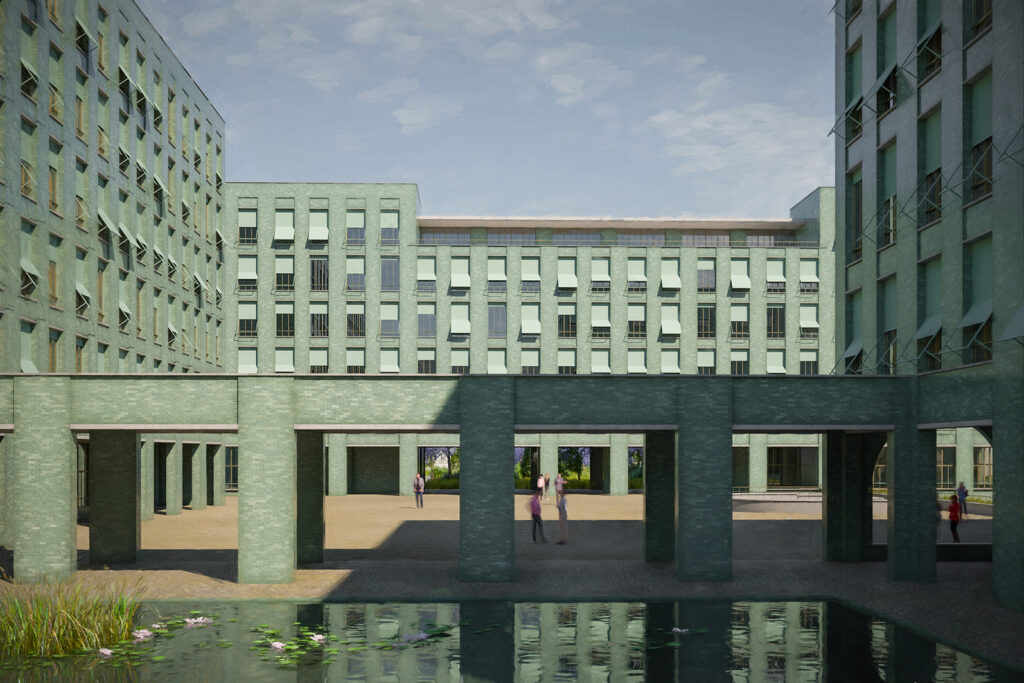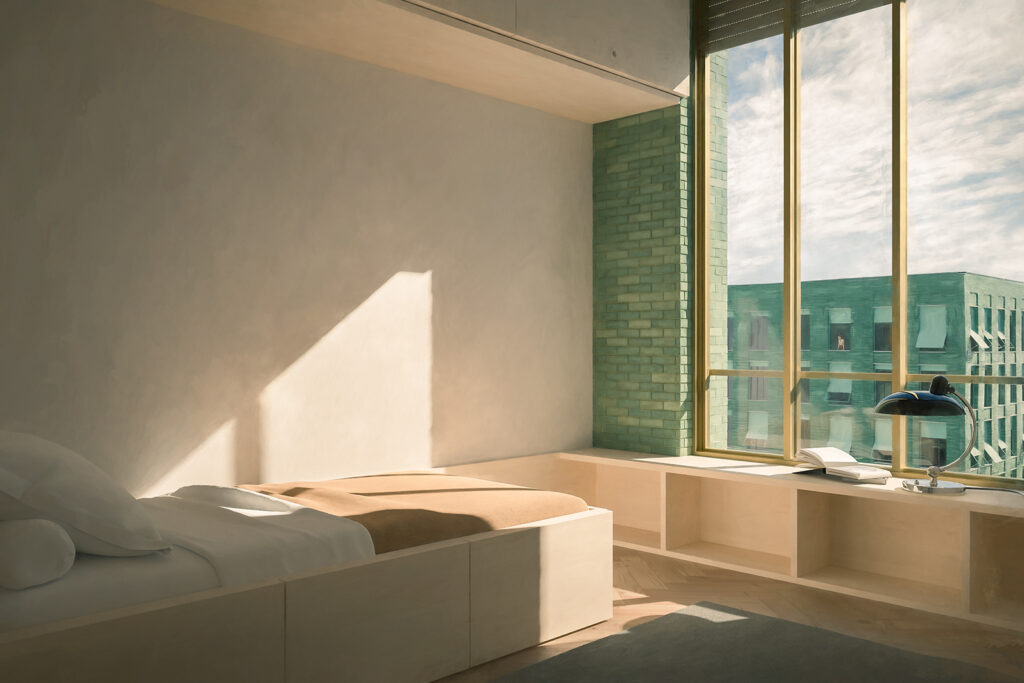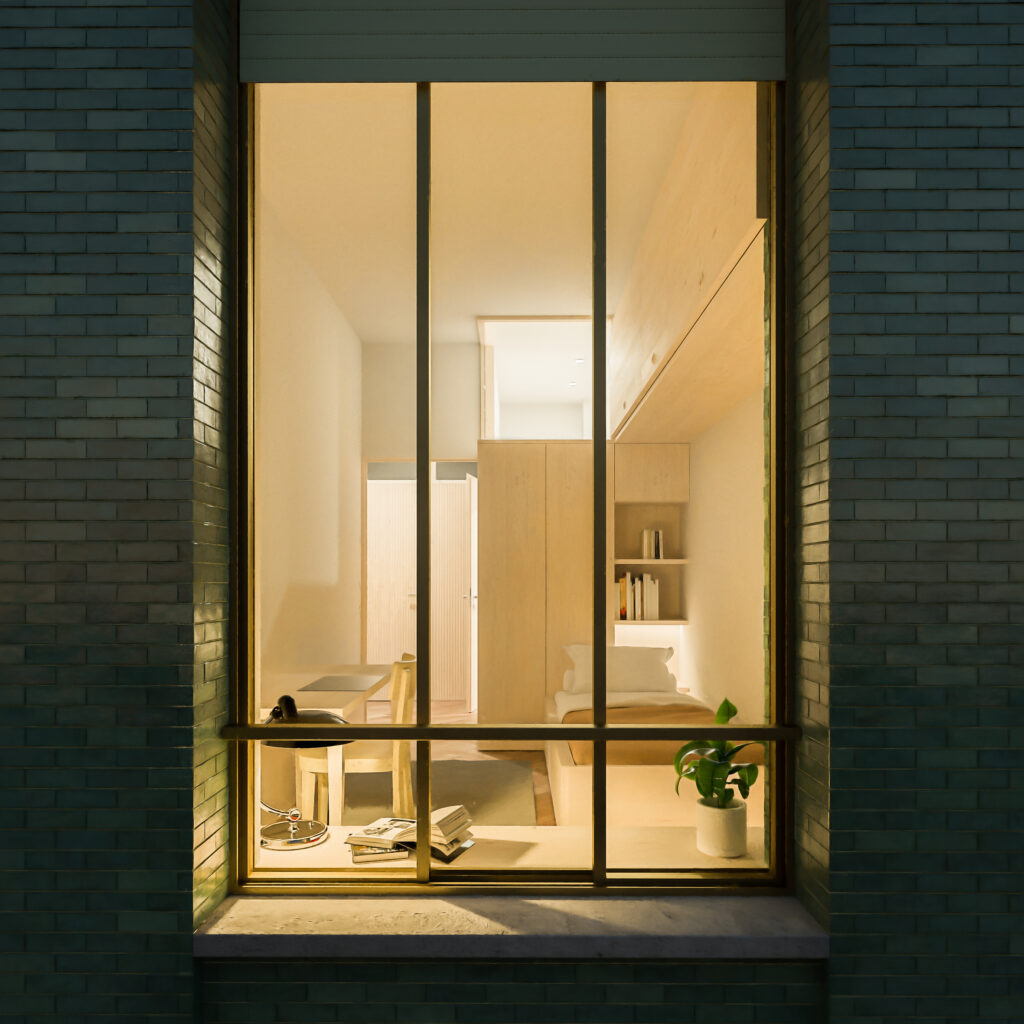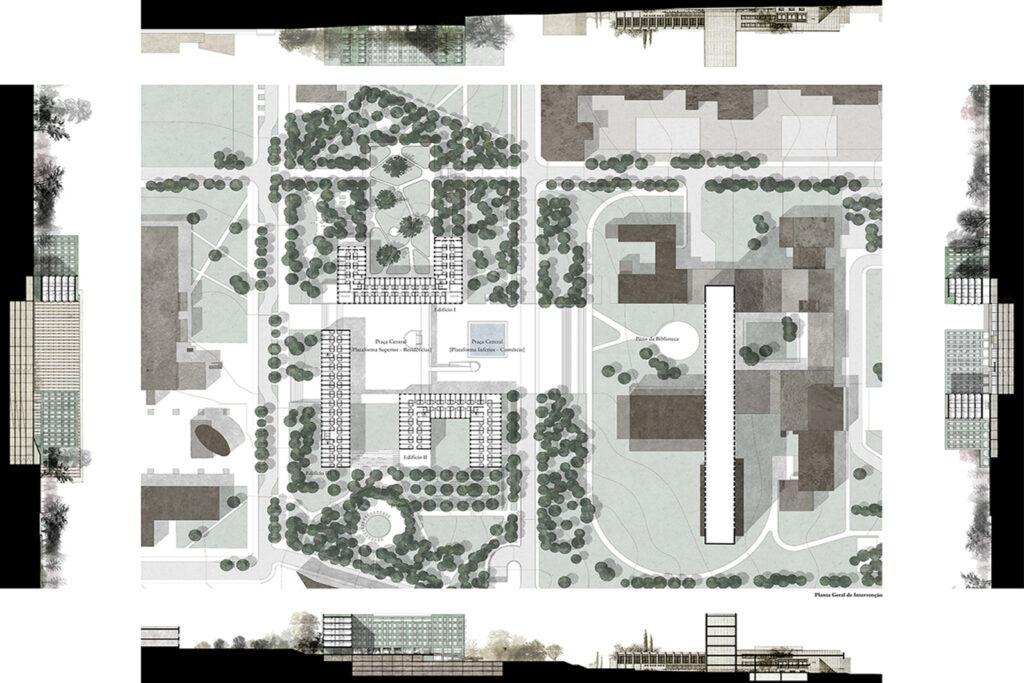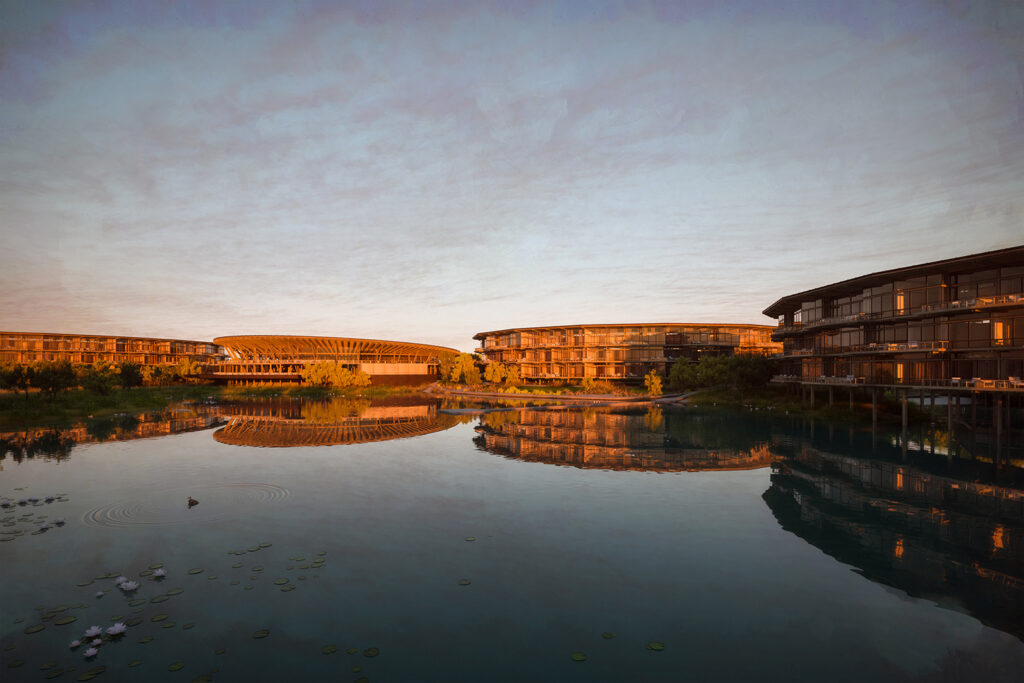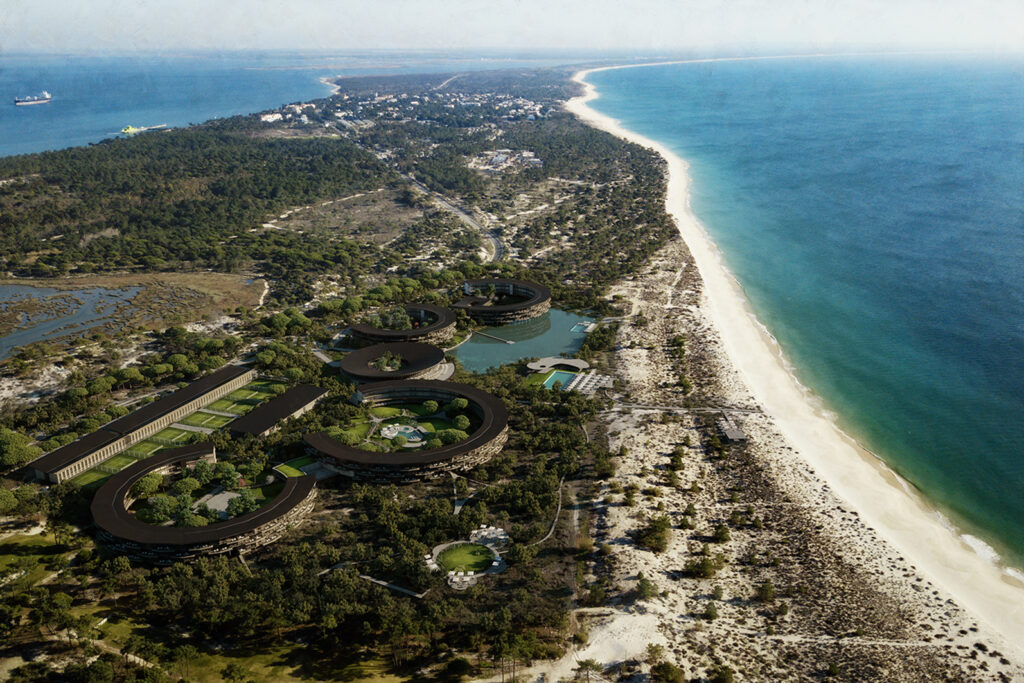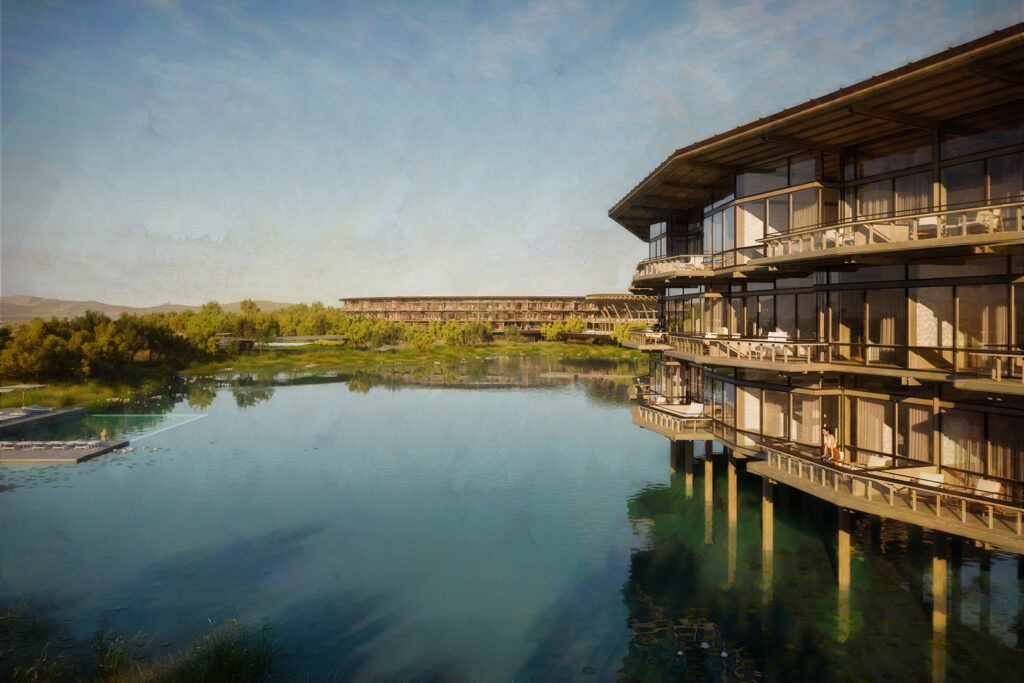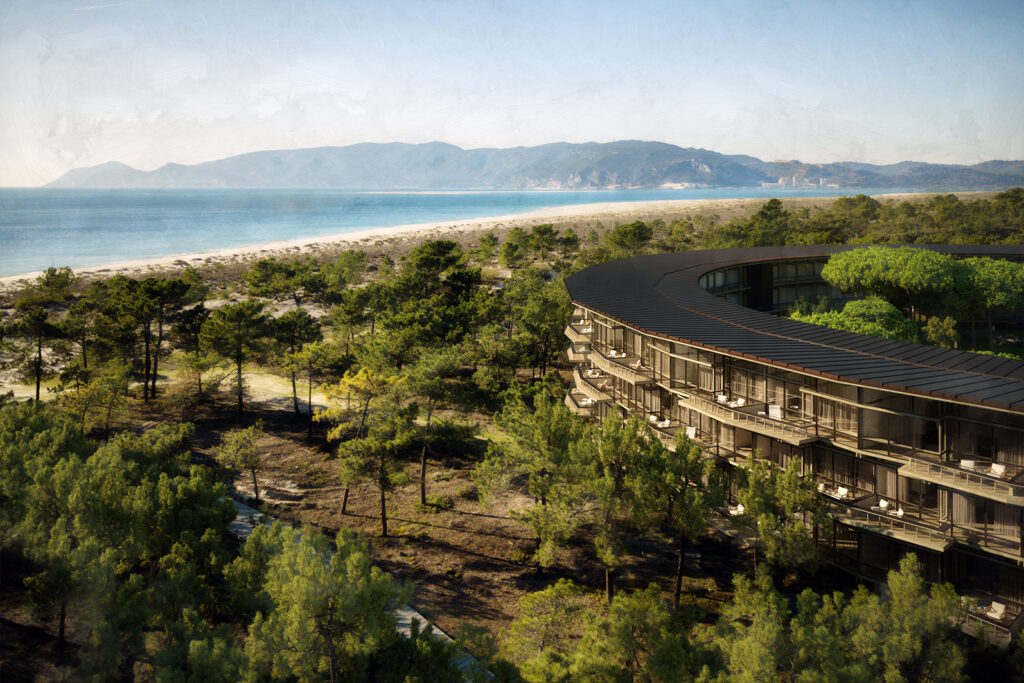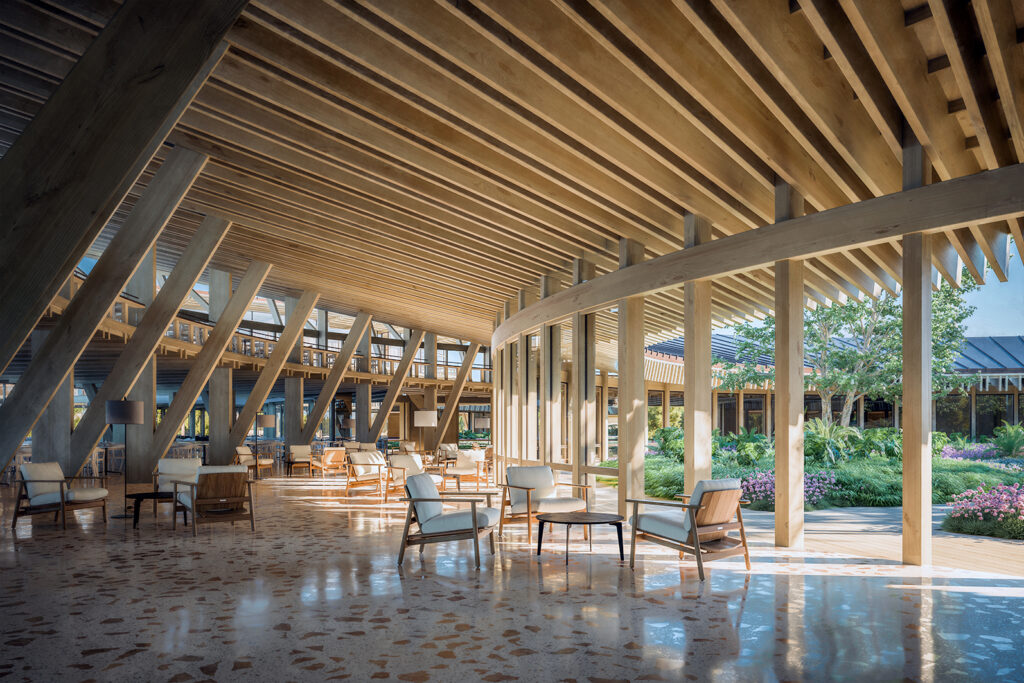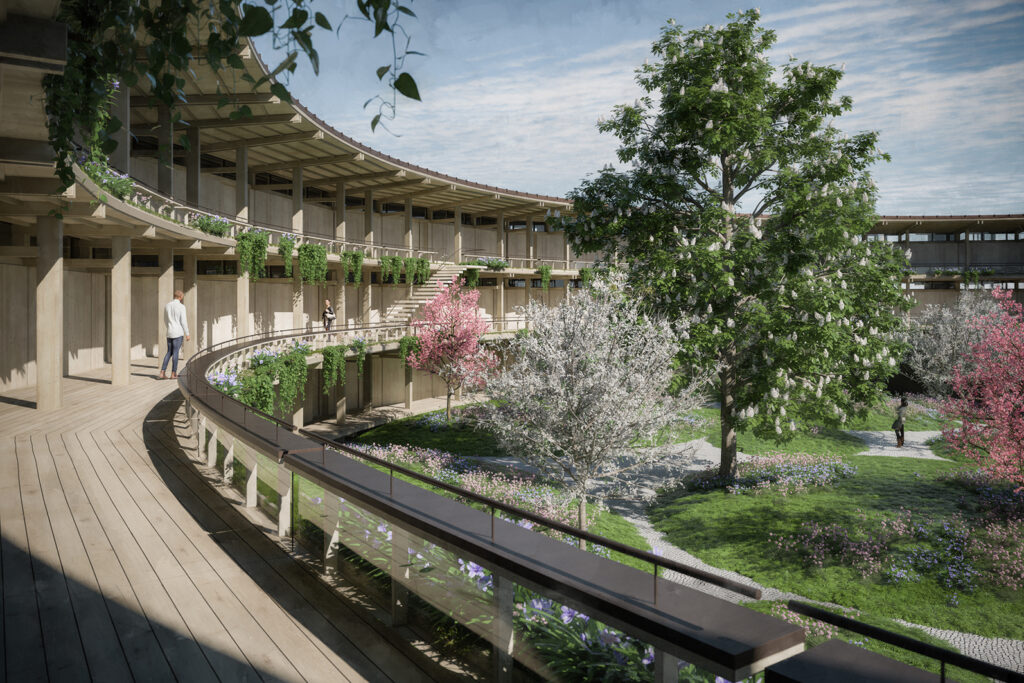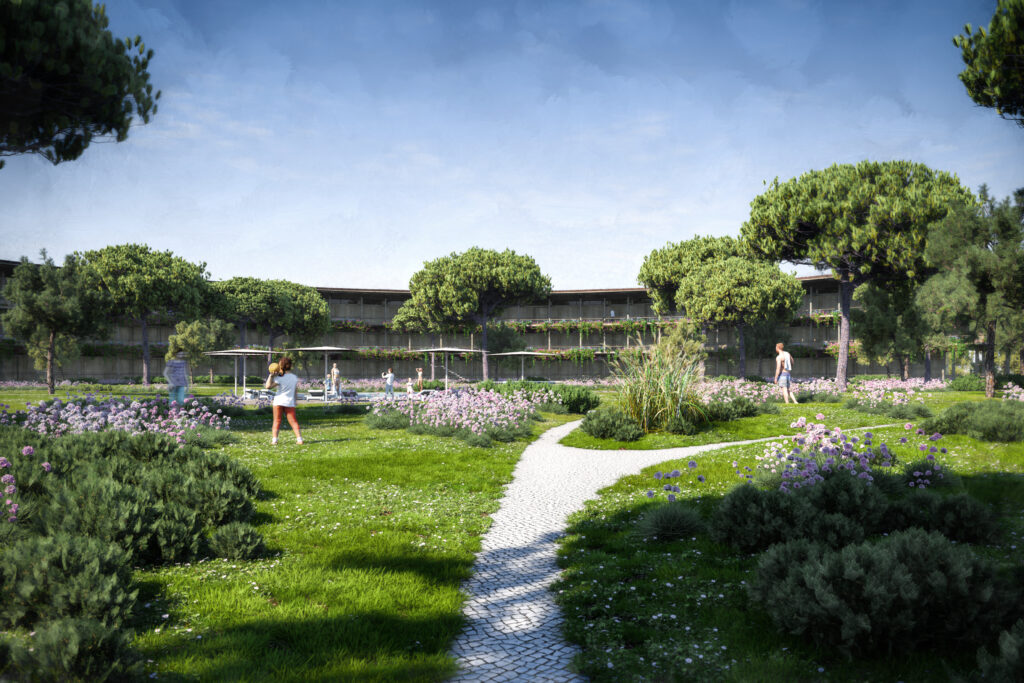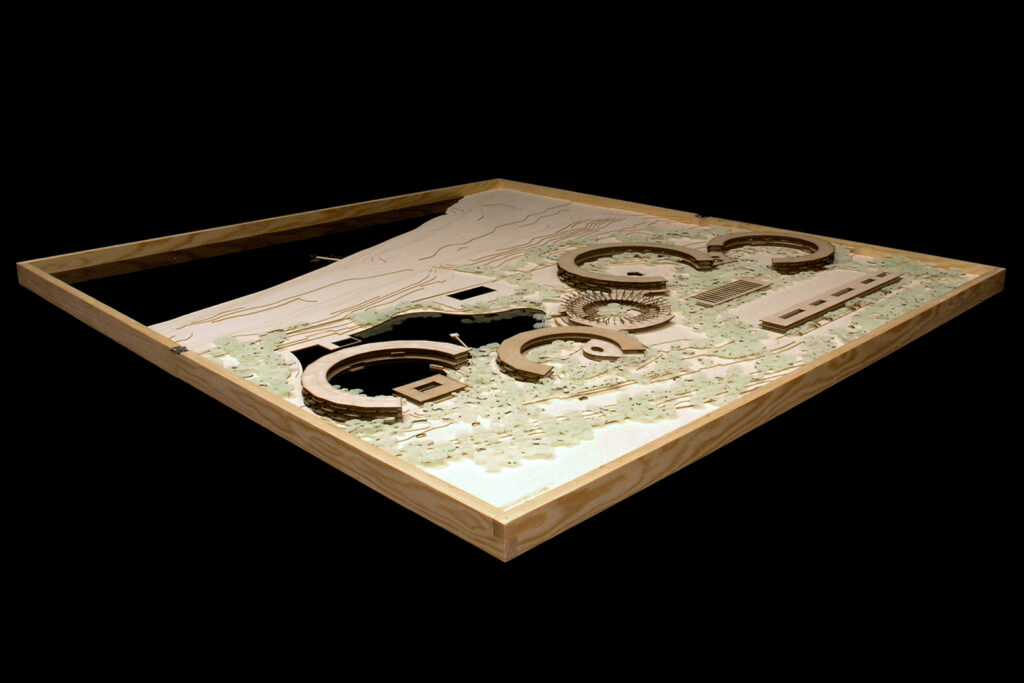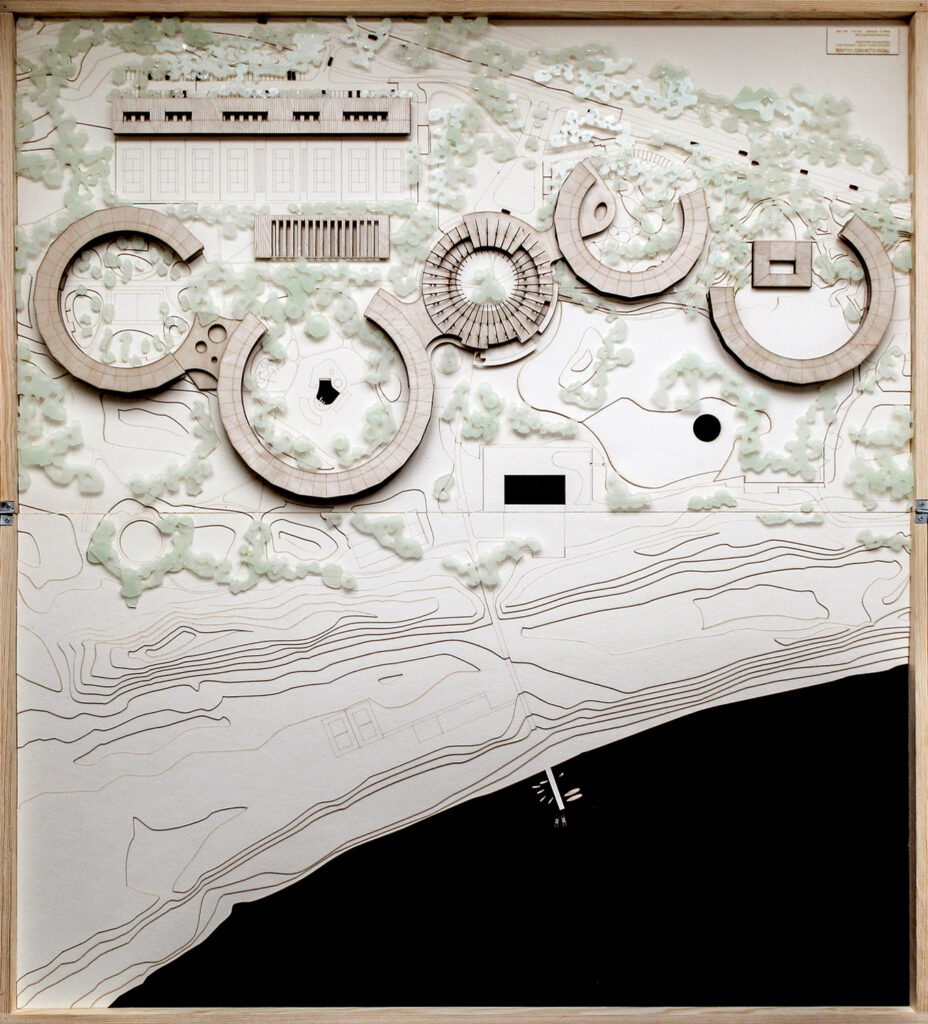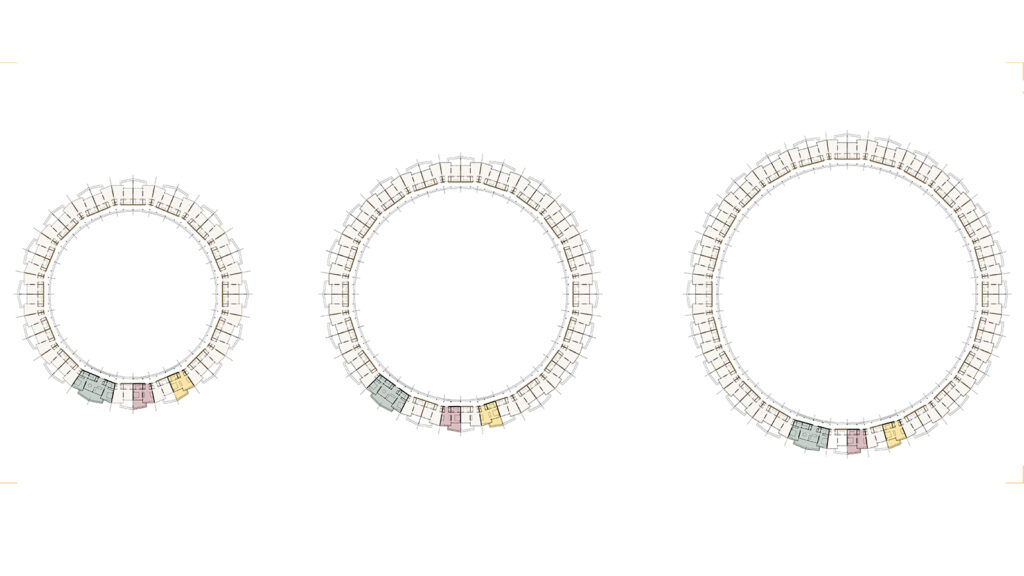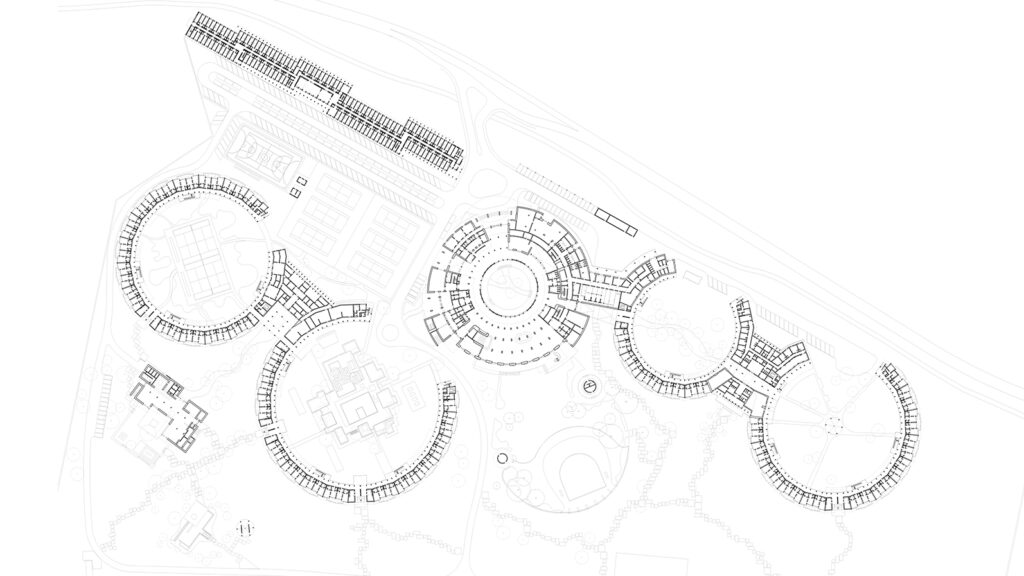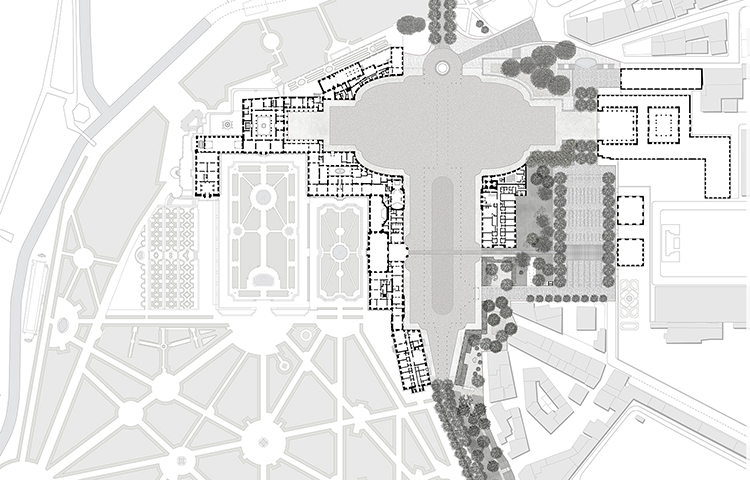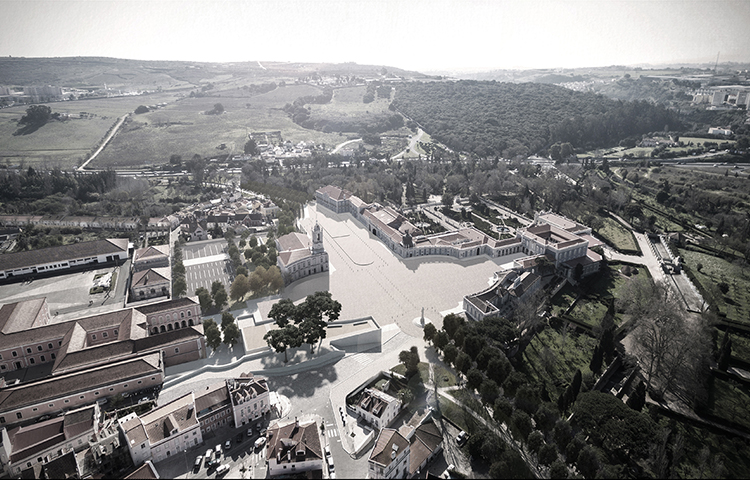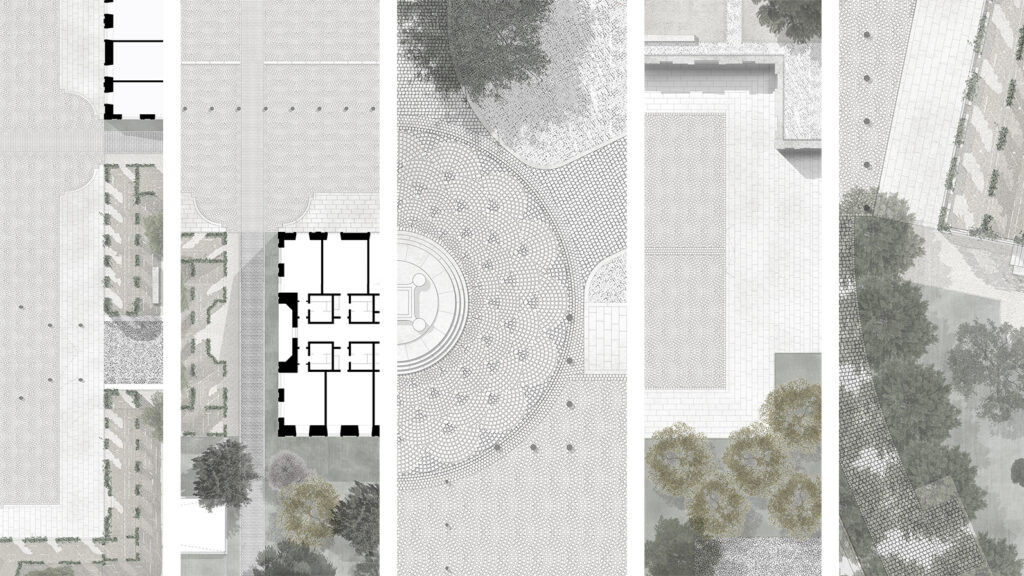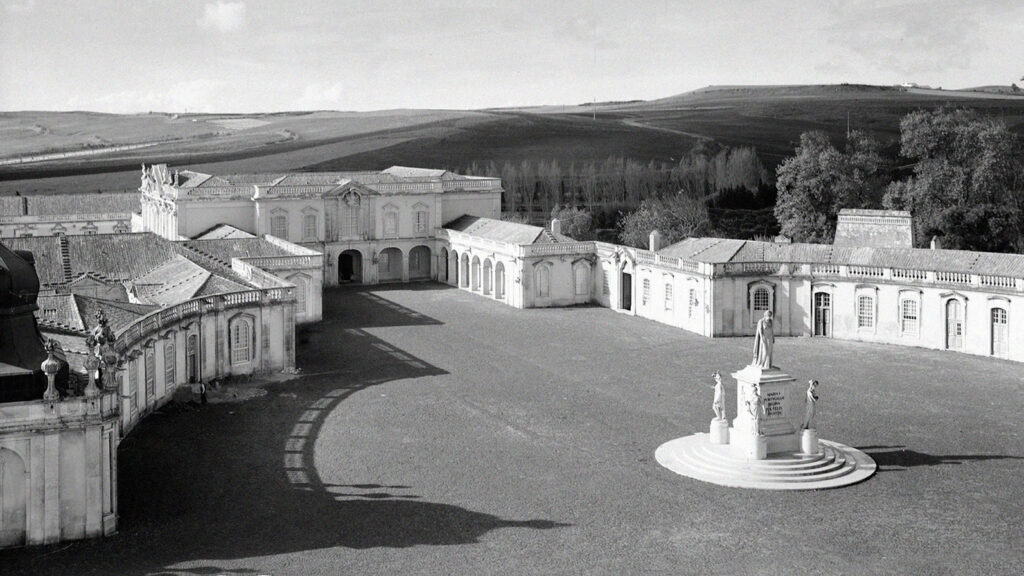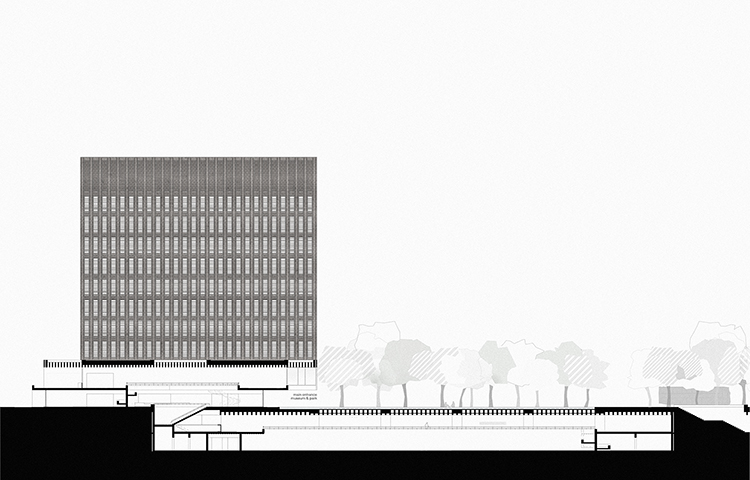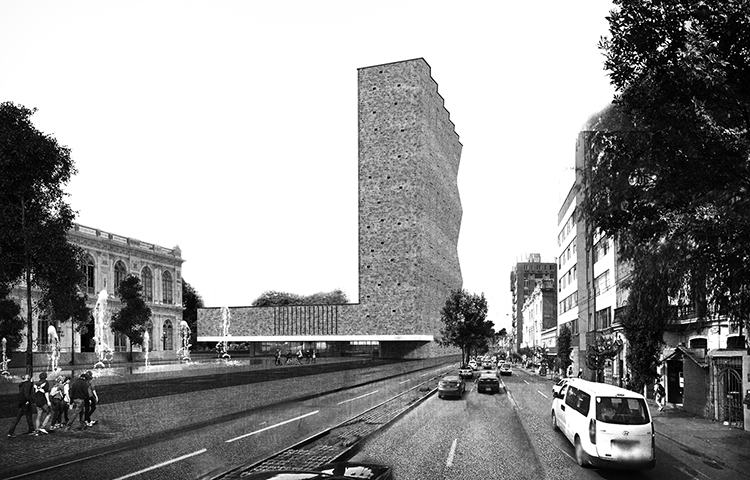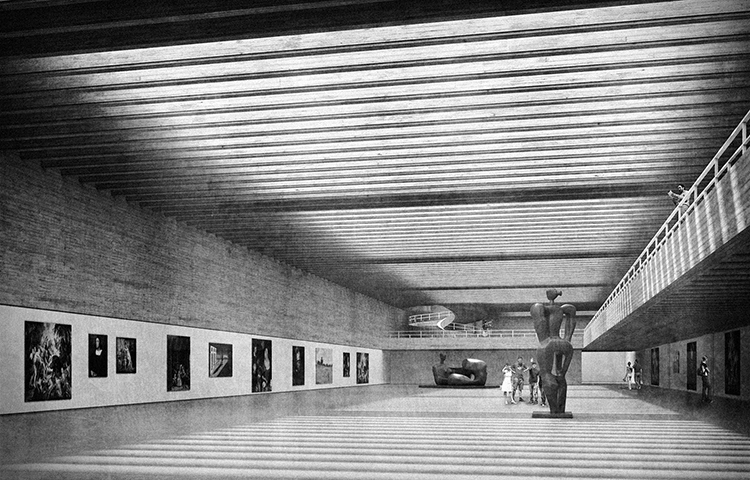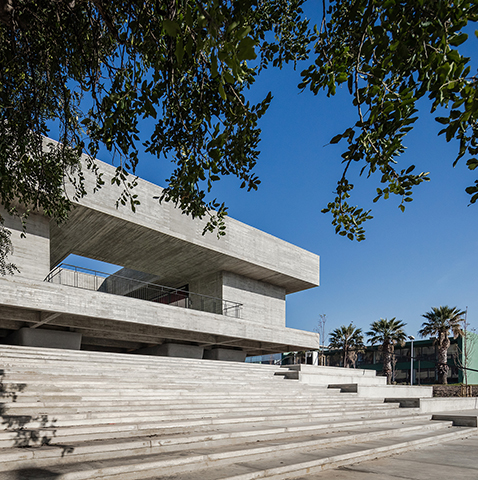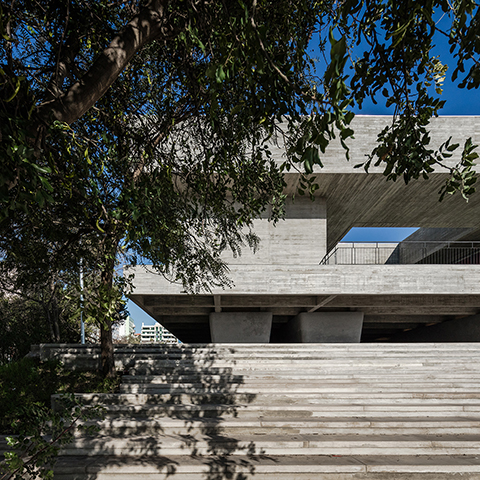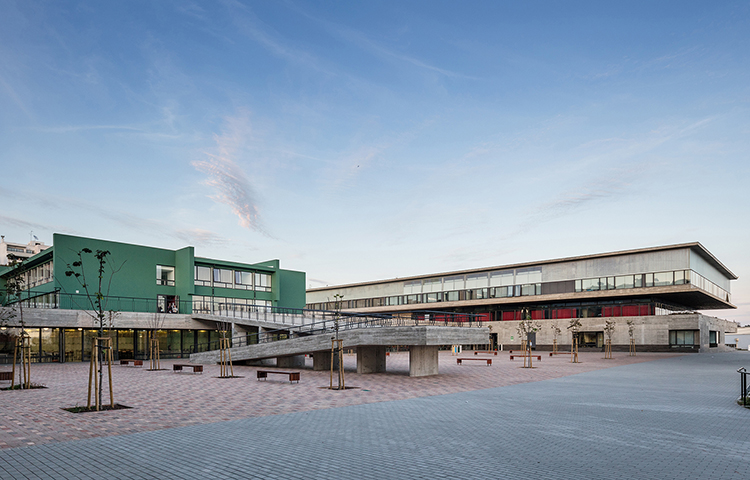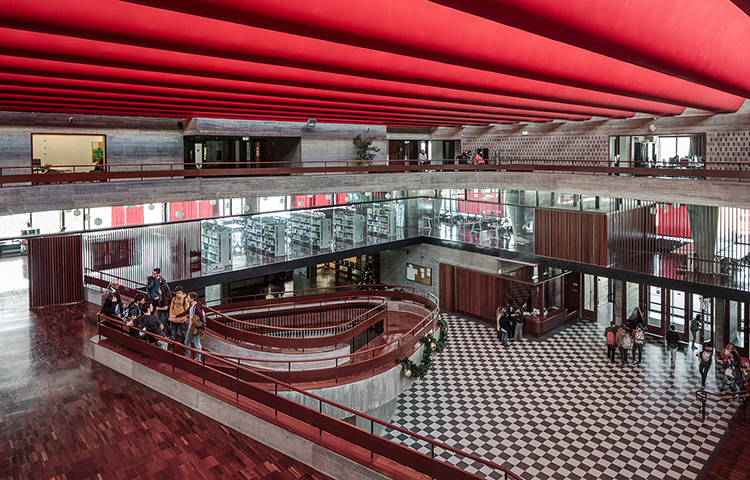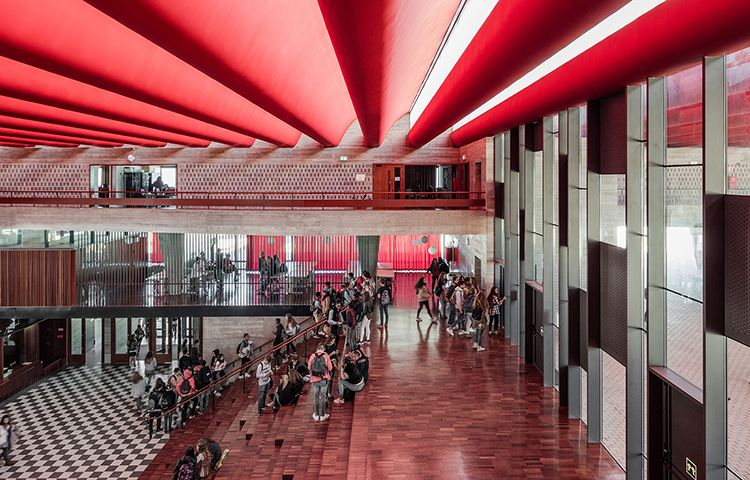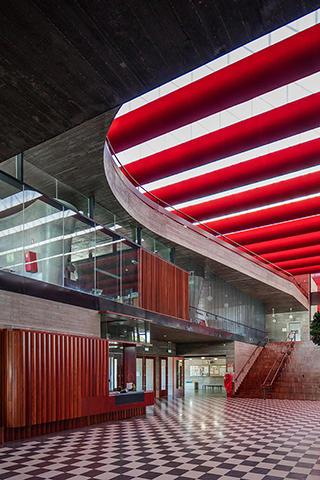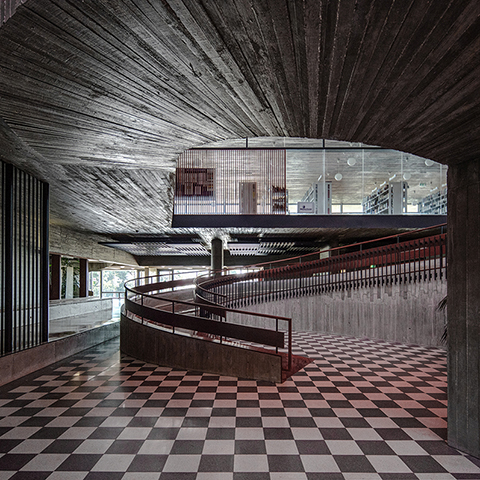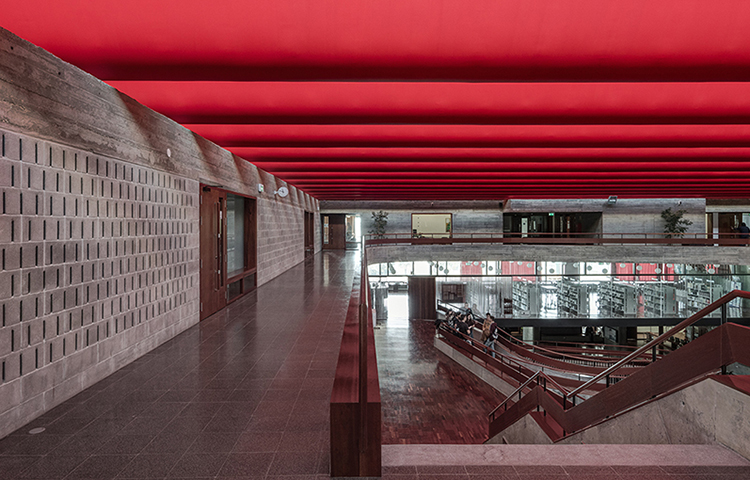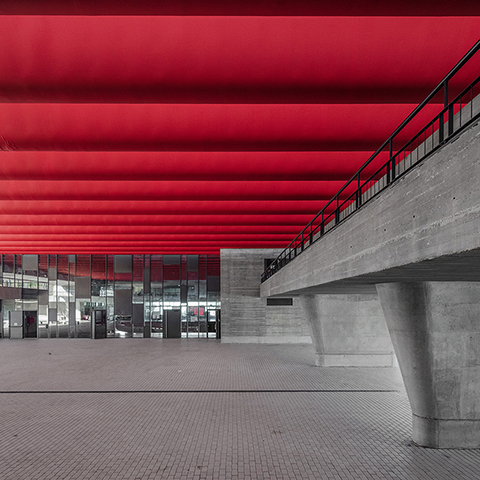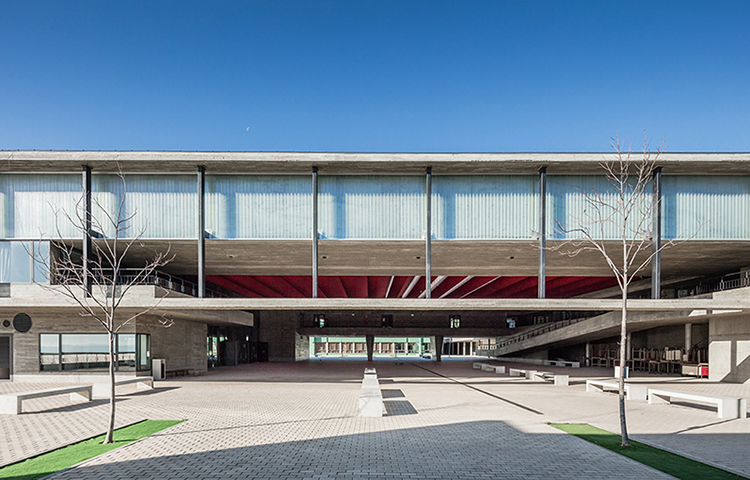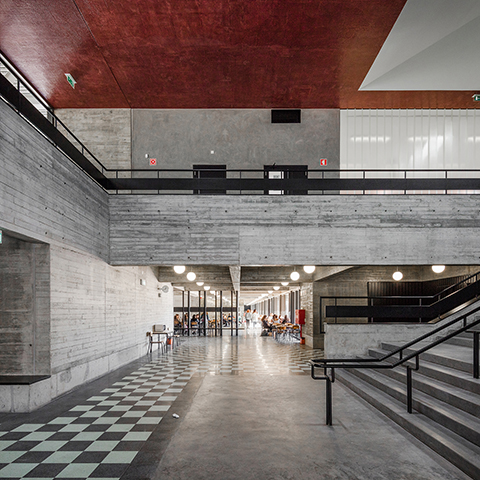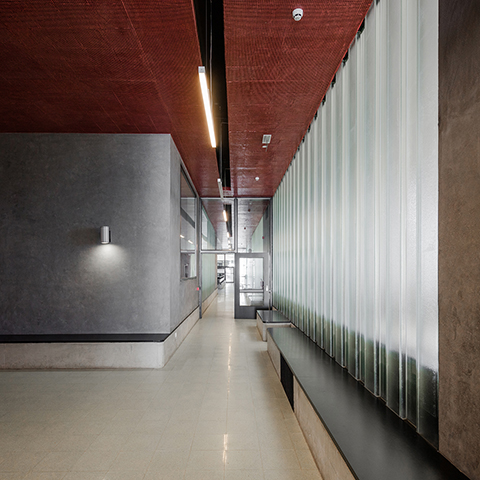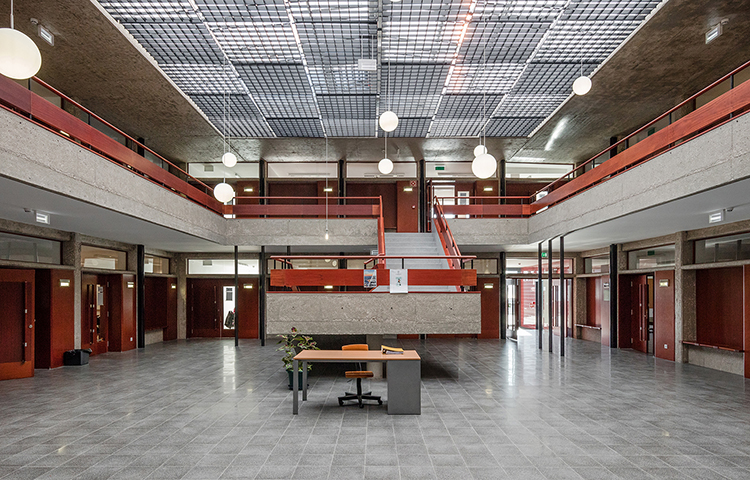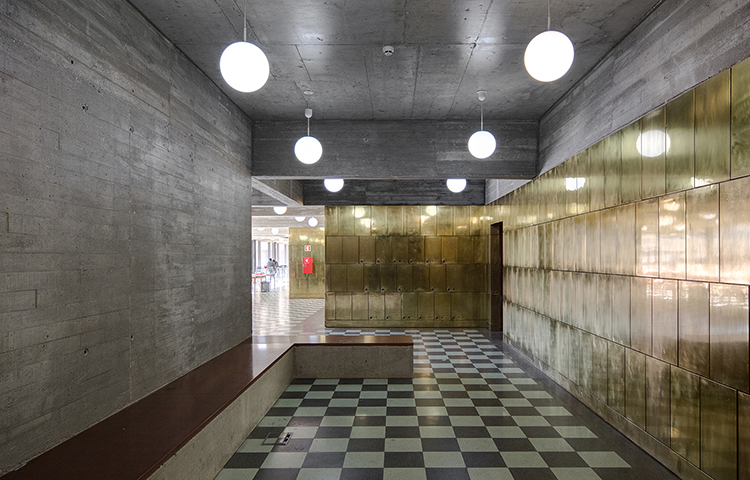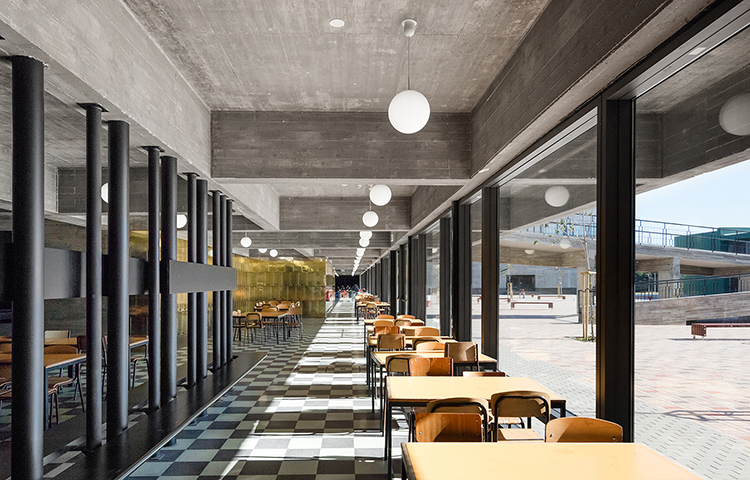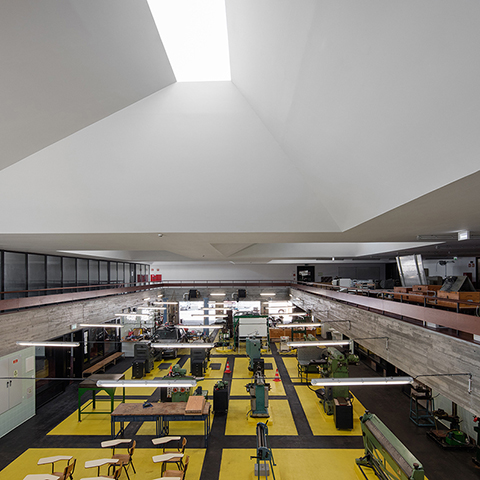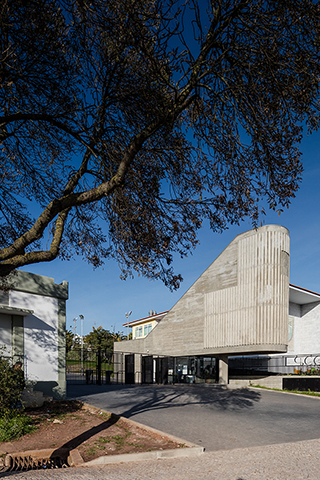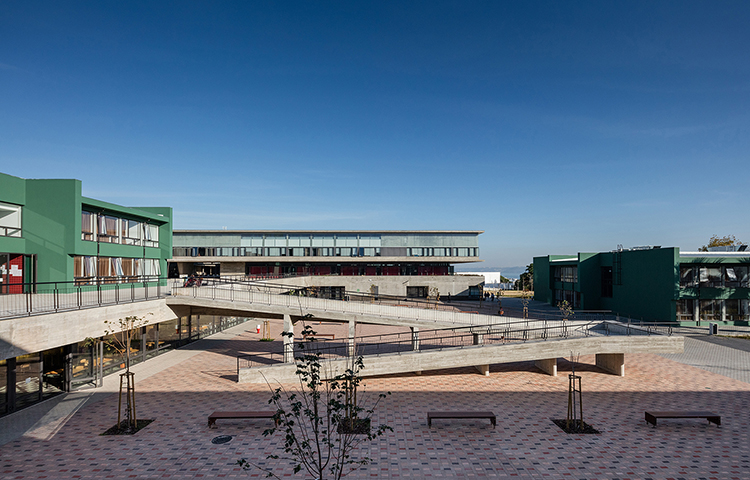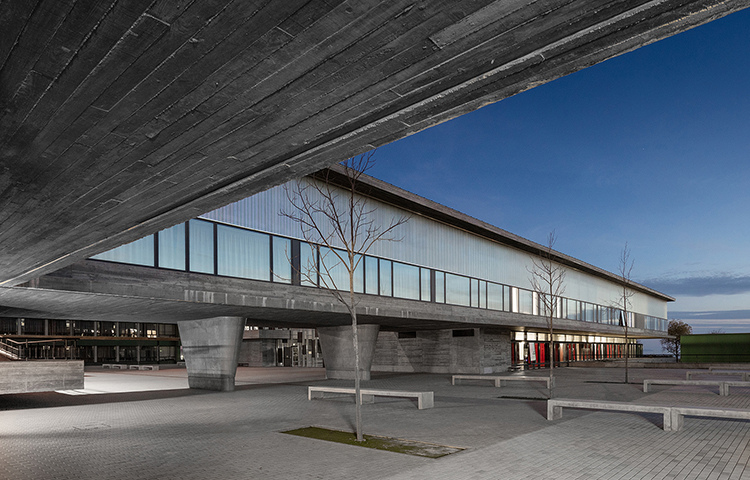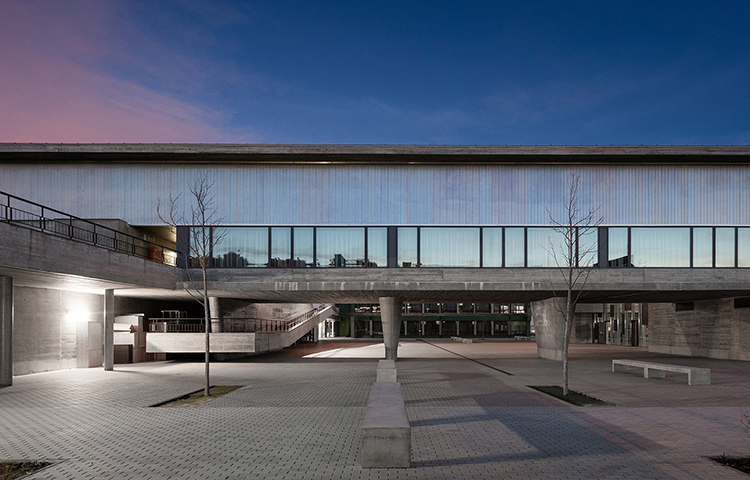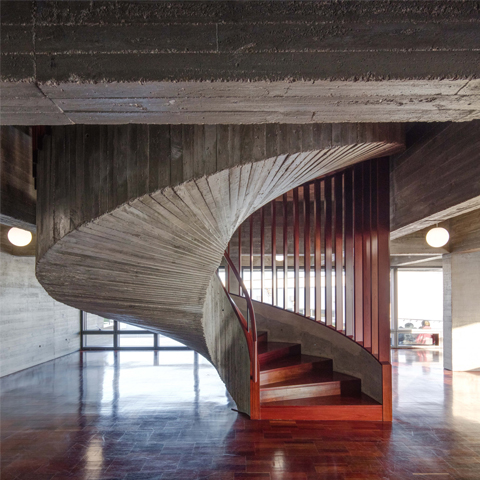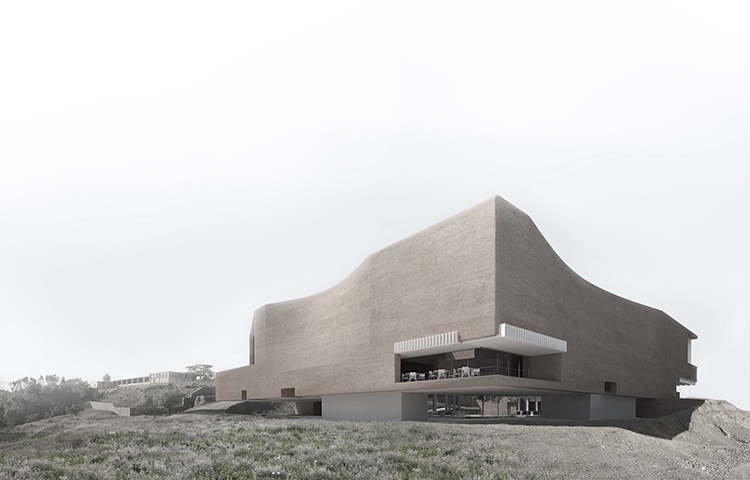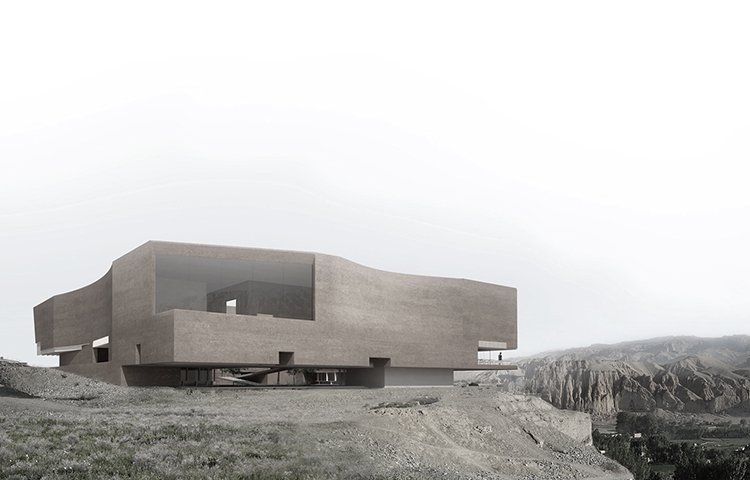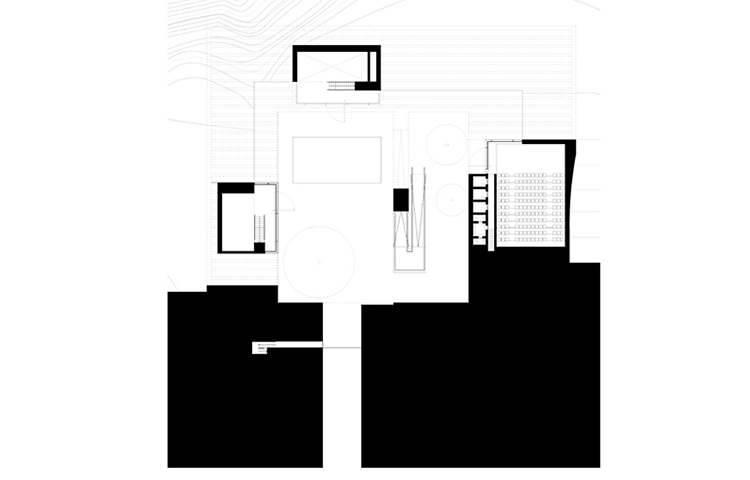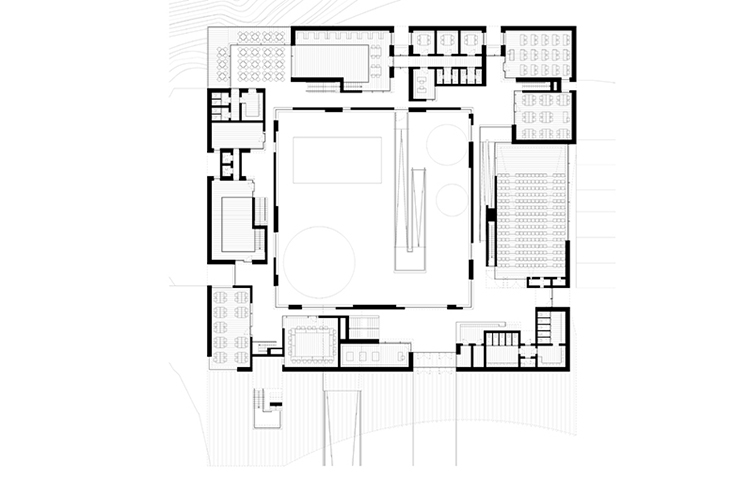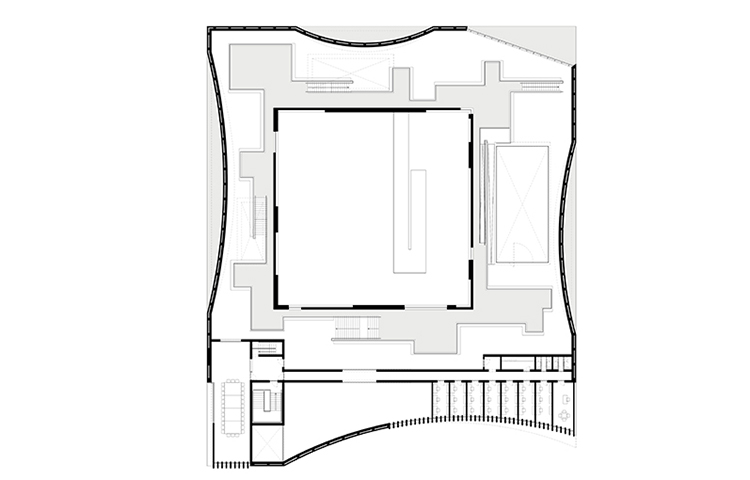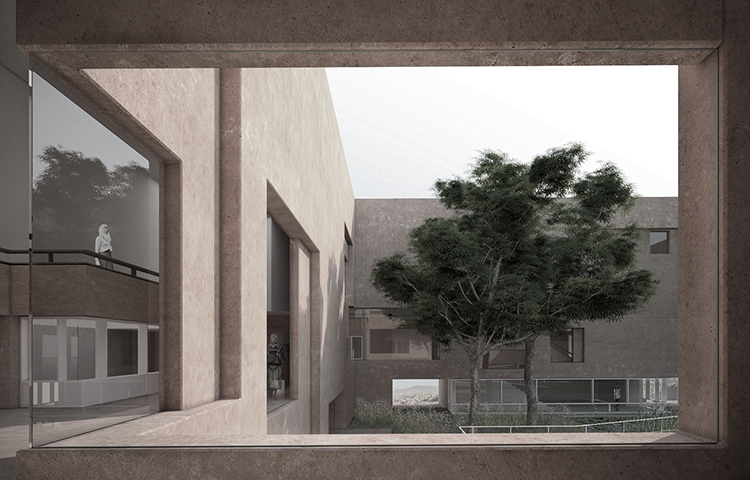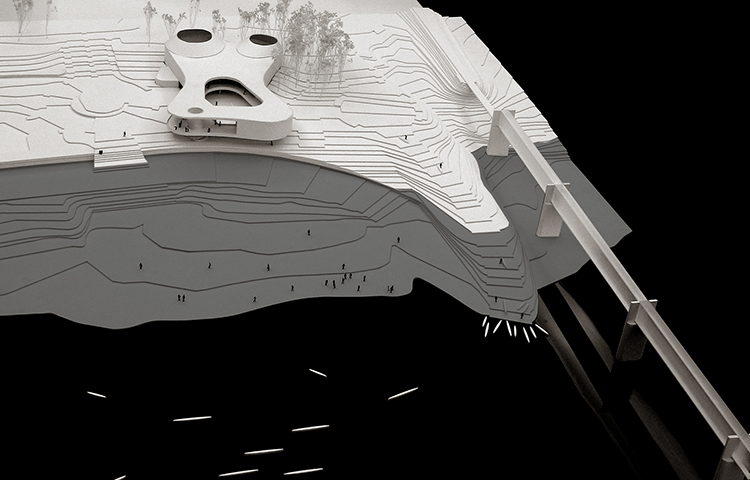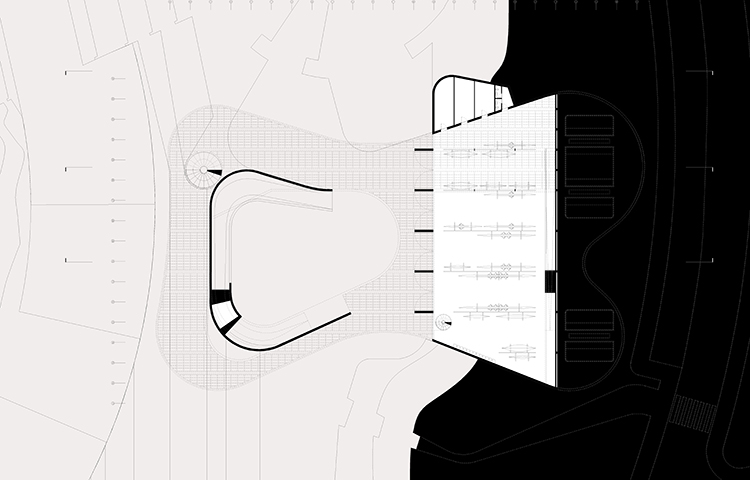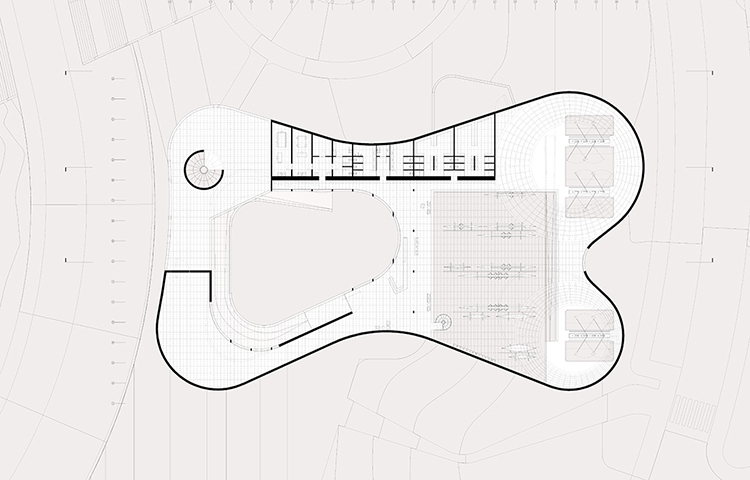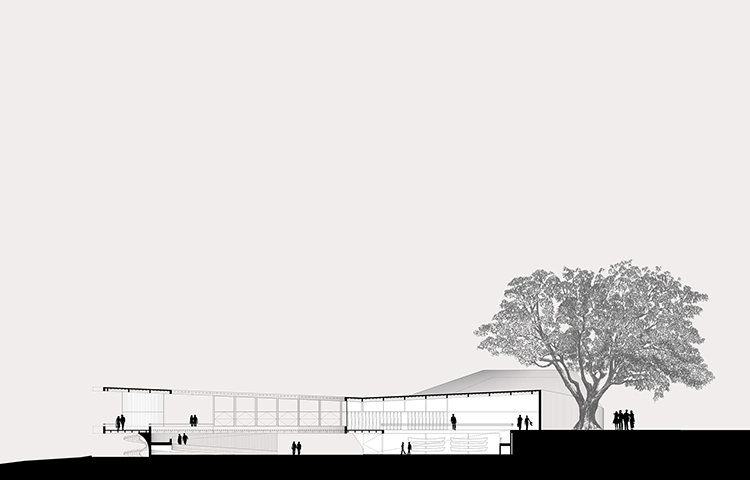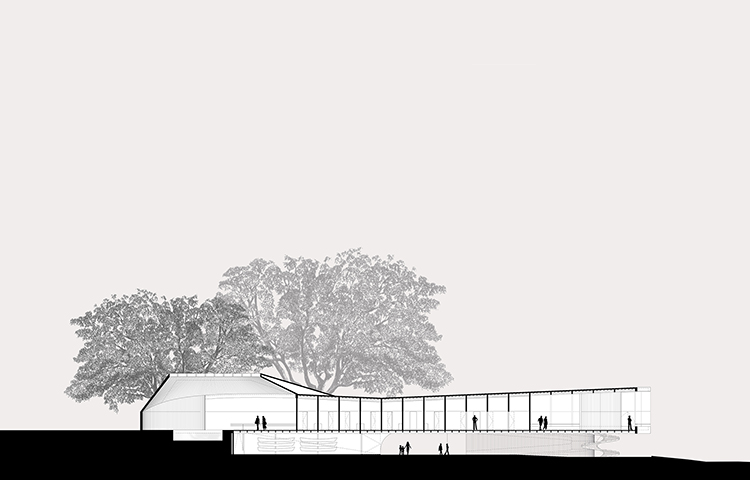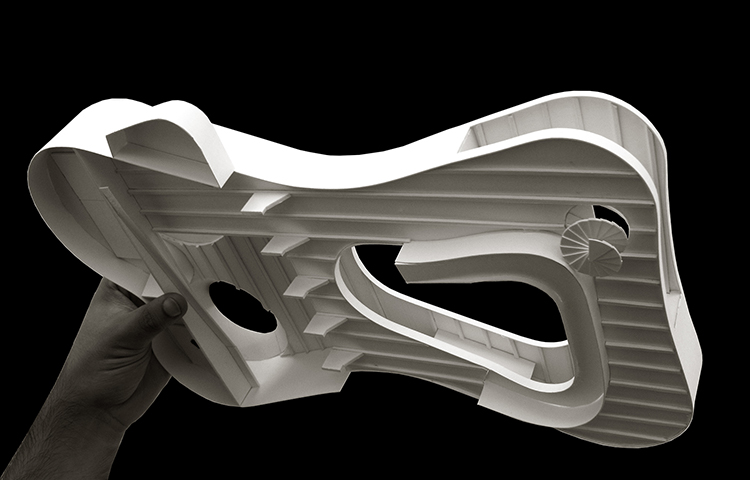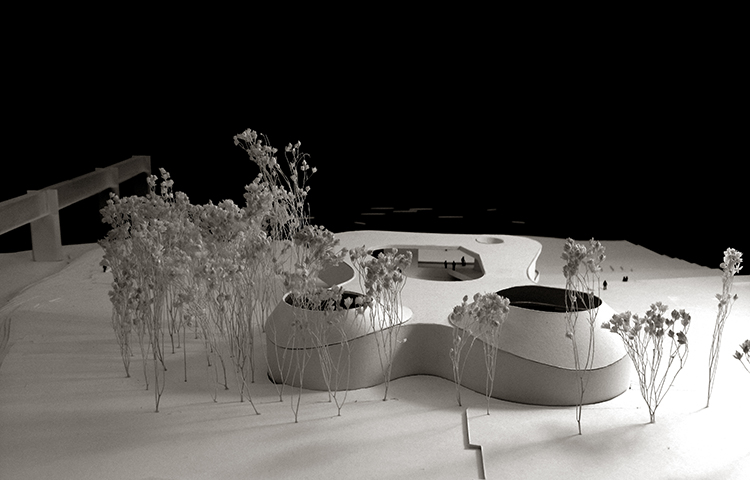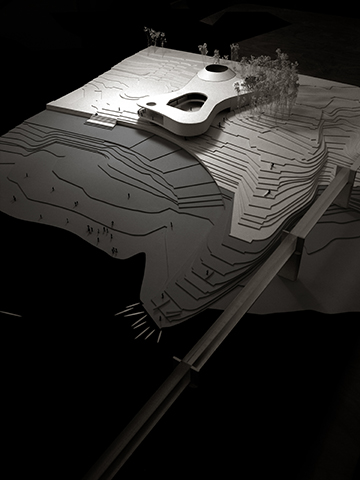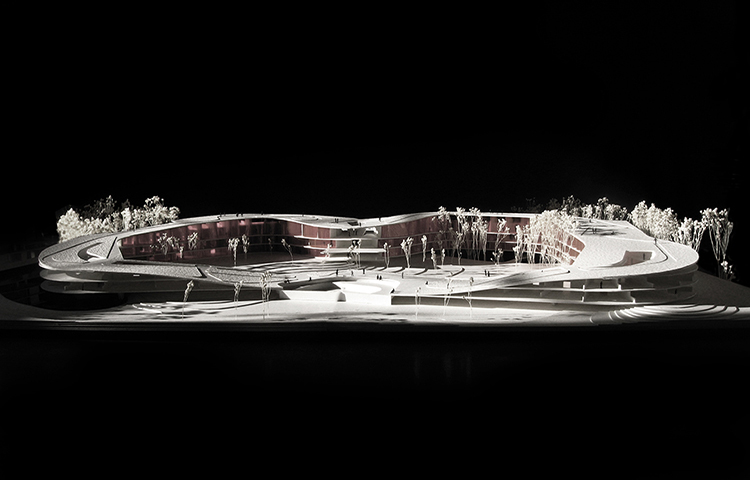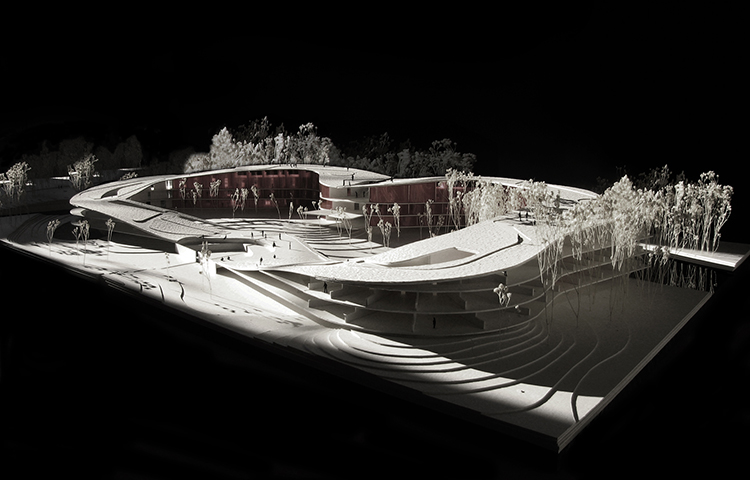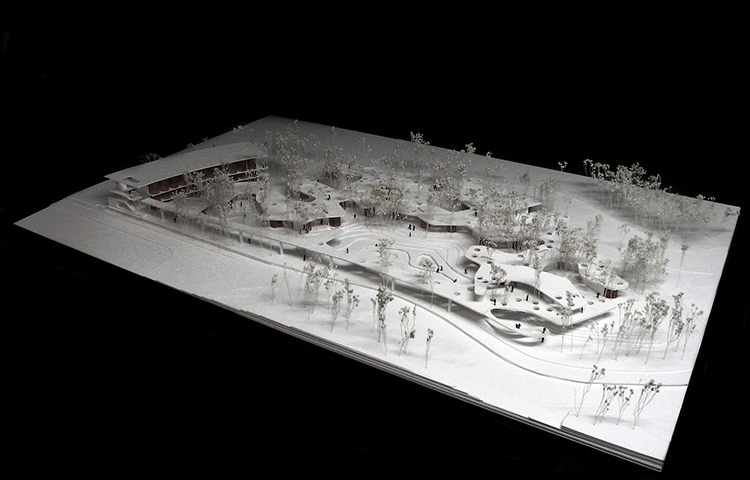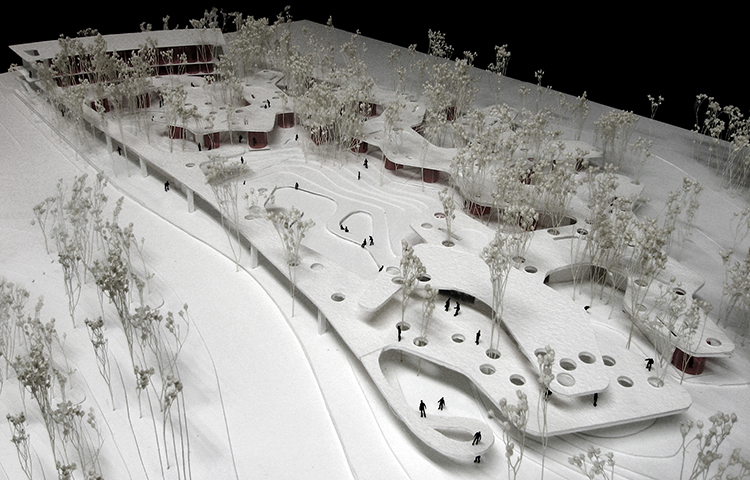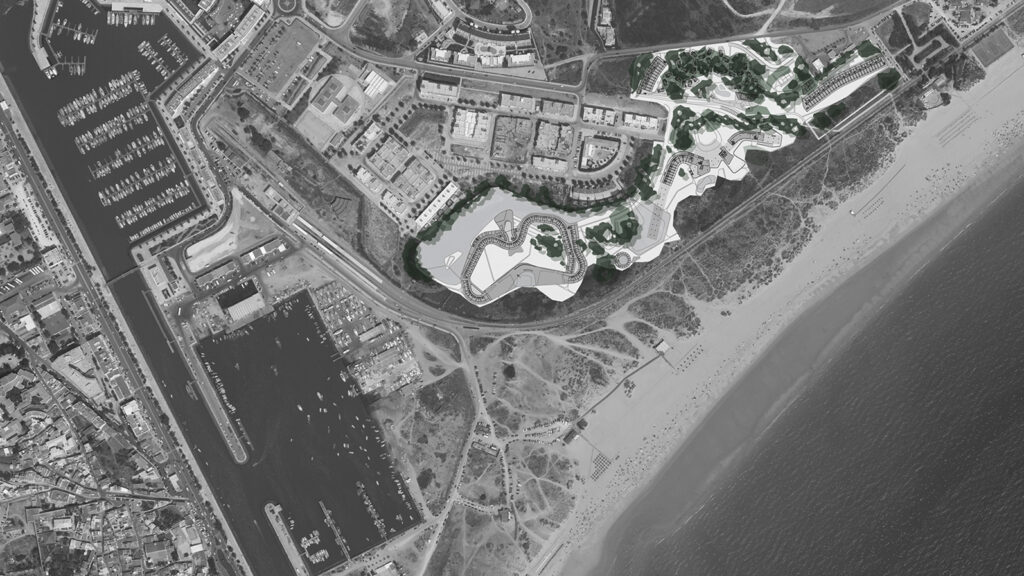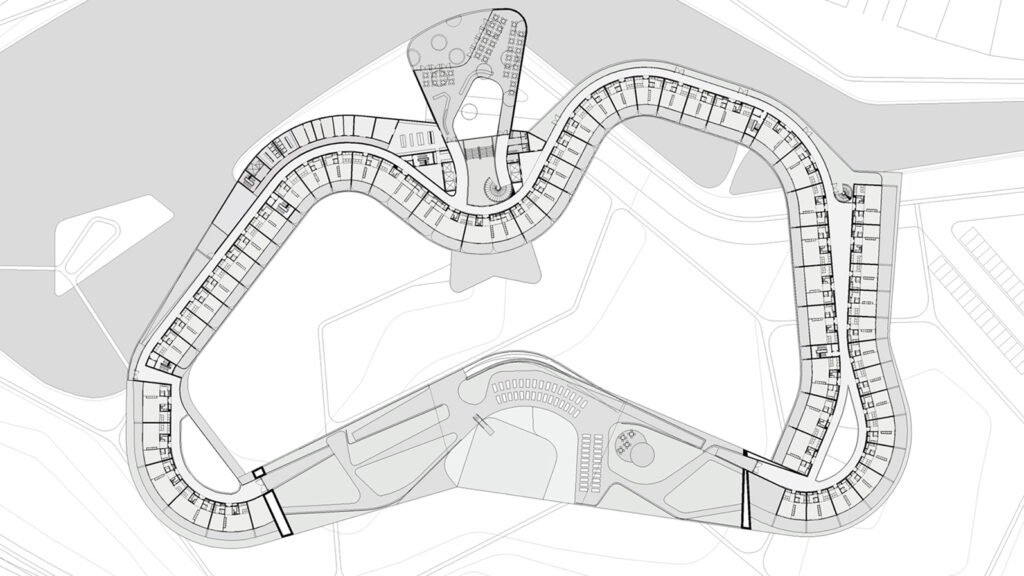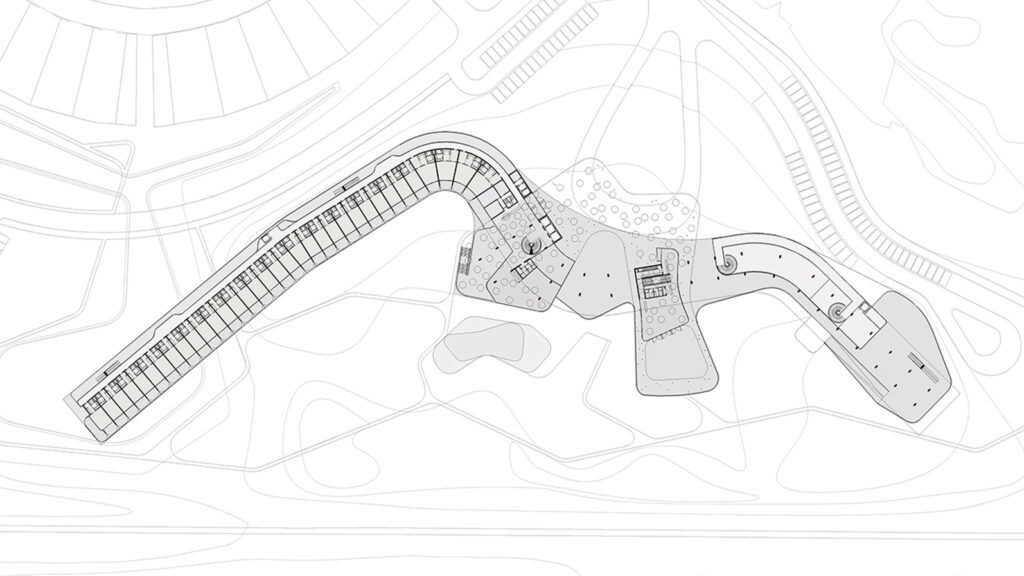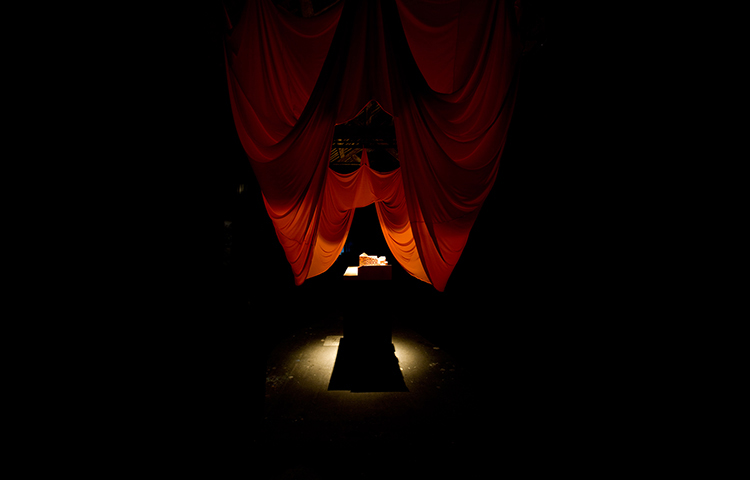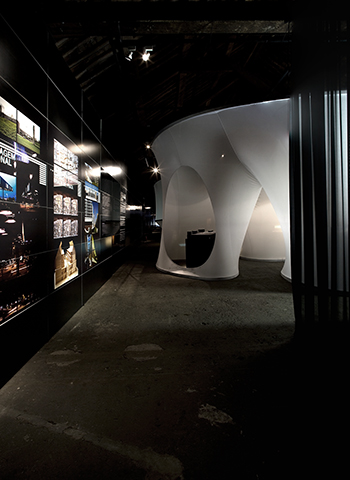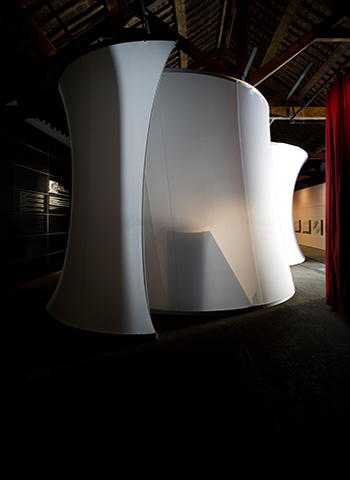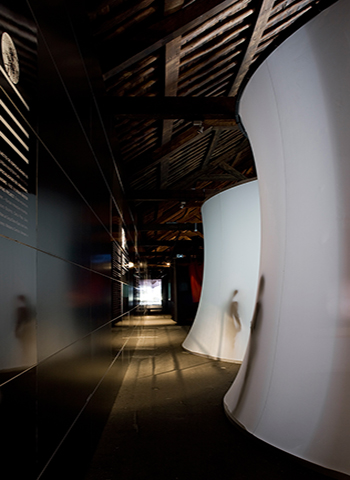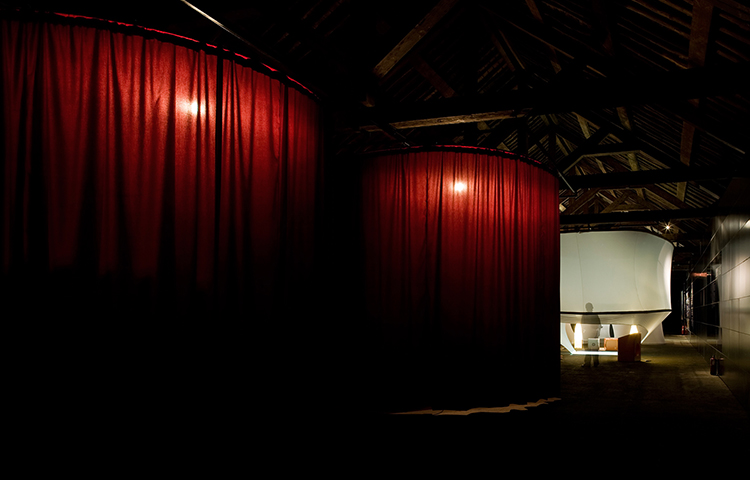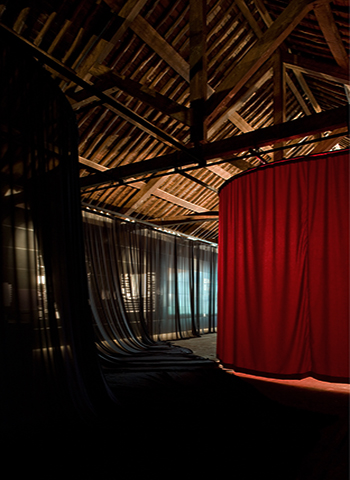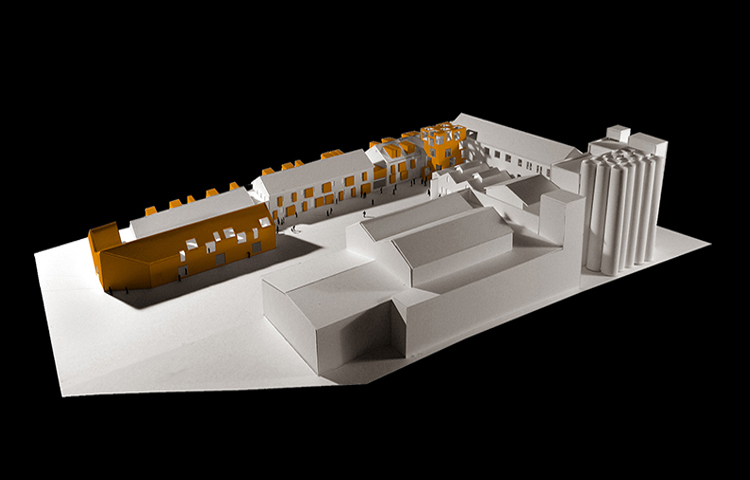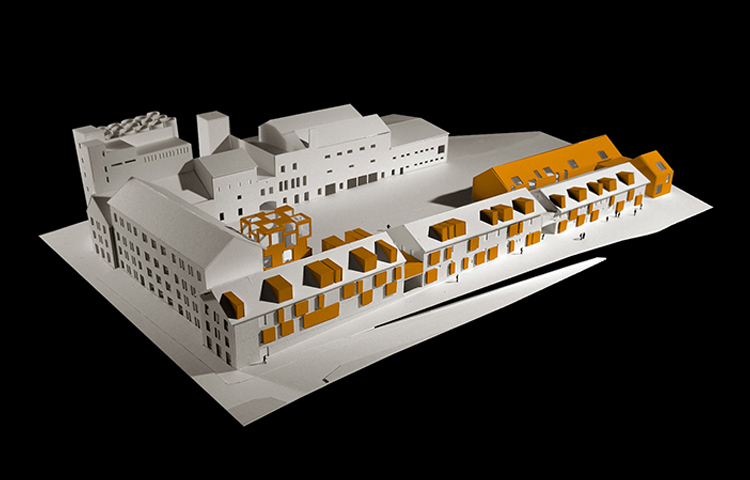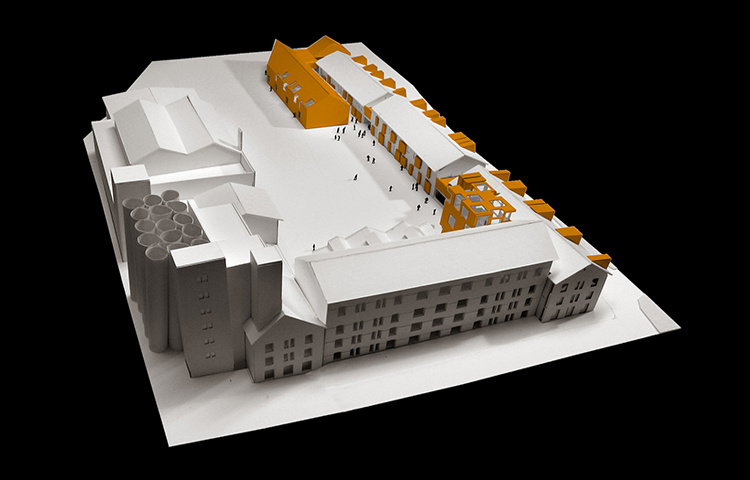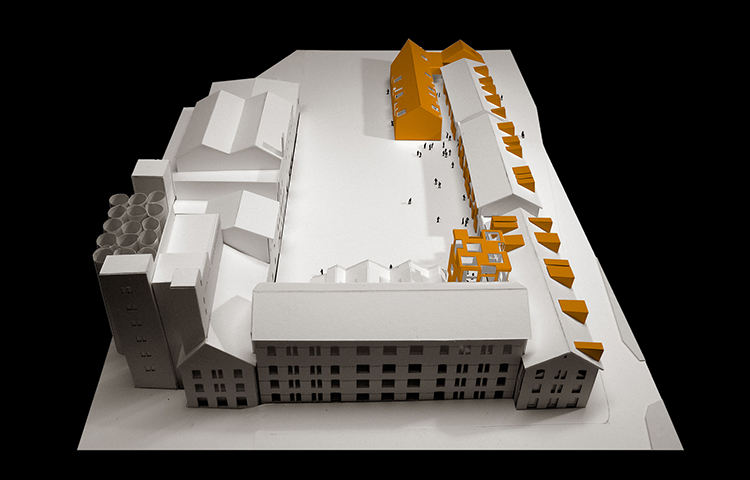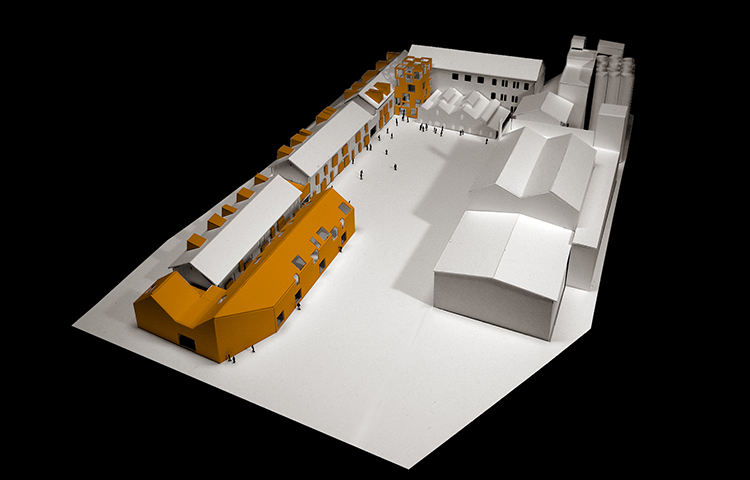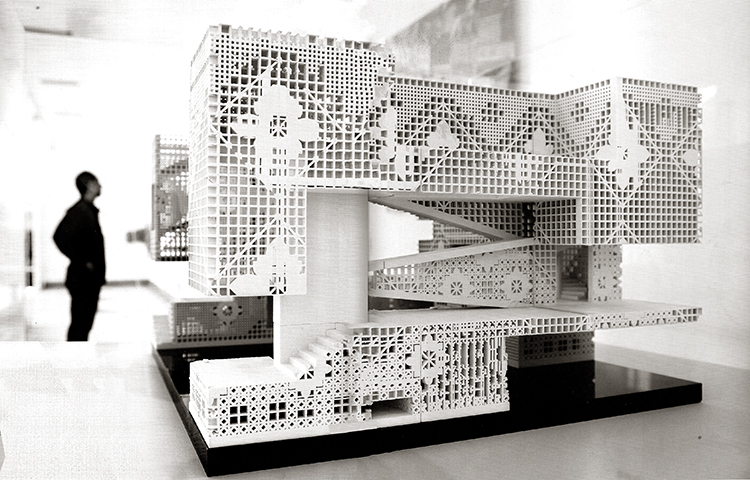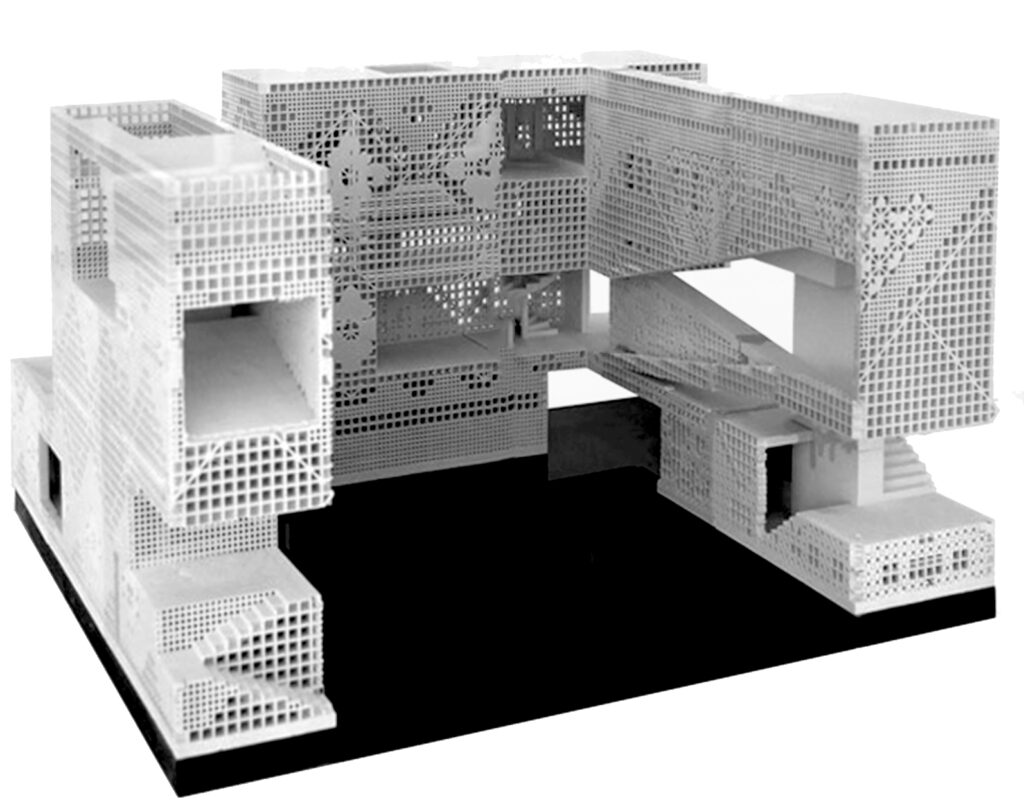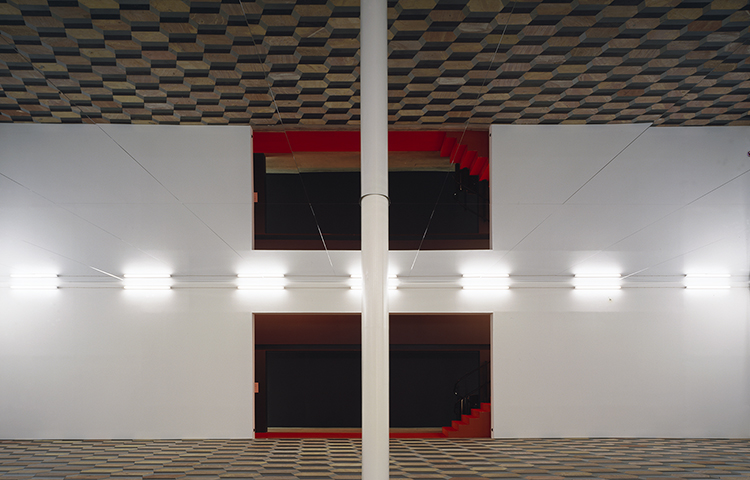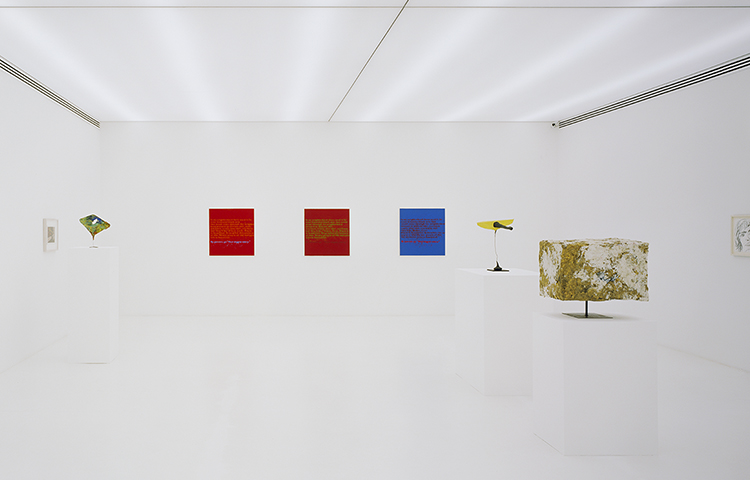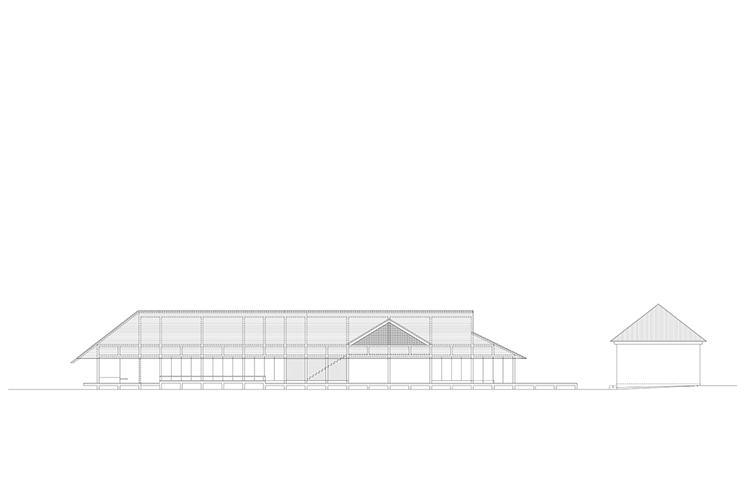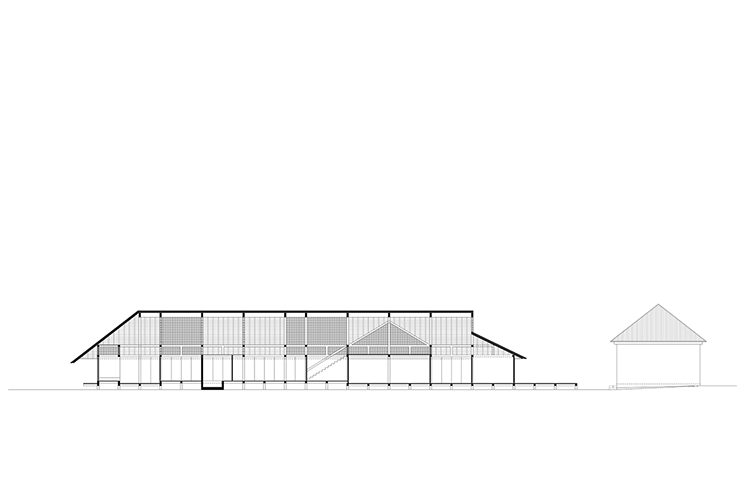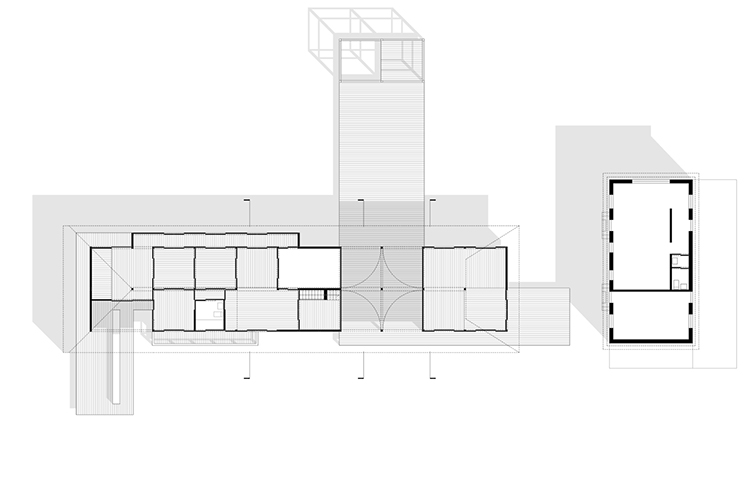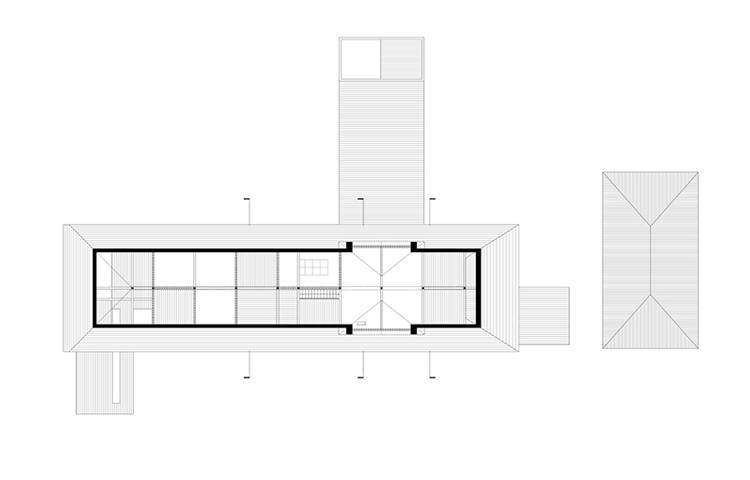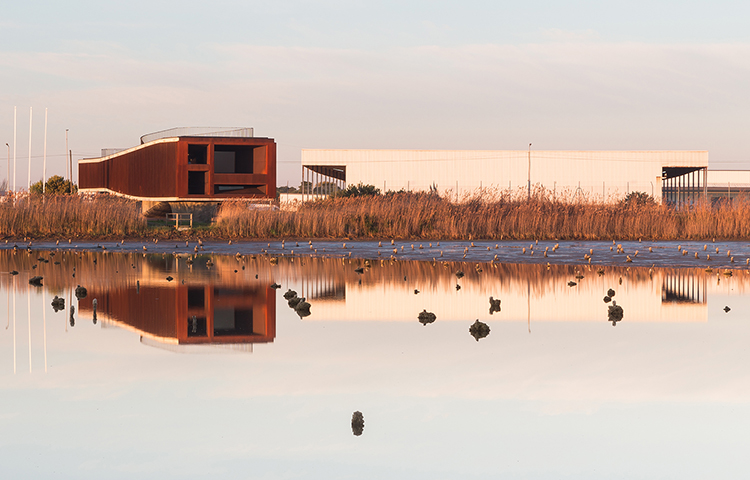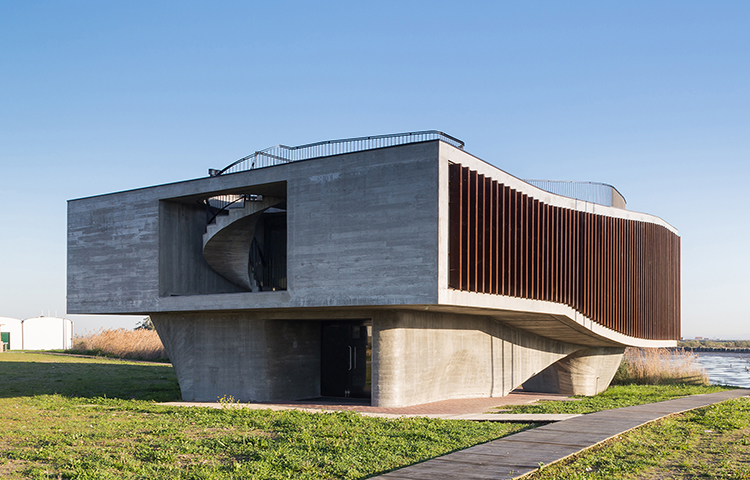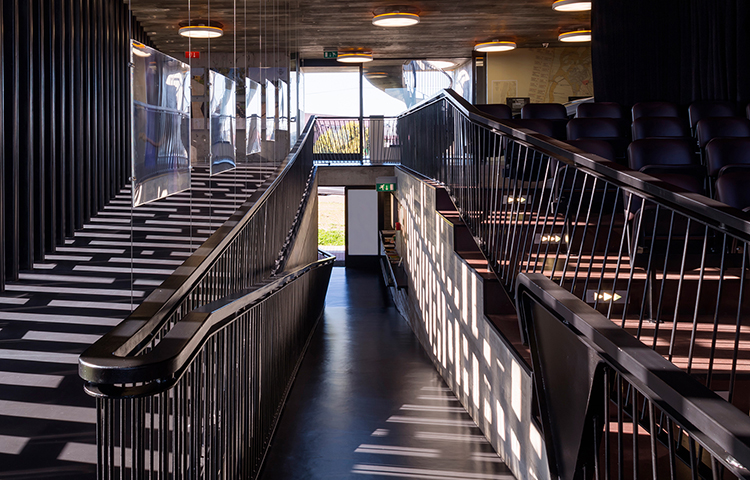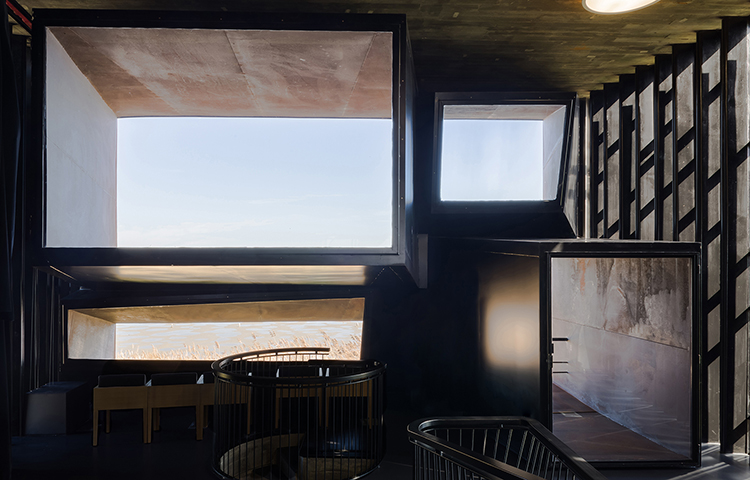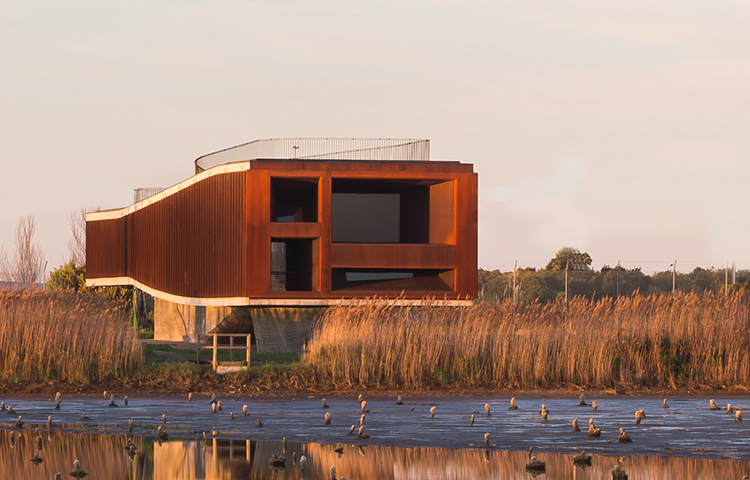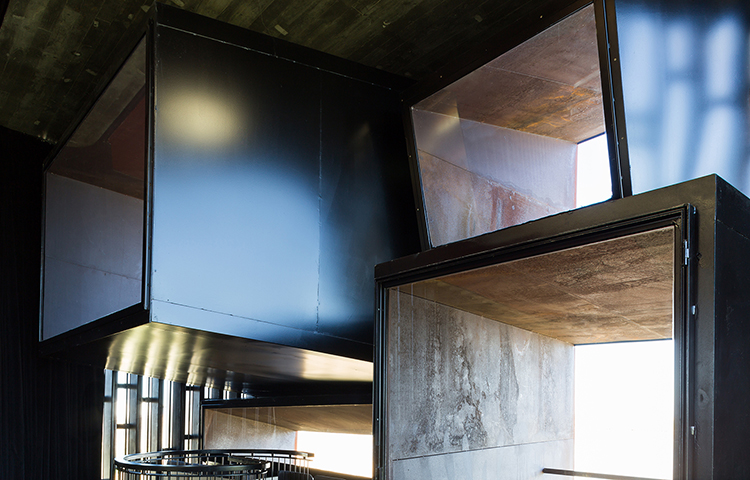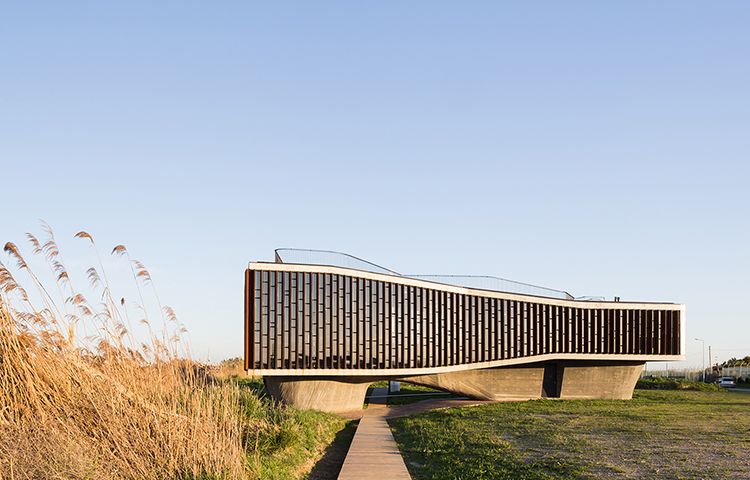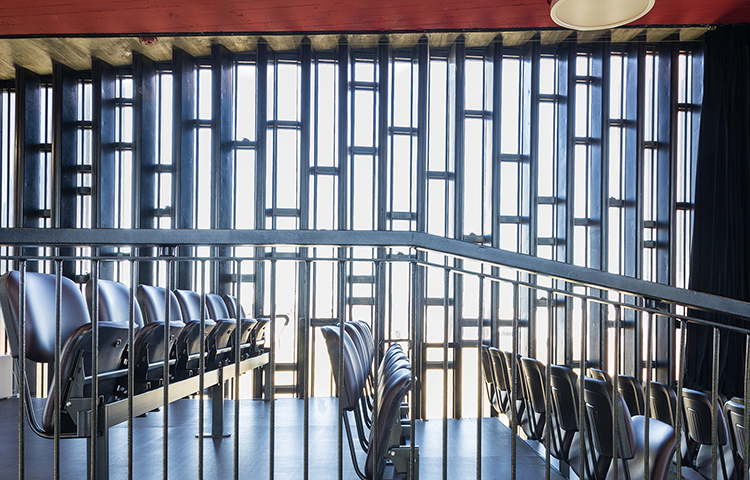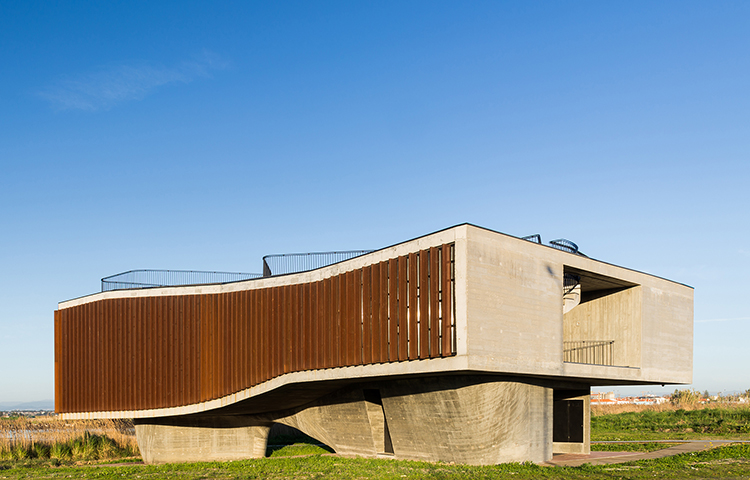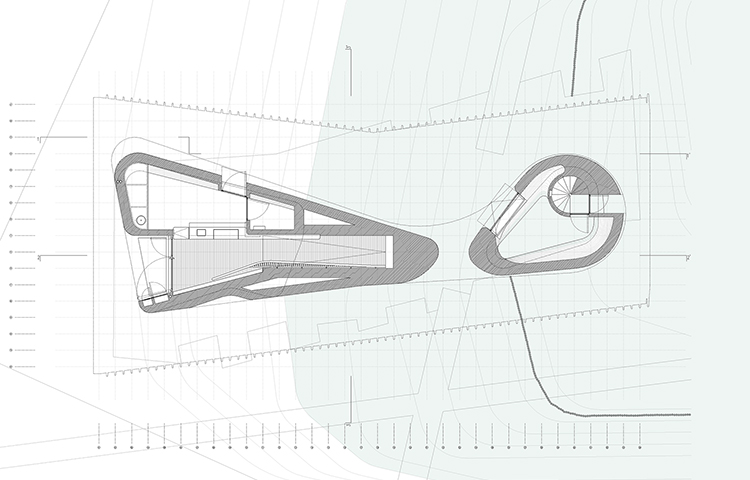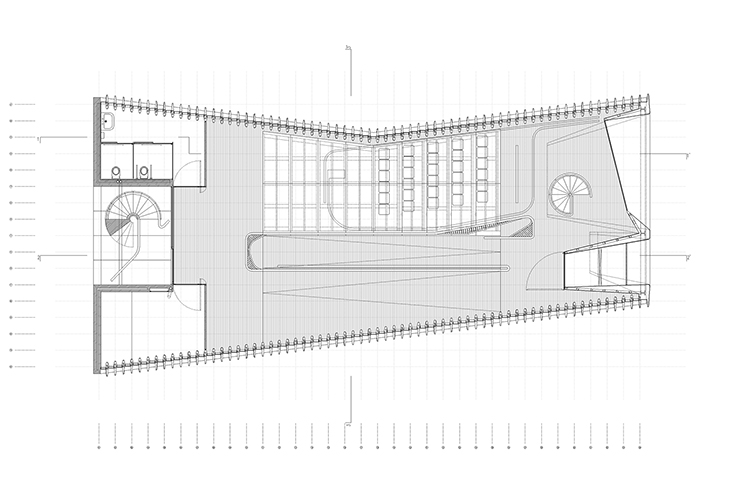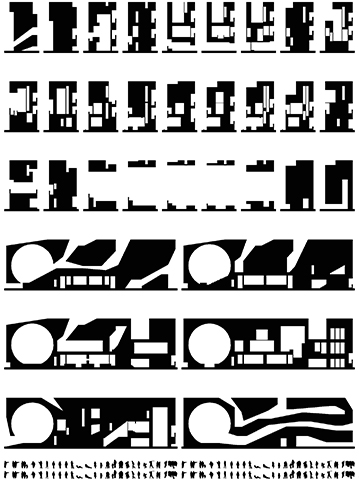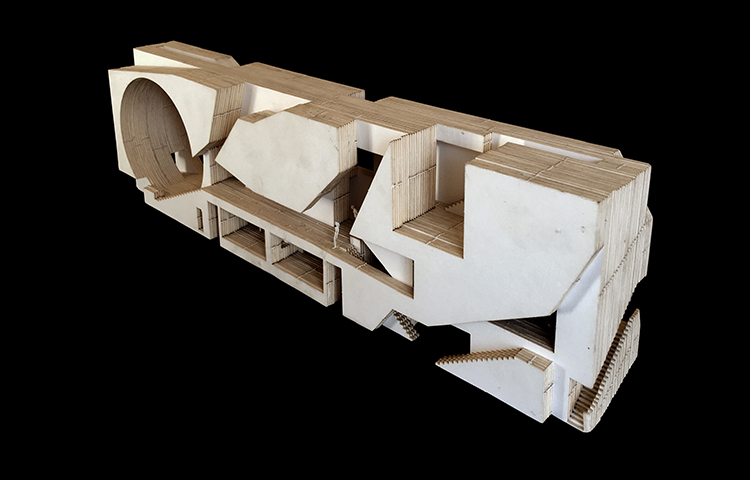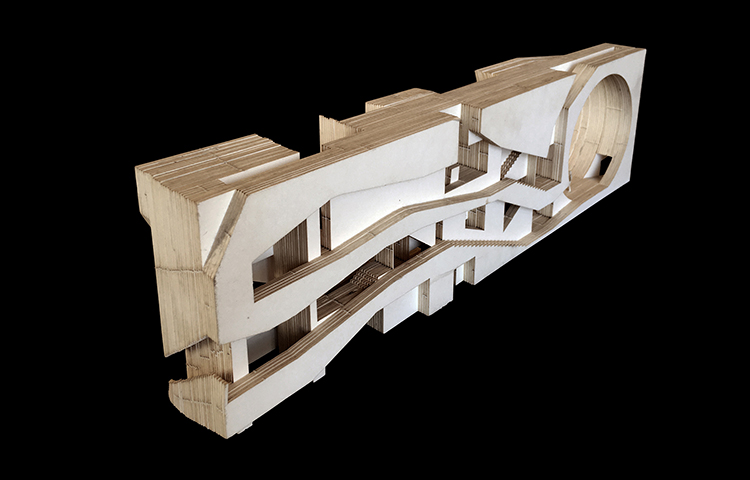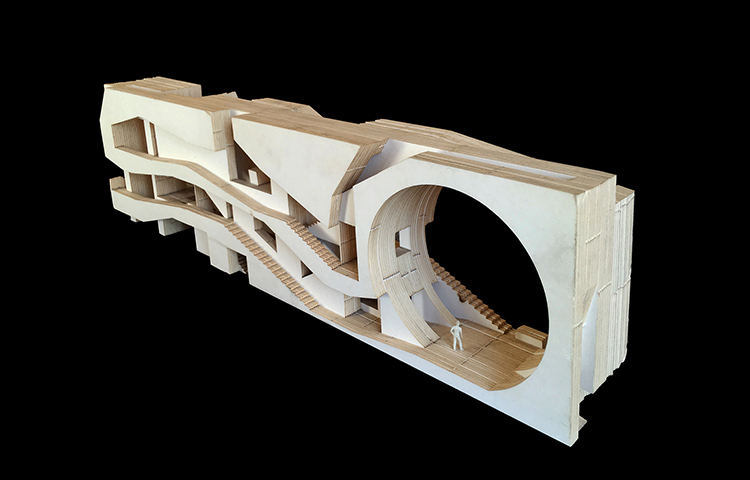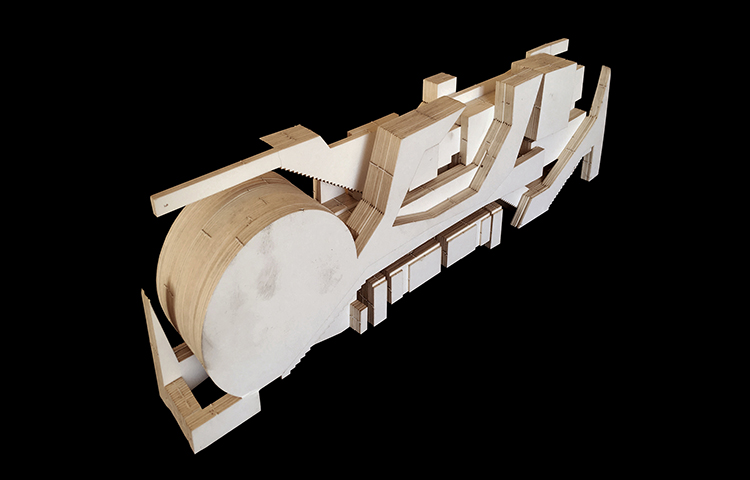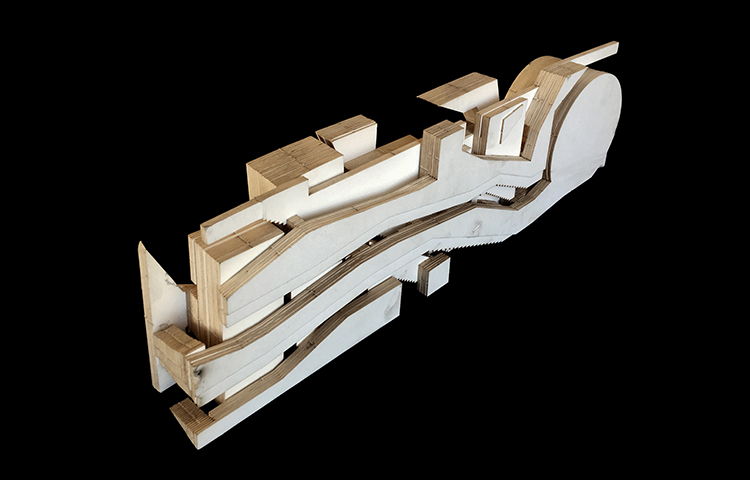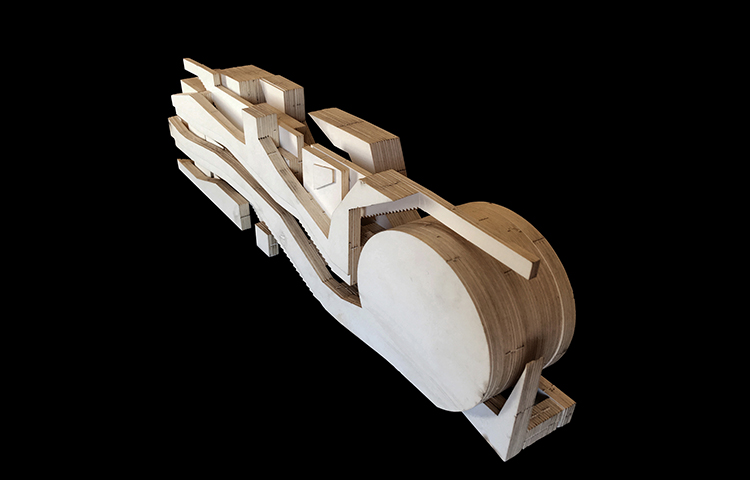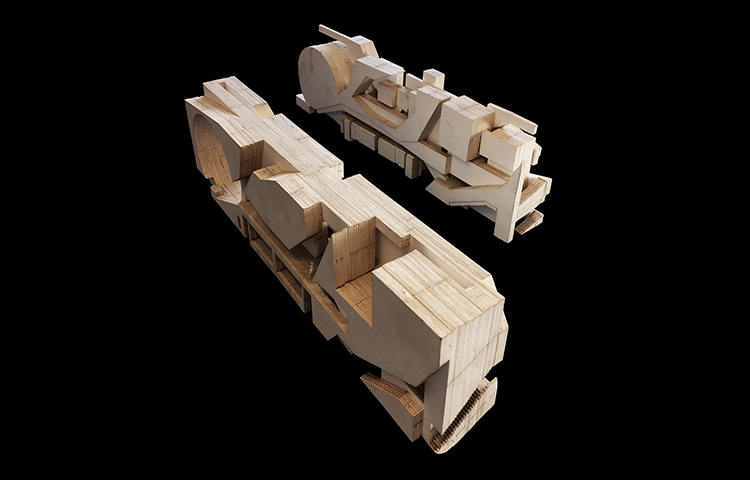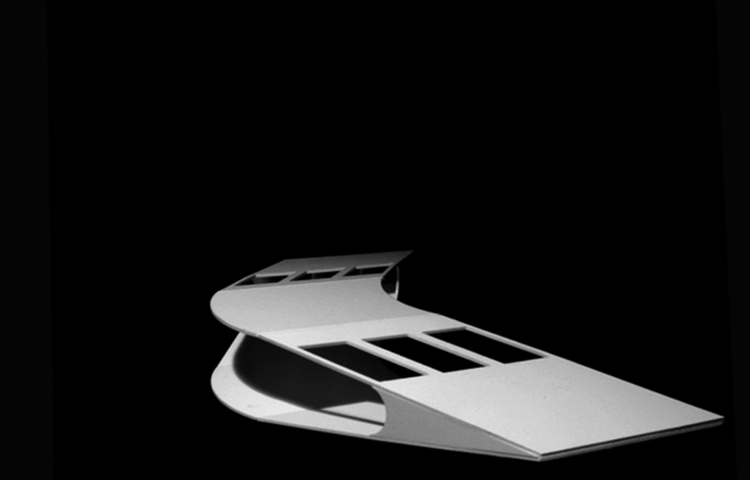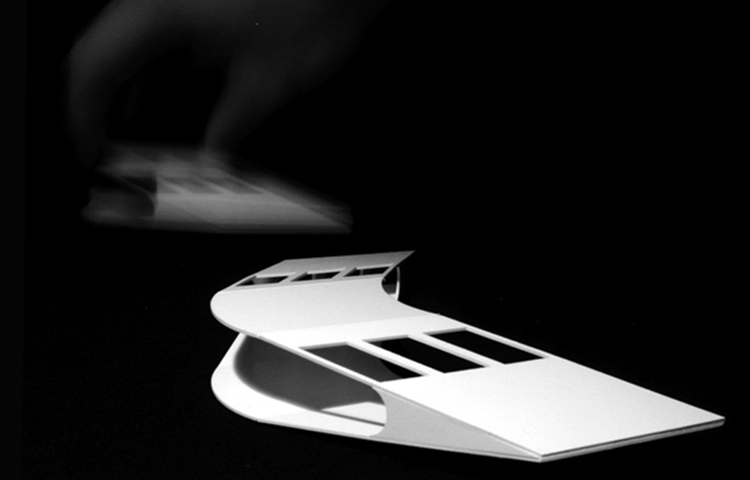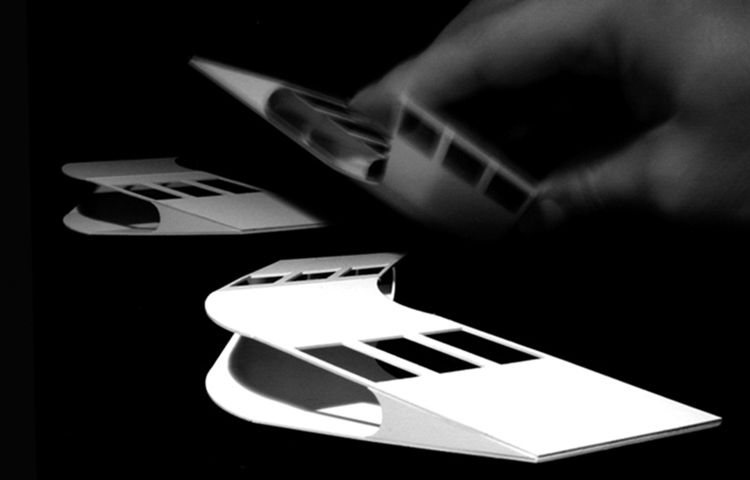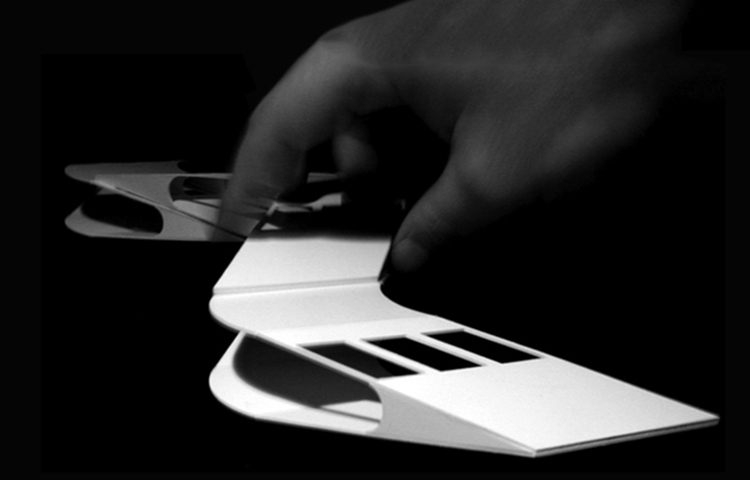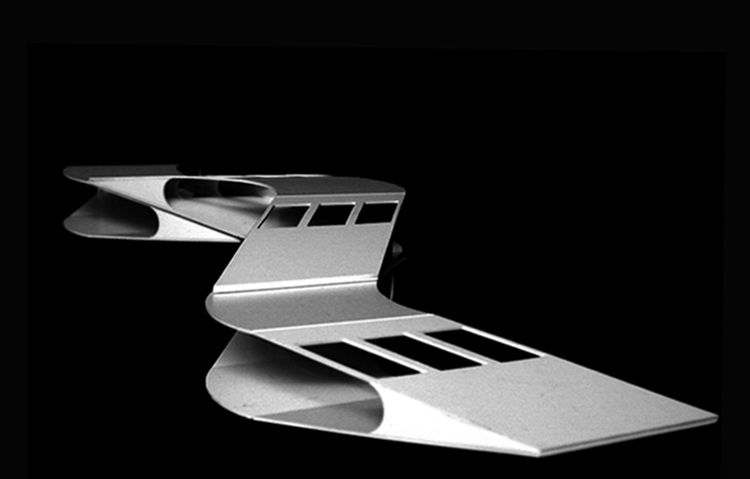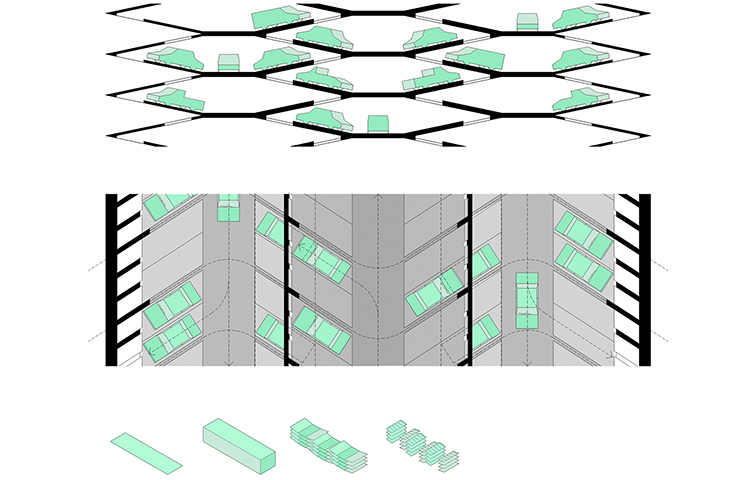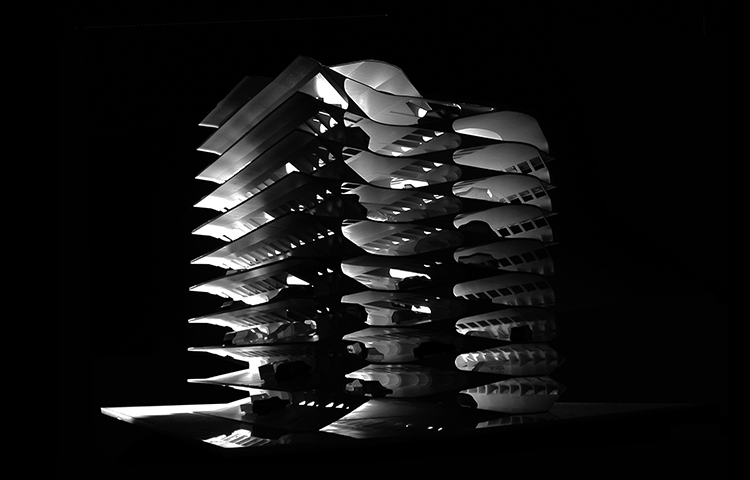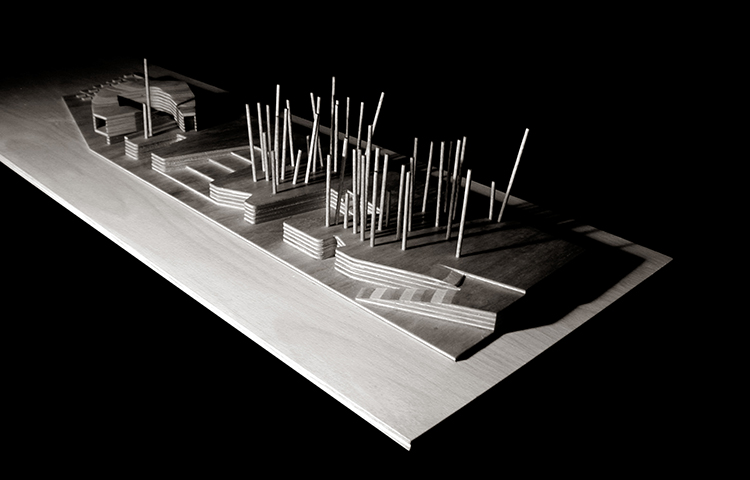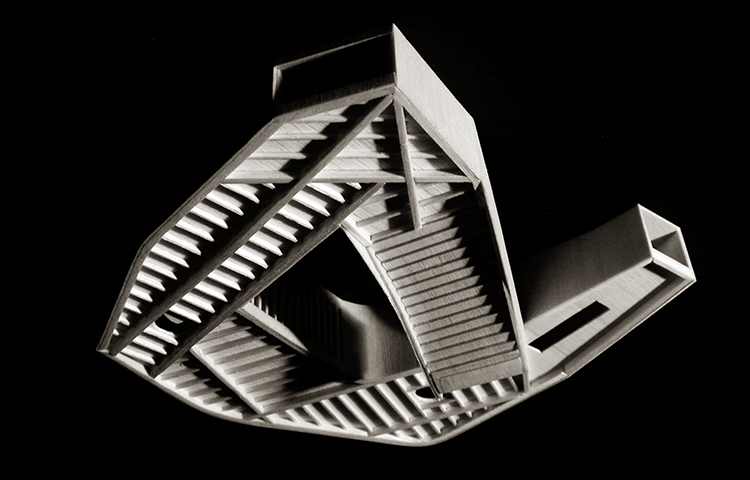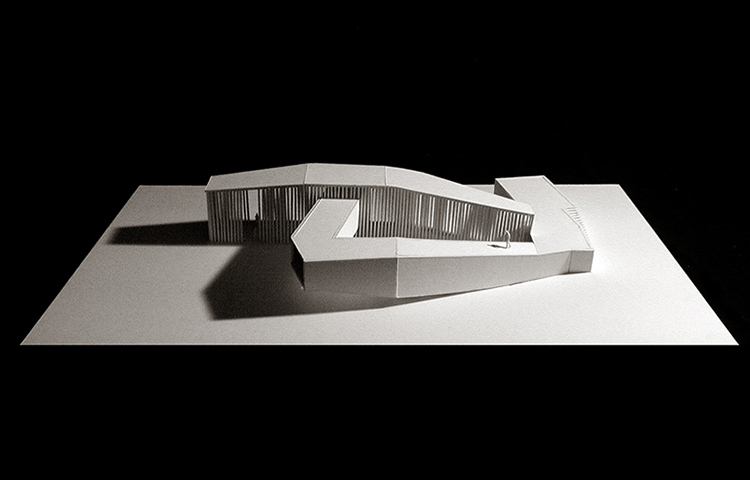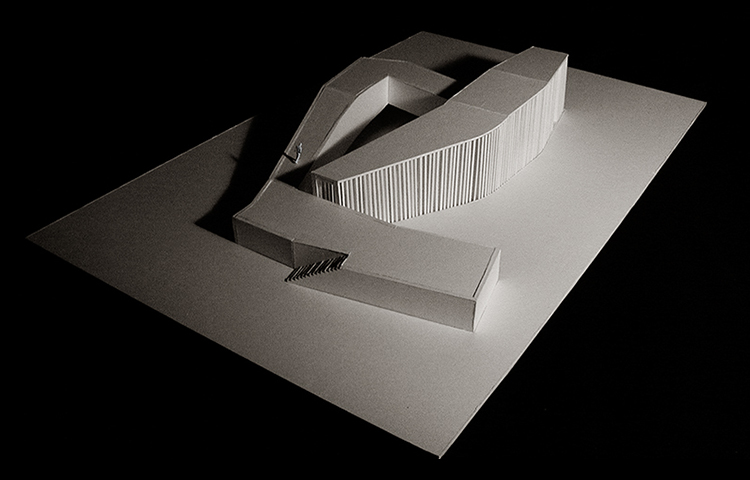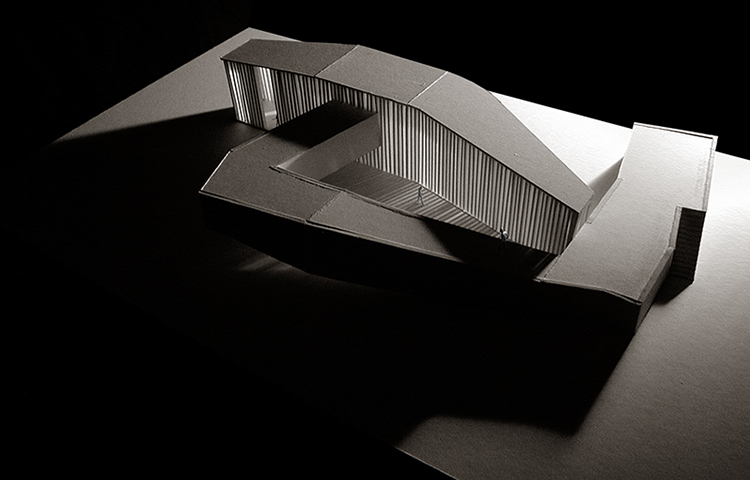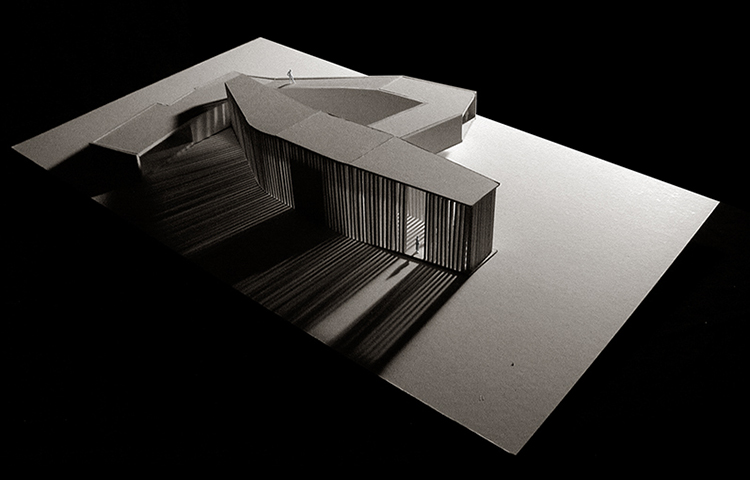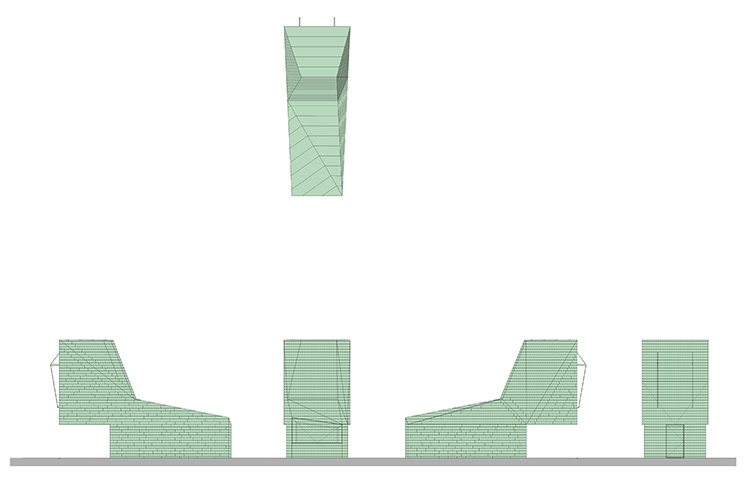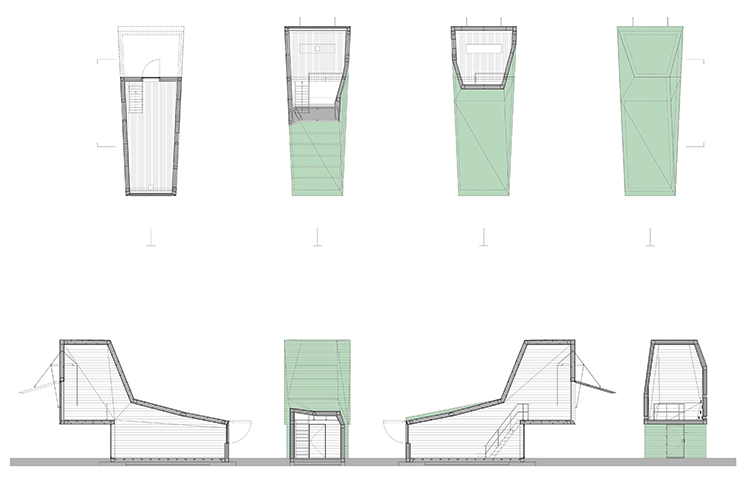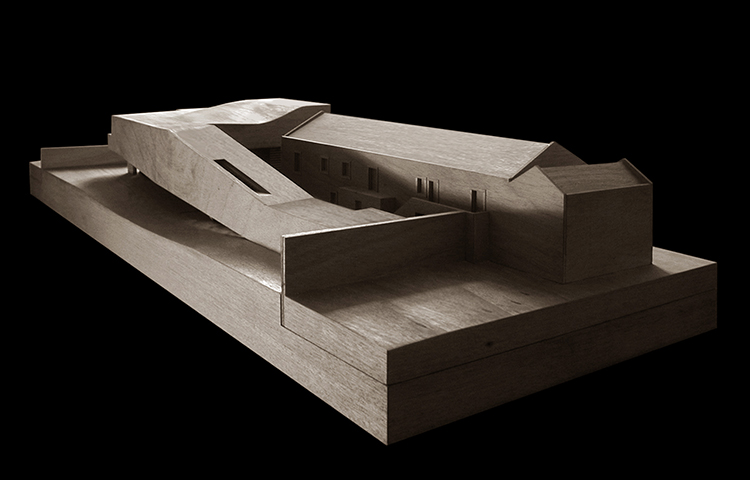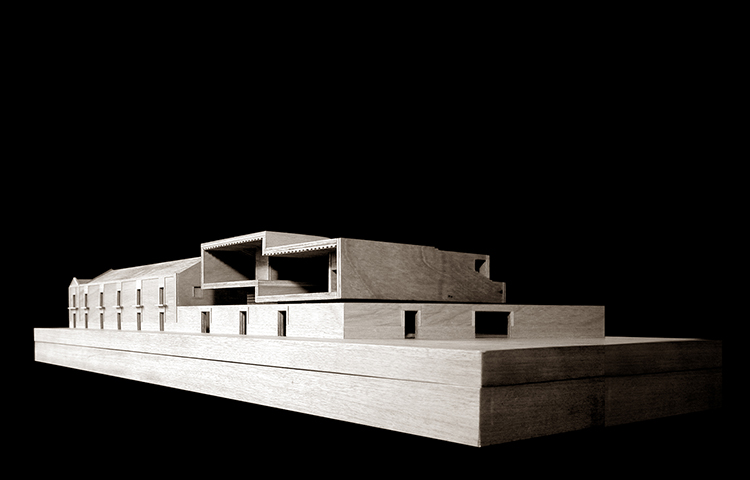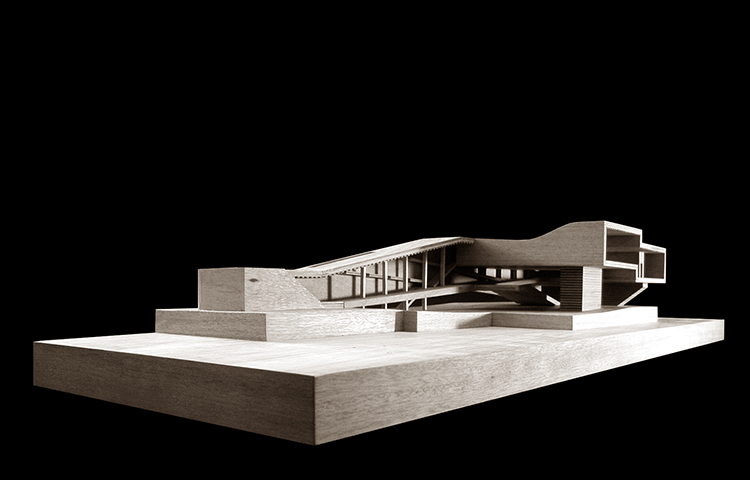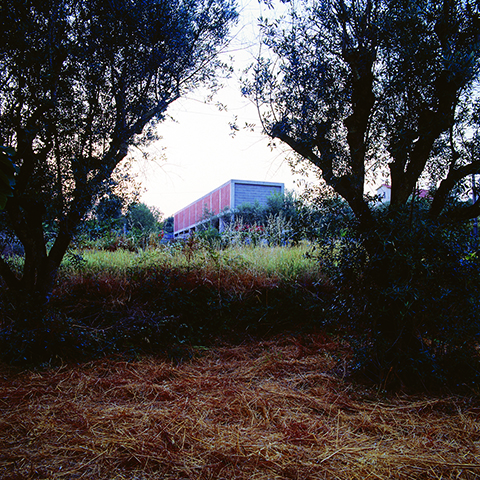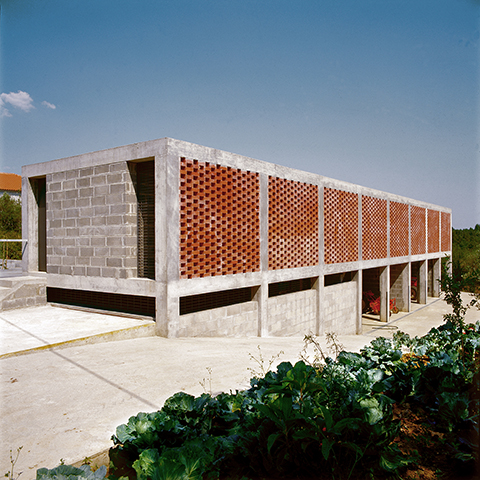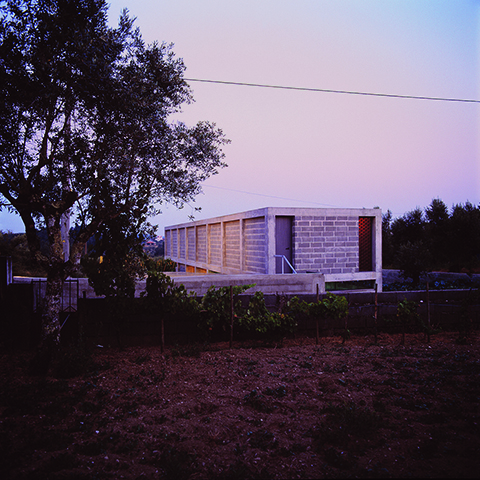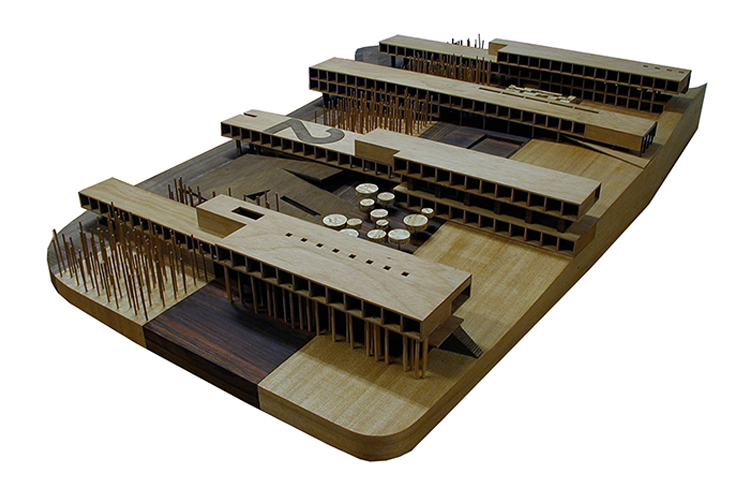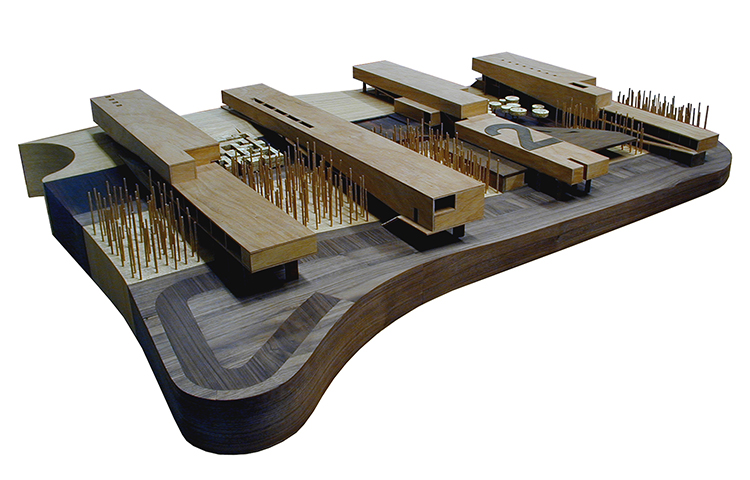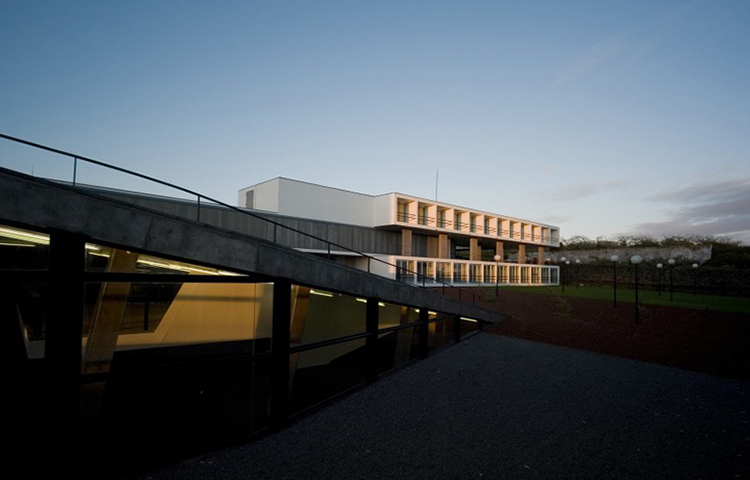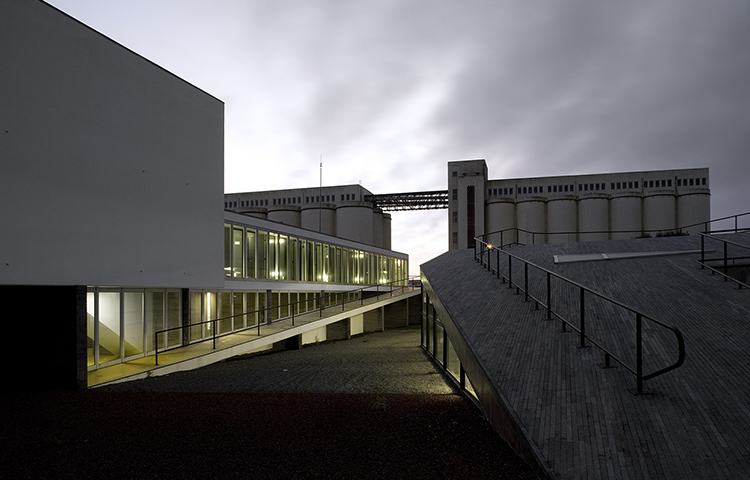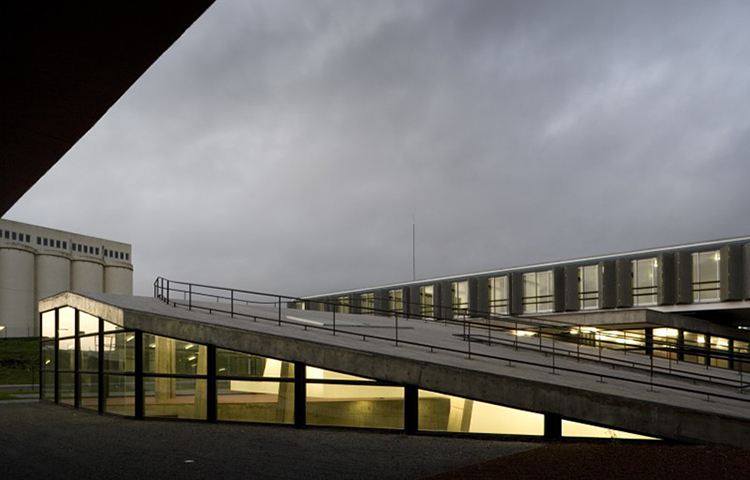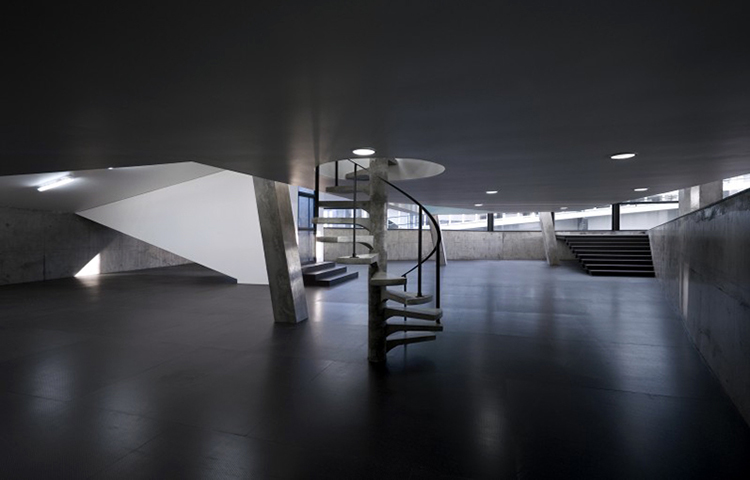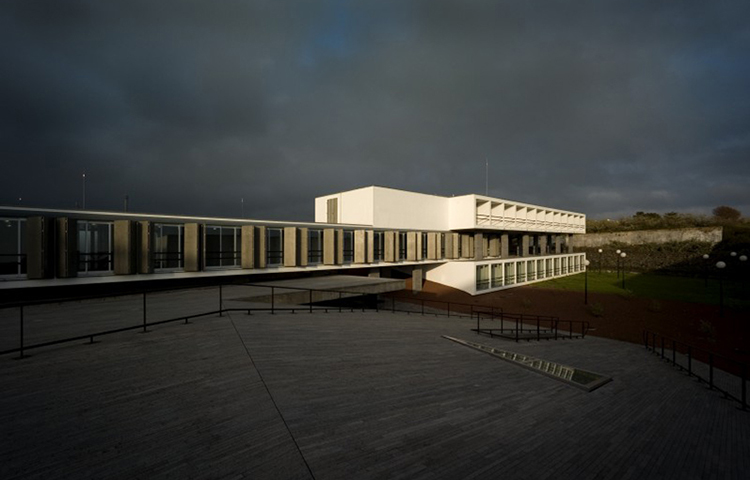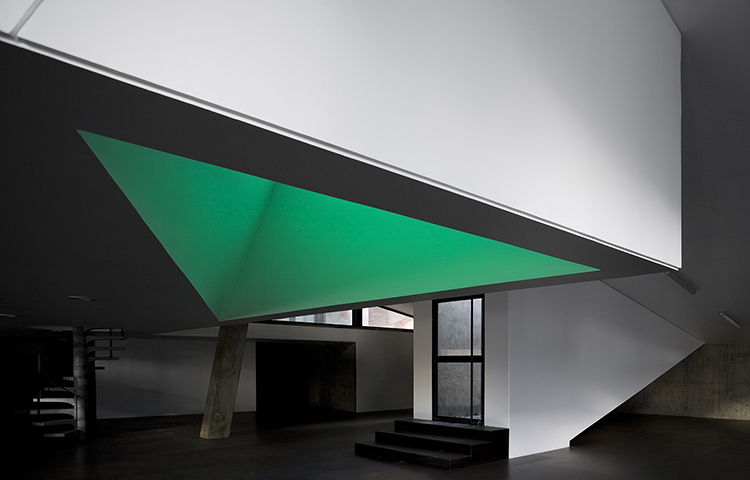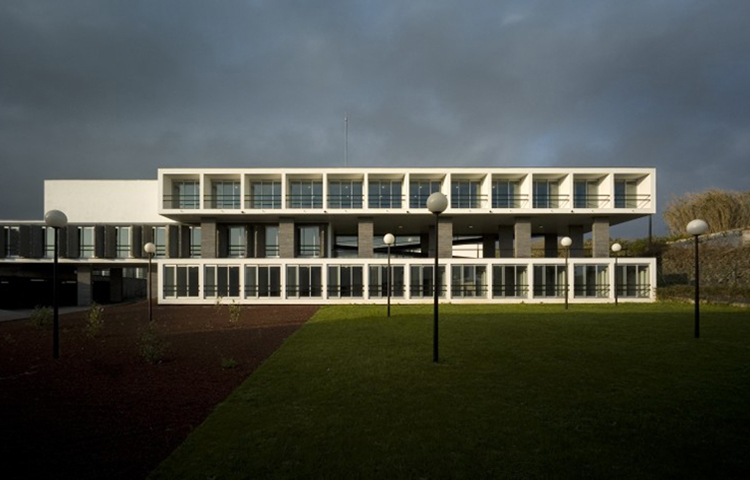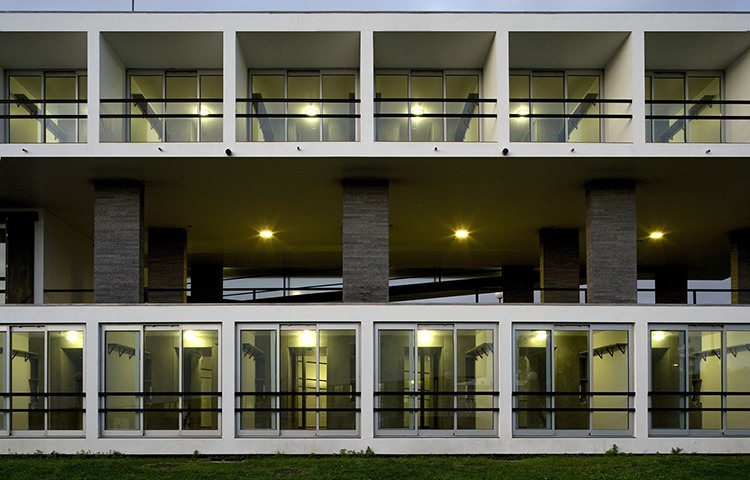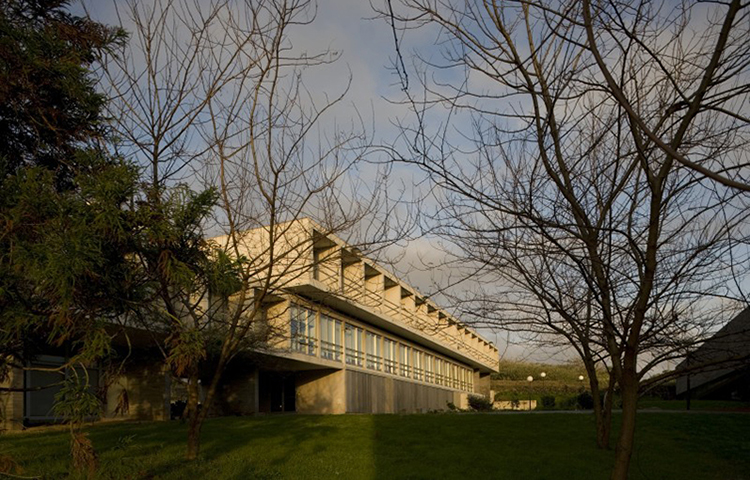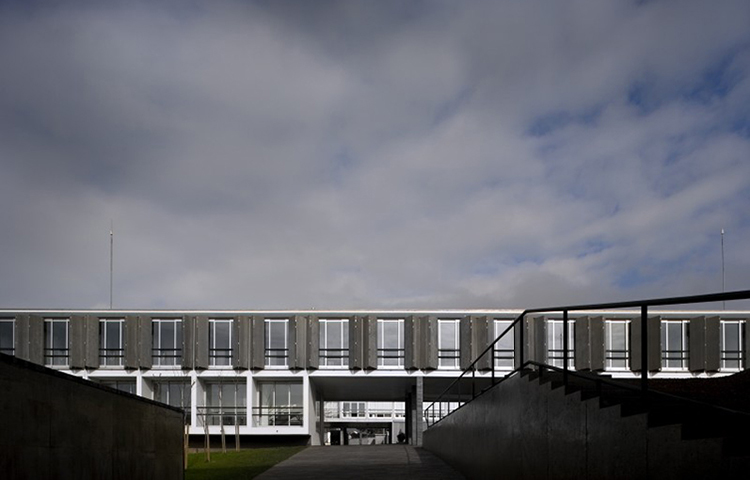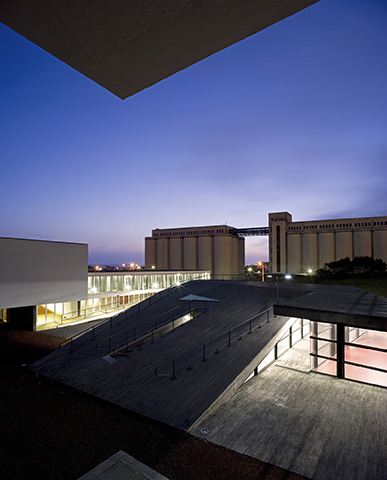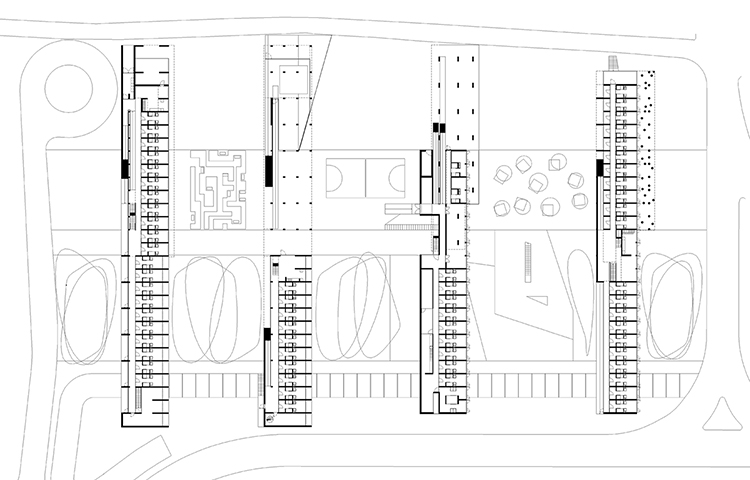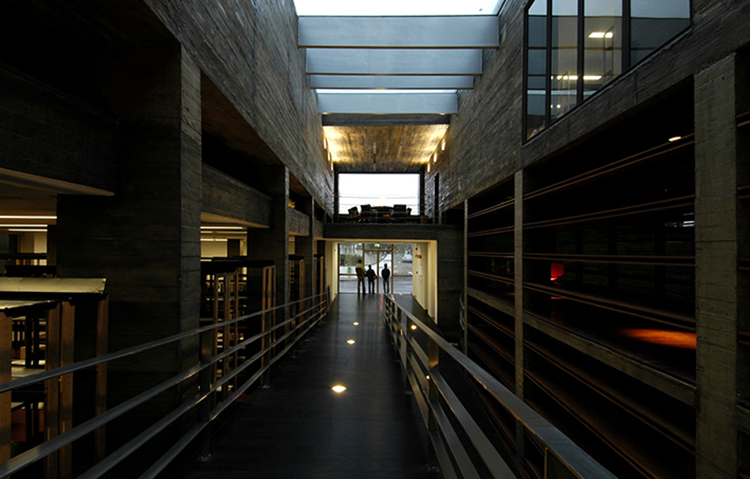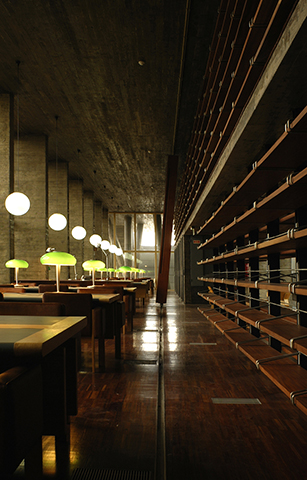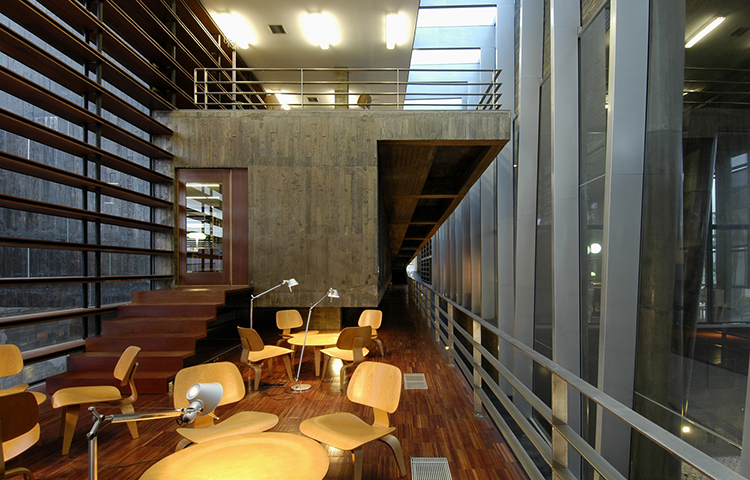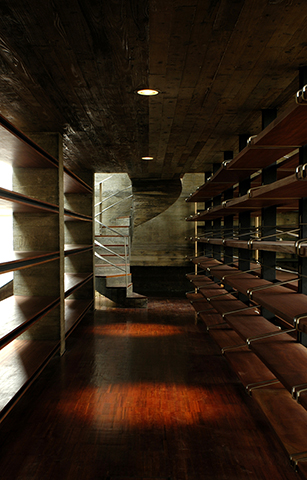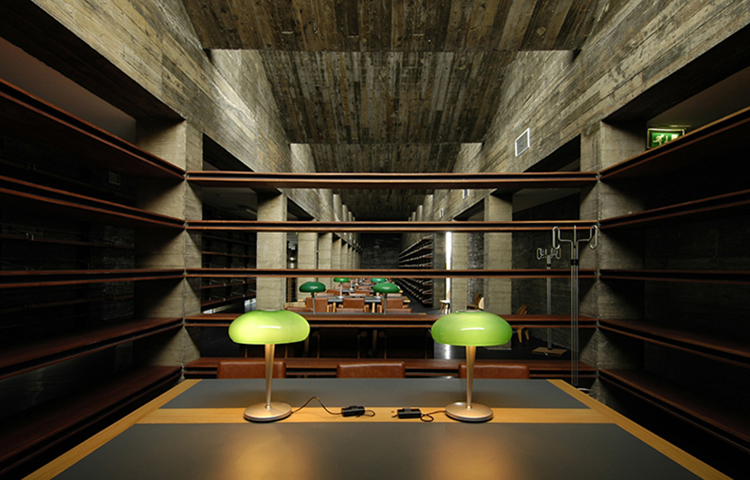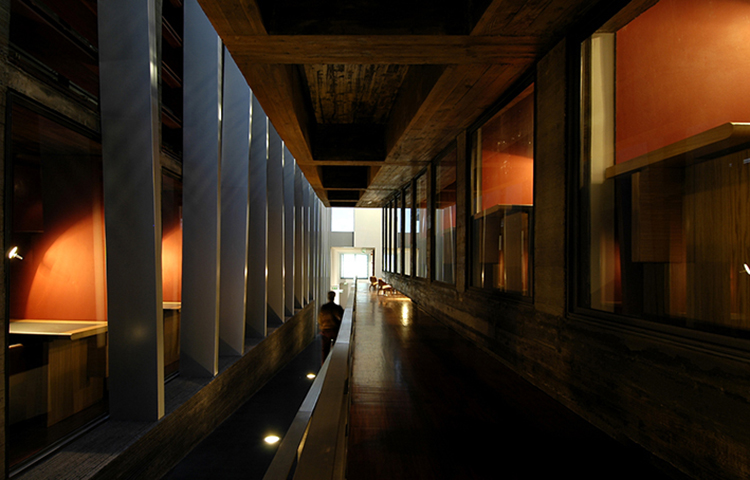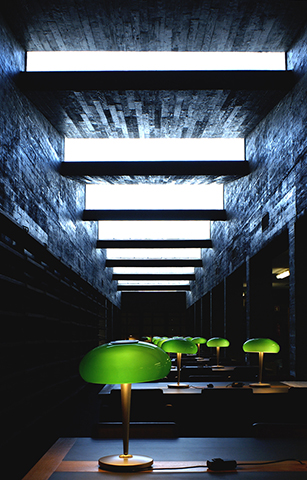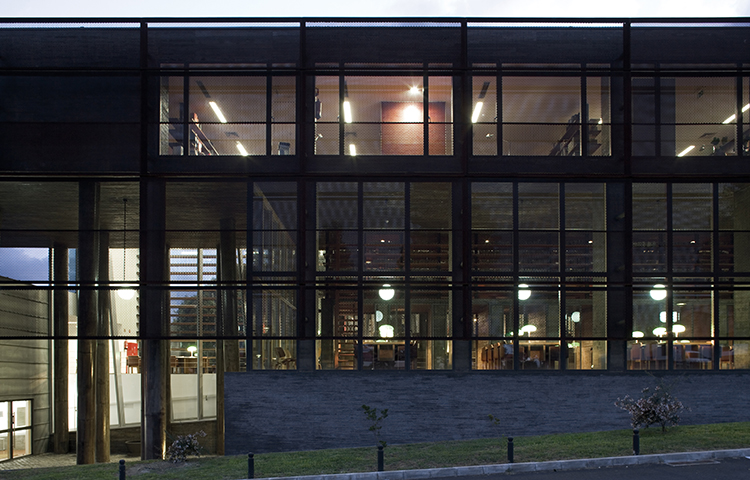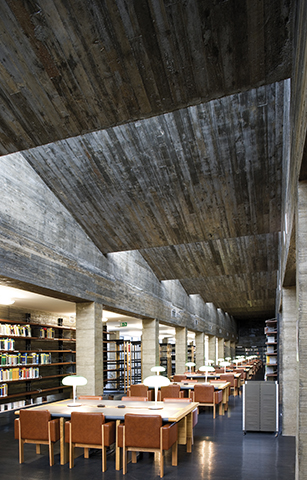[text coming soon]
[with Enrico Argentieri and Elena Maria Rossi]
Apartments, commerce and public spaces
2022
[text coming soon]
[2nd Prize in public competition; with Enrico Argentieri and Elena Maria Rossi]
Residences, study room and canteen
2021
[text coming soon]
[2nd Prize in public competition; with Enrico Argentieri and Elena Maria Rossi]
Laboratories and medical offices
2021
[text coming soon]
[with Enrico Argentieri and Elena Maria Rossi]
Cultural center, auditorium and coffeehouse
2021
[text coming soon]
- [2nd Prize in public competition; with Enrico Argentieri and Elena Maria Rossi]
New lecture hall and public spaces for the Faculty of Literature
2020
[text coming soon]
Hotel complex with spa, restaurant and public spaces
2020-...
[text coming soon]
[with Enrico Argentieri e Elena Maria Rossi]
Exhibition gallery, training and meeting rooms, coffeehouse
2019-2020
Monte das Servas gives his name to an old rural complex, consisting of buildings for housing, production and storage of agricultural products.
The set is characterized by the grammar that is typical of popular architecture present in the southern Alentejo landscape: horizontal constructions with thick vaulted walls, arches, vaults and buttresses, almost flat roofs, terraces and threshing floors.
The intervention implies a thorough rehabilitation of the existing buildings, adapting them to a low-density tourist typology. Some of the preexisting structures are demolished, others altered; resorting to the use of technologies and traditional construction systems. The process excludes the use of infrastructure usually present in tourist buildings, such as air cooling or heating systems, but also current electrical and hydraulic systems which, here, are replaced by autonomous systems produced in-house.
In addition to the intervention in the buildings, the project foresees the rehabilitation of an extensive area of territory, reintroducing the endogenous characteristics of this place into the landscape.
[3rd Prize in competition]
Hotel, spa, restaurant and public spaces
2018
The building is located on an anonymous lot, located in an expanding area of the city that, because of that, is undergoing a process of profound transformation. We propose a structure based on the combination of modules corresponding to the various typologies – single rooms, double rooms, apartments – which overlap in a half-floor system, from which the building’s shape is derived.
The project is based on the creation and systematization of prefabricated elements, built in a workshop, later assembled on site. The characterization of the building derives from the construction process: the grammary and atmosphere of each space is determined by the presence of laminated wood, used in structural elements – beams, pillars and slabs –, in finishings – walls, floors and ceilings – and in facades.
In this way, a high comfort and environmental performance is guaranteed, reducing the strict budget and time limits of the work.
Residences, commerce and public spaces
2018-2019
More than a buildings project, the University Residences are a pretext for an urban intervention, promoting the idea of neighborhood. Through it, we seek to change the dispersion of the University Campus, creating and consolidating public spaces – streets, squares and blocks -, connecting them to the city’s fabric.
At the same time, relationships are established with university buildings built in the 50s and 60s, through the appropriation of their grammars and the respective spatial models, which are the target of critical revisiting.
The functional program, consisting of student housing, commercial areas and a car park, is organized according to a hierarchical scheme that adapts to the natural slope of the land, establishing different levels that serve different functions.
[2nd Prize in international competition]
Residences, parking, shops and public spaces
2018
Considering the significance of everything that involves Troia – the fragile environmental balance, the ocean, the Serra da Arrábida -, the project designs four gardens that constitute the endemic landscape of this extensive territory marked by a mixture of geographies: the Atlantic and the Mediterranean . The gardens are delimited by circular, modular buildings, accommodating the various residential units that face the extension of the landscape, which remains protected and untouched.
In the center of the complex, the common areas of the Balnear Resort are installed: atriums, concert halls, bars and restaurants, social and health areas, sports spaces and swimming pools.
The buildings are built on stilts and constructed of assembled wood.
The project includes the regeneration of the extensive area of seafront dunes, and the maintenance of the territory’s own habitats and microclimate.
[1st Prize in international competition]
Beach resort in Tróia, Grandola
2018-2020
The intervention includes the renovation of the area of the Palacio Nacional de Queluz, the reorganization of the main access and the road system, by establishing new relations with the context. The aim of the project is to enhance the history of the site restoring the original landscape.
We are in front of an exceptional example of historical and artistic heritage.
For this reason, the proposal seeks to restore the aspects of centrality, staging and hierarchy that shape the baroque, symmetrical and monumental grammary that composes and organizes the Palace and its gardens, to achieve the position of the original project which was not finished.
The system of aqueducts is recovered, new green spaces are structured, and the system of car access and circulation is reorganized.
[2º Prize in a public competition; with Louis Ferreira Neto / Ingrid Murer, Paula Simões / Catarina Patrão, Aurora Carapinha]
Restructuring of the urban area surrounding the Palácio de Queluz
2017
The new contemporary art wing of the Lima Museum includes the construction of a new building on the south part of the Palácio de Exposiciónes. The addition will hosts an exposition gallery, a library and some classrooms for workshop and will have to establish a relation with the new museum square and the city garden.
The visible part of the building articulates the relation between the city and the museum by a new entry for the garden, which will have a proportion related with the dimension of the road and of the nearby buildings.
The tower – a kind of totem – hosts the classrooms.
The main hall, the cafeteria and the library of the museum are on the ground floor which will be open to the garden. The exposition gallery and the technical spaces of the museum are located below the new museum square.
[international competition; with Louis Ferreira Neto / Ingrid Murer]
Project for the contemporary art wing of the Lima museum
2016
The Luís Freitas Branco school is in a suburban area in expansion, made up of residential buildings, highways and commercial facilities spread in a territory which used to be occupied by industrial structures and agricultural fields.
The school, inaugurated in the 70’s, is organized around small, prefabricated pavilions, in a landscape with a strong slope.
During the years, with the consolidation of the urban grid, the borders of the school area were occupied by small residential buildings, denied the relation with the main roads of the neighborhood. Access and internal circulation were difficult, and the buildings were very degraded.
The project takes advantage of part of the pre-existing pavilions – which are recovered, so that the classrooms can be installed there –, reorganizing the entire functional structure of the school complex around two large outdoor spaces: the reception square and the playground.
The whole functional program was reorganized around two big exterior spaces: the reception square and the recreation patio. The limits of the two areas are defined by the two new buildings – the Central and the Pedagogic Building – which established internal and external relationships, by physically dividing the square and the patio, but by functionally joining them.
The circulation areas are considered spaces for living, socializing and studying. The main entrance to the complex is redesigned, in order to recover the urban relationship between the school complex and the town of Paço d’Arcos.
After the conclusion of the construction works it was noticed an improvement of the students’ academic results and a constant use of the building throughout the year.
[with a.s* – atelier de santos]
Conversion and expansion of the Paço d'Arcos Secondary School
2009-2016
The building is located close to the archaeological ruins of Bamiyan, in northern Afghanistan, in an area of great cultural significance, considered a world heritage site by UNESCO. It is a rural, rugged valley, framed by the mountains that surround the landscape, strongly linked to the gigantic statues of Buddha, which until 2001 existed on its slopes.
The building smoothes the topographical difference between the two levels of the land, connecting them, from the inside and from the outside. Entrance is on both levels, clearly organizing the program, which is divided into two distinct areas: the spaces for education and research – on the lower floor – and the exhibition room – on the upper floor, benefiting of wide and high spaces. A central courtyard draws a green oasis, which is key to the articulation of the different floors of the building. There is no visual separation between the spaces, connected by the patio, but also by the circulations and atriums.
In order to protect the cultural and social heritage of this place, as well as the community itself, local materials and construction systems are used, implying less energy expenditure in its production and transport, promoting the local economy.
[international competition; with Pedro Silva Architects]
Bamiyan museum and cultural center
2015
The renovation project of the Abrantes riverside runs for 85 hectares, along the Tejo riversides. The modification makes new relations with the city, the river and with the landscape, by altering the perception of the landscape and the way of how it is enjoyed from the population of Abrantes which can benefits of the natural characteristic of the area.
The Nautic center is one of the main elements of this strategy. It is where all the sporting activities linked to the river are concentrated: power boating, rowing and sailing.
The building consists of two floors, connected by an exterior ramp. Downstairs there is a patio, a warehouse for collecting boats and a workshop. On the upper floor there are the rowing training tanks, gym and changing rooms, and a cafeteria open to the riverside landscape. It ensures that the building can be partially flooded, without compromising the safety of the equipment and its functioning.
For its construction is used a wooden structure covered with tile.
Building maintenance will be similar to the process of maintaining the boats themselves.
[3º Prize in a limited competition, with a.s* – atelier de santos]
Abrantes nautical center
2008
The Meia Praia Hotel is a touristic complex in the seaside Lagos area, close to the harbor of the city. The complex includes several buildings: a hotel, a residential touristic building and smalls week-end houses, integrated in a plan which establishs new relations between the urban area and the beach.
The intervention makes an ecosystem from the natural condition of the place. This ecosystem has different type of areas: a small forest, a lake, several gardens, the existent dunes and extended beach, where the touristic complex is located. Each of these buildings is a natural transition between the urban grid and the beach, exploring the potential of both spaces which, in this project, are combined.
The buildings are key elements of this natural landscape. The form and the function of each of them is a consequence of its position in the park and of his relationship with the surrounding landscape; which allows a hierarchy in the uses within the territory.
(with a.s* – atelier de santos, with Nuno Merino Rocha)
Hotel and residential complex
2007
Café Samt & Seide [Velvet and Silk Coffee] is the name of the installation designed to host the exhibition of the I Triennial of Architecture in Lisbon, built in the Edifício da Cordoaria, in Lisbon.
For the assembly of the exhibition – which shows a set of recent architectural works and projects – suspended fabrics are used, which compartmentalize the space, defining distinct areas and environments. The use of different fabrics – some opaque, others semi-transparent, sometimes light and flowing, sometimes heavy, with color, white or black – creates a succession of spaces of a different nature, labyrinthine, which reveal [or hide] the contents of the show.
At the end of the exhibition route, there is a café and a small auditorium.
The work takes up the work Café Samt & Seide, by Mies van der Rohe and Lilly Reich, at the Berliner Funkturm, in 1927.
[with a.s* – atelier de santos]
Exhibition project for the Lisbon Architecture Triennale
2007
The Lions Factory is an old industrial abandoned complex, located on the outskirts of the city of Évora. Although the building does not present significant quality or heritage value, it is understood that the characteristics of the industrial complex allow to accommodate the School of Architecture and Visual Arts, endowing it with formal, functional and spatial qualities compatible with the new program.
The intervention is summed up in a simple, surgical and punctual operation, which involves removing from pre-existing buildings everything that is unnecessary, and leaning on them the elements necessary for their adaptation to new uses.
The project takes advantage of the spatiality, typological and morphological characteristics of the existing buildings, adding a set of elements that are distinct from the original structure.
The relationship between preexistences and the new elements that overlap them results in a hybrid solution, which assumes the accumulation process as the most characteristic element of the intervention.
[3rd Prize in a public competition by previous qualification, with a.s* – atelier de santos, Paulo André Rodrigues]
School of Architecture and Visual Arts, University of Évora
2007
The Labyrinth of Saudade is a model for the Portuguese House.
All the spaces necessary for the constitution of the House coexist in a solid parallelepiped, adapted to the limits of the land. The shape and layout of the volume can be changed in order to adapt to the piece of land where they are located, while maintaining their general dimensions.
The construction is made of a mesh whose design repeats the geometric imbrication of an embroidered towel. The type of embroidery used on the structural façade will indicate the social class of its inhabitants: Rendas de Bilros for the upper class, Bordado em Ponto-Cruz for the upper-middle class, and Crochet for the middle class. The remaining classes are not entitled to their own home.
The house is divided into two types of distinct spaces: those that are meant to be seen – the Apparatus Spaces -, and those that should not be seen – the Intimate Spaces. Between one and the other, spaces of ambiguous nature coexist. The Apparatus Spaces are exposed to the outside.
The Intimate Spaces are completely enclosed by the embroidery, allowing them to develop the most reserved activities inside.
Each of the spaces contained in the house can have one or more accesses, depending on the type of Portuguese family present, their affective and sentimental ties – love, indifference, passion, sadness, curiosity, contempt, excitement, hate, envy -, and the way each individual relates to their family.
[with a.s* – atelier de santos]
Sketch for a Portuguese House
2005
The Ellipse Foundation brings together a collection of around 900 pieces of contemporary art, including works by authors such as Dan Graham, Olafur Eliasson, Cindy Sherman or Steve McQueen. In 2004, the institution acquired a set of warehouses, with the aim of creating an art center there, which would serve as a deposit for the collection, enabling exhibitions and other events to be held.
The project reconverts the interior of the three pre-existing warehouses, creating a set of rooms and exhibition galleries, conference and projection spaces, work offices, archives and warehouses for the collection.
The spaces for the exhibition are designed to accommodate interventions that change their own original configuration. Likewise, the exhibition circuits themselves can be changed, adapting to the various interventions that will be carried out by the exhibited artists.
[with Pedro Gadanho, a.s* – atelier de santos]
Exhibition gallery
2005-2006
The Summer Pavilion is a small retreat, located in a pine forest near the beach, in continuity with a preexisting construction. It accommodates a set of spaces intended for the leisure of a small family, being used only during the summer season. The internal spaces are divided by sliding wall-screens, allowing flexible occupancy and a connection between the various compartments, thus adapting to the number of occupants the pavilion may have. Likewise, spaces can be fully open to the outside; transforming, some of them, into covered verandas.
The building, supported by stilts, is made of wood. Only one structural profile [20 cm x 20 cm] is used, in columns and beams. The remaining constructive elements [walls, flooring and ceilings] are made of plank. All elements are assembled, so that metal fixings are not required.
[with a.s* – atelier de santos]
Seasonal housing
2005-2007
Among the labyrinth of channels, salt marshes and small islands that here and there punctuate the landscape of the lagoon, stands the Municipal Center for Environmental Interpretation of Aveiro. Here visitors to the Ria Natural Park are welcomed, introducing them to the biodiversity of the Vouga estuary.
The building is located on the coastline, at low tide. The tidal movement – controlled by the Ria’s system of dikes and floodgates – submerges part of the base of the building, allowing direct access, from the interior, to small boats that take visitors to navigate the lagoon.
The Center is conceived as an observatory. Inside, an exhibition area and an auditorium coexist, which stands up from the ground to offer a panorama of the surrounding landscape. Through four huge and deep windows, four views of the territory are framed: the serenity of the lake’s water plane, the ripple of the vegetation that grows on the dikes, the slow movement of the sky and, in the distance, the city’s profile of Aveiro.
For the construction of the Centre, we used former builders from the Aveiro shipyards, which had been deactivated in the meantime. The wooden parts of the formwork were built by two carpenters over the course of four years, and the metallic elements were manufactured by naval locksmiths.
The construction of the building spanned more than a decade.
[1st Prize in limited competition; with a.s* – atelier de santos]
Ria de Aveiro municipal environmental interpretation center
2003-2016
Objects Cruzados is the title of an installation designed to host five artworks by five plastic artists.
The work is inscribed in a volume of 41 x 12.50 x 6.60 m. Its interior contains the five works of art; which are no more than five spaces of different nature and typology, designed in co-authorship with each of the artists.
The installation results from the combination and form of these five spaces, and also from the multiple paths that link them together.
[with a.s* – atelier de santos, Paulo Mendes, Leonor Antunes, João Pedro Vale, Cristina Mateus, Miguel Rondon]
Pavilion for temporary exhibition
2003
The DIY system consists of a single prefabricated concrete piece, which itself contains a floor, ceiling and structure. The shape of the piece allows its horizontal modulation – creating corridors for automobile circulation and side areas for parking – and vertical – allowing its assembly on levels at various heights.
Given the slope of the floor and ceiling, the overlapping of the pieces is done on half-floors. This solution dispenses with the use of ramps, reducing the area for car circulation. Likewise, the overlapping of parking spaces leads to a reduction in the space occupied by each vehicle.
The solution reduces the area of about 25% compared to the traditional system of car silos. Likewise, the cost of construction are reduced compared to a traditional park building. The system allows the construction of horizontal or vertical silos, and their deployment on sloping terrain.
The shape of each solution results from the number of modules used and the way they are conjugated.
[with a.s* – atelier dos santos]
Modular system for a car park
2003
The project foresees the occupation of the ruin of a 16th-century building – the Casa do Risco – where, in the past, the parts of the ships that were built in the shipyards of Vila do Conde were designed. The ruin, located on the riverside of the city, is partially buried by an urban area that has since been built upstream, at a higher level.
Instead of recovering the House, the project aims to maintain the ruin. Inside, there is a building that joins the two heights, serving as a public path between the waterfront and the city. This building houses an exhibition gallery, a cafeteria, and an environmental monitoring laboratory. The walls of the Casa do Risco ruin are covered with slate, allowing children to mark them with drawings of boats and other stories.
The intervention foresees the creation of a garden at an upper level, the consolidation of the support walls of the marginal, and the recovery of an old cod dry area, now converted into an area for bathers.
[2nd Prize in limited competition; with a.s* – atelier dos santos]
Educational Center for the Environment
2002
The building marks the entrance to a new urban park in Vila Nova de Gaia, drawing a promontory over the riverside landscape. Inside, there are visitor support spaces, exhibition rooms and an environmental monitoring laboratory.
The internal route is made by two intersecting galleries, one low, opaque and elevated – with a window facing the river -, the other tall and transparent, relating to the surrounding natural space.
The Center is entirely built in wood.
[4th Prize in public competition; with a.s* – atelier de santos]
Exhibition gallery and environmental laboratory
2001
The watchman’s house is the entrance building in Ponta Delgada’s garden.
Downstairs there is an information desk, which serves as a ticket office for special occasions. On the upper floor there is an observation post, facing the interior of the garden, where the Garden Guard is installed.
Every time the Guard goes to his work station, it is necessary for the observatory’s door to open. For this, the Guard will have to sit on a small bench, connected to the pulley mechanism. It is the Guard’s weight [132 kg] that activates the pulley mechanism, opening the shutter, thus allowing an overview of the entire perimeter of the park. In the same way, the moment the Guard stands up, the mechanism lowers the shutter, closing the window.
In this way, it is possible to perceive at every moment, and at any point in the garden, the presence [or not] of the Guard in his house.
[with a.s* – atelier de santos]
Garden concierge and ticket office
2000-2001
The building occupies a land adjacent to the Palacete Vicente Ferreira, a construction from the XVII century, with relevant architectural and heritage characteristics.
The project joins both buildings in order to house and display the anthropological and ethnographic collections that constitute the main collection of the Casa da Cultura of Ribeira Grande. In both buildings, there are a number of spaces to support the museum’s operation, a room for temporary exhibitions, an auditorium and a cafeteria.
The museum is designed to continue the exhibition circuit that begins at the Palacete. The route links a set of galleries, with distinct characteristics, related to the pieces to be exhibited. Each of these spaces is an opportunity to look at the palace and the city. The exhibition path culminates in the roof of the building, offering the visitor a wide panorama over the landscape of the north coast of the San Miguel Island.
The new building is constructed of concrete. The Palacete is undergoing restoration, maintaining its original typological structure and construction system.
The project includes the design of the Museum’s gardens.
[1st Prize in public competition; with a.s* – atelier de santos]
Project for the restoration and expansion of the Casa da Cultura in Ribeira Grande, Azores
1999-2003
Here the confluence of the Tagus and the Zêzere announces the delta. Land and water mingled, a landscape based on indecision, a silty, unstable street where the vegetation haunted by the floods does not recover. In the territory of Ribatejo, Lusitanian horses and herds of toros inhabit the dilated bed of the river. Vague expanses, small white buildings with basic typologies. A compromise between land and water. To construct an agricultural building in Aldeia do Poço Redondo near Tomar, Pedro Machado Costa took up the typology of Espigueiros, a sort of traditional corn or grain granaries, volumes detached from the body of the farms that mark the environment in a brief stroke.
Without further pretending to be useful, these small parallelepipeds of stone perched on stilts are often the object of special treatment, of a sentimental gesture that elevates above the function, and which moves. This is the case with this contemporary agricultural building, the first work of the young architect who developed a bold production.
Shifting into the contemporary anonymity of the box, Machado Costa is freed from a literal cover of the Espigueiro and is no longer bringing the program into the picture. From tradition, they have recovered architectural elements such as openwork walls constructed of brick – rather than wood or stone – which are bathed in the interior in a half-light of lace. They thus gave the building the most apt expression, the closest response to the existential nature of this architecture for work – its modesty.
From which is one of the most beautiful projects in the world.
Dominique Machabert, in Techniques and Architecture
[com a.s * – atelier de santos]
Agricultural storage
1998-2001
The site is part of an industrial area outside the capital, Ponta Delgada, a mixture of old industrial buildings and mediocre suburban housing. After all, as Manuel Gausa wrote, the contemporary city cannot continue to be assimilated to a single ideal place – to be completed or rebuilt – nor to a single or possible formal model, but should rather be considered as a multiple, decomposed and bastardized space, dynamic and perpetually incomplete made up of interactive and connected coexistences and evolutions.
This project can be described as the Place of Places, as a result of a negotiated approach between buildings and landscape. The components of the program [housing and related structures for three hundred students] are distributed over four buildings suspended over a sequence of strips of gardens, each with different characteristics.
The parking strip and the urban street act as a connection area; the green band is a visual frontier, the central street manages the internal distribution, while the events line is the place where things happen: an orange grove, a playing field, a garden and a maze for lovers, a cycle path and finally, a multipurpose green area.
It is a work between the poetic and the pragmatic, which has brought something new thanks to an original approach to architecture, in which modern tradition blends with contemporaneity. By relentlessly exploring new avenues for architectural practice, with this project Machado Costa sets a turning point for architecture.
Carlos Sant’Ana, The Student House, in Domus 913; pp. 38-42.
[1º Prize in public competition; com a.s * – atelier de santos]
University residence complex
1998-2007
The Library is a small building located at a residual end of the University Campus. It rises from a small block, on which an aerial volume is juxtaposed, which will rest on the outer edge of the enclosure, re-composing the public street to the university campus.
The building is axially crossed by a ramp, inscribing an internal fracture that organize it, from which a synopsis of the space itself is memorized: a cavernous place, with overhead and side lights, intercepted by maximized structural elements, beams or pillars in its plastic potential. The overlapping of historically antagonistic compositional themes – pillars plus walls, for example – is cumulative; allows one to submerge in a world that refers to an experimental hypothesis, a process built on suggestive hesitation.
Pedro Machado Costa works on a structural complexity, in a less emphatic condition in Portuguese tradition, which is reflected in the materiality of the building, in the way the volumes are built in the defiance of gravity: almost an expressionist imbalance. With the exception of the building scale, which is used contextually, any material elements connoted with a localized impression are removed.
The Library draws on different stories, in a break with its roots in the anti-classicism of the Russian constructivists. Thus, projects like this one make it possible to foresee, for Portuguese architecture, paths traced in less smooth molds.
Ana Vaz Milheiros: Português menos Suave, in Público
[1st Prize in public competition; with a.s*- atelier de santos]
